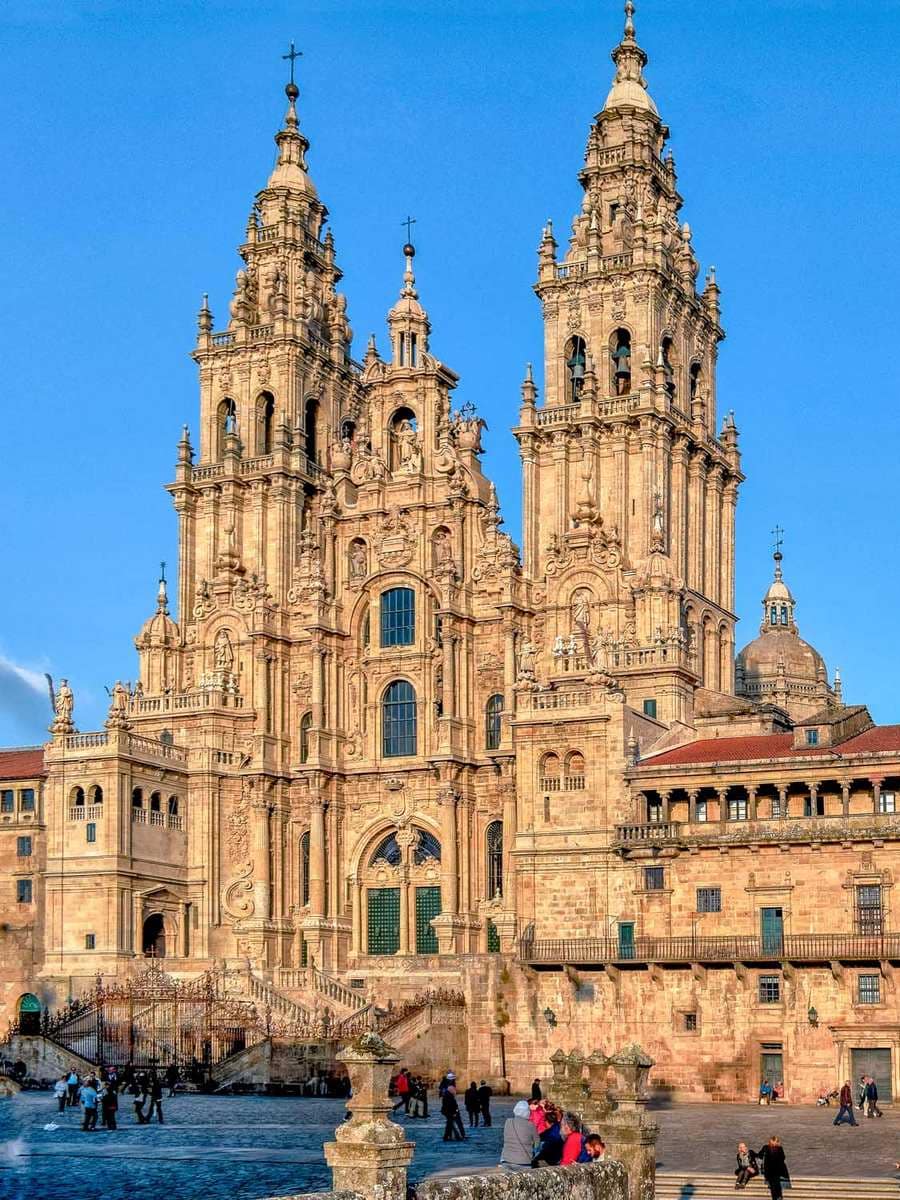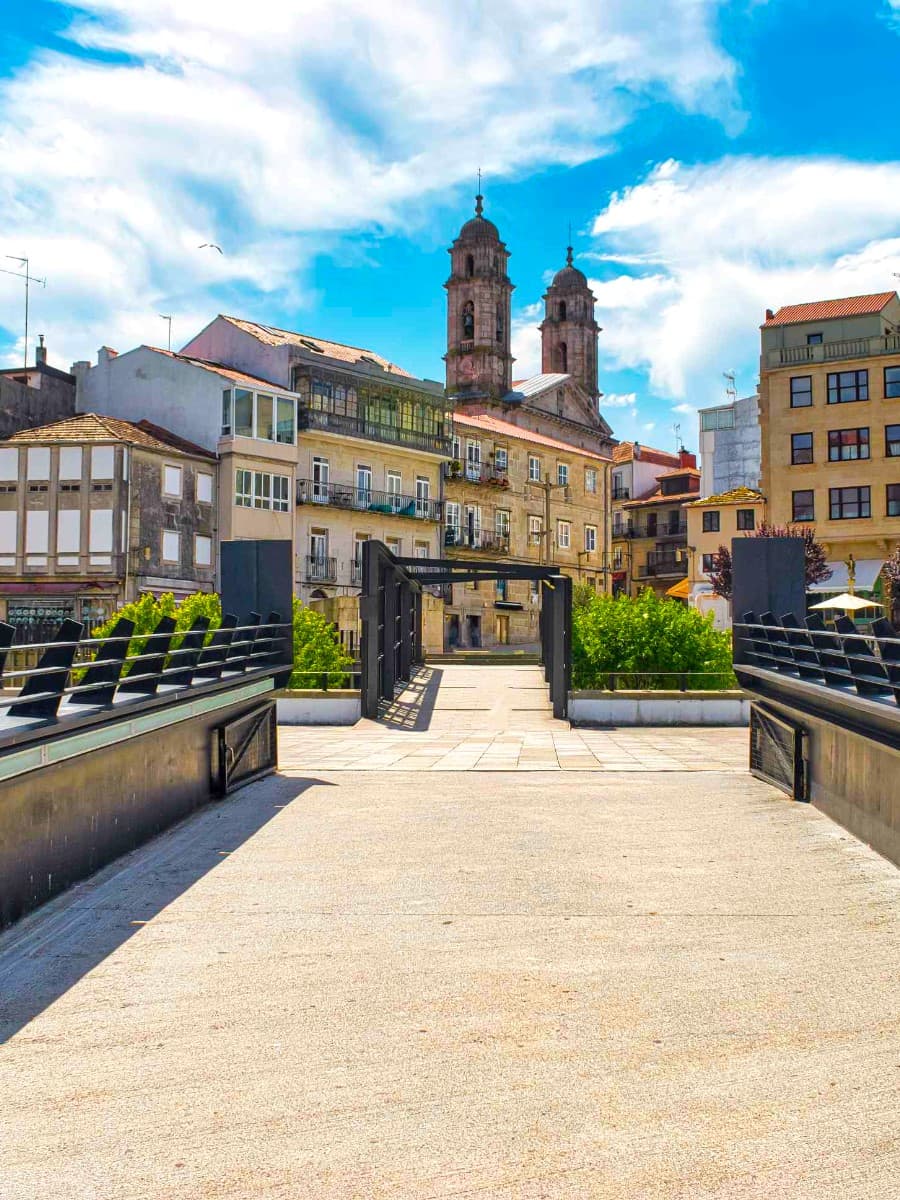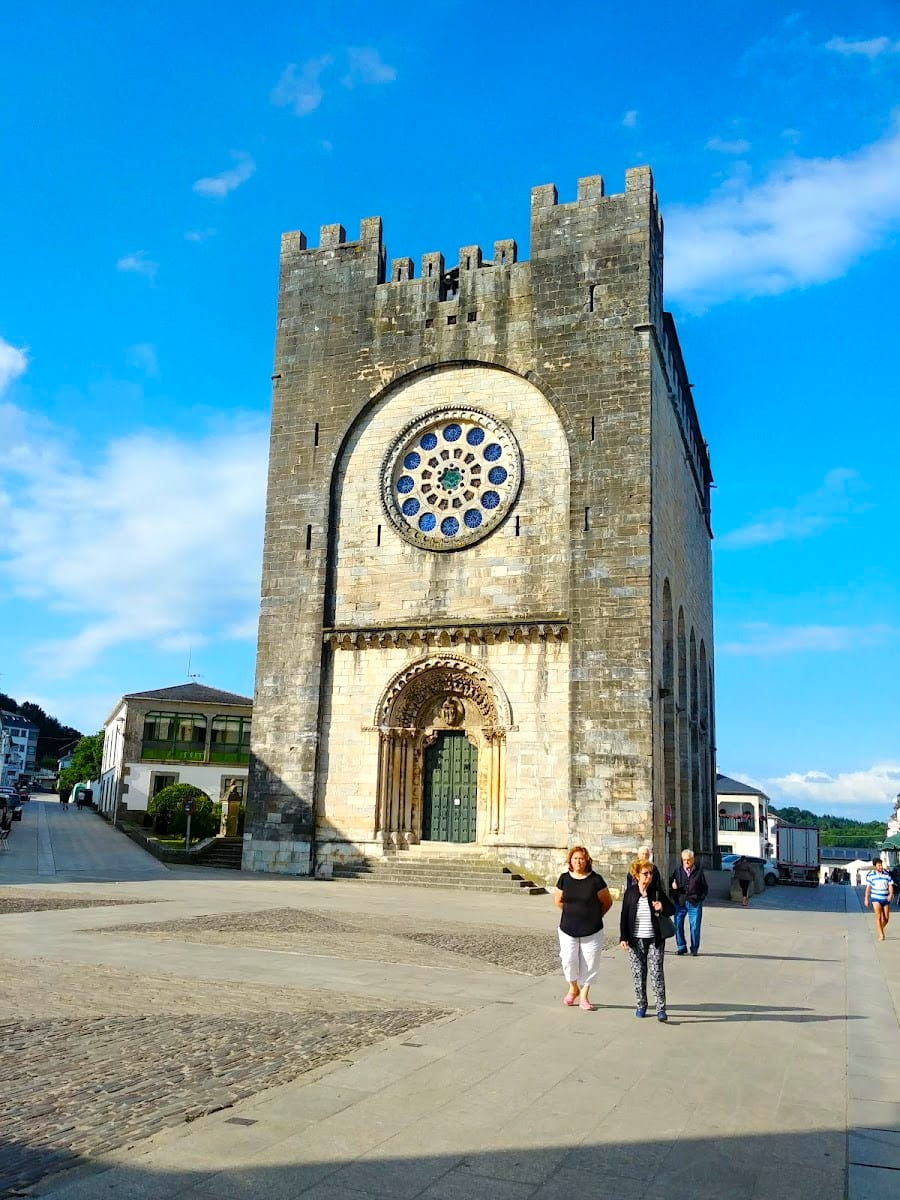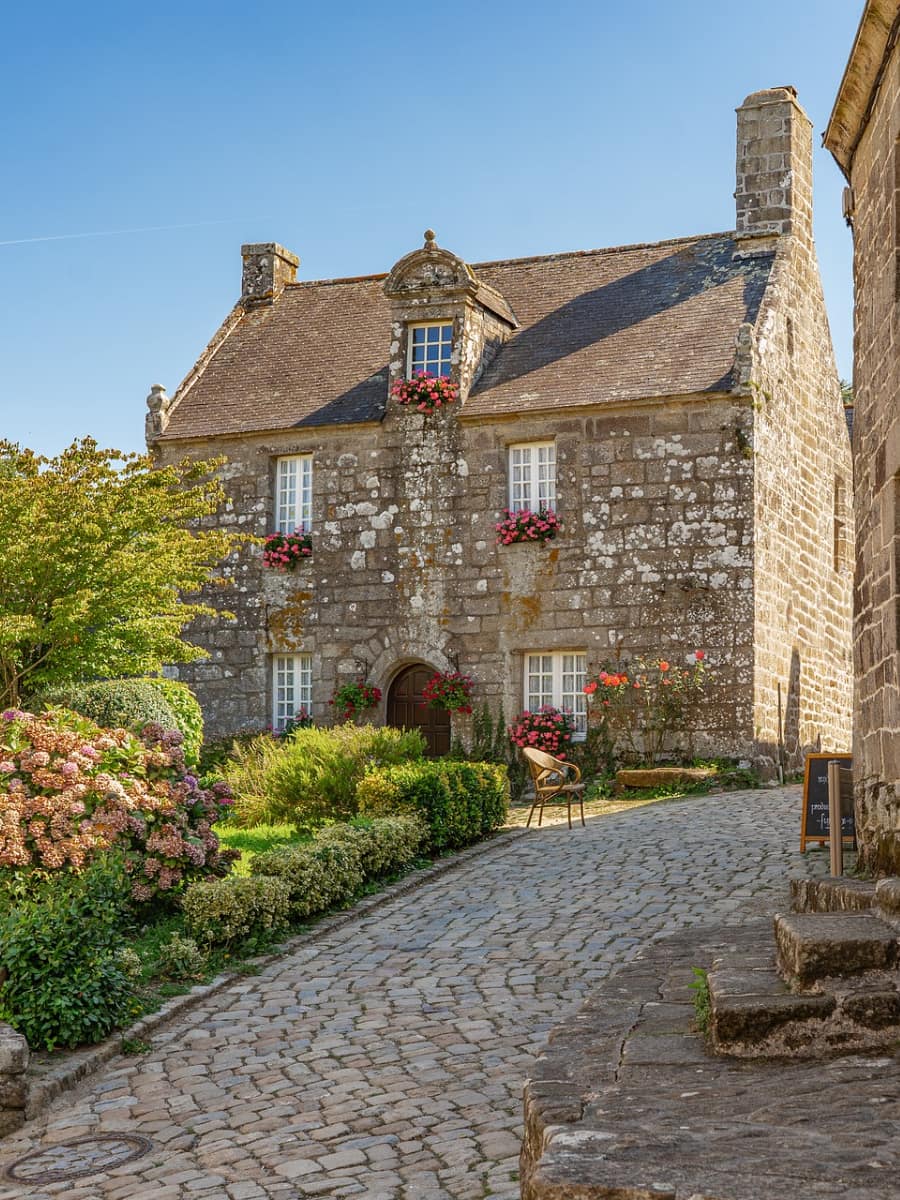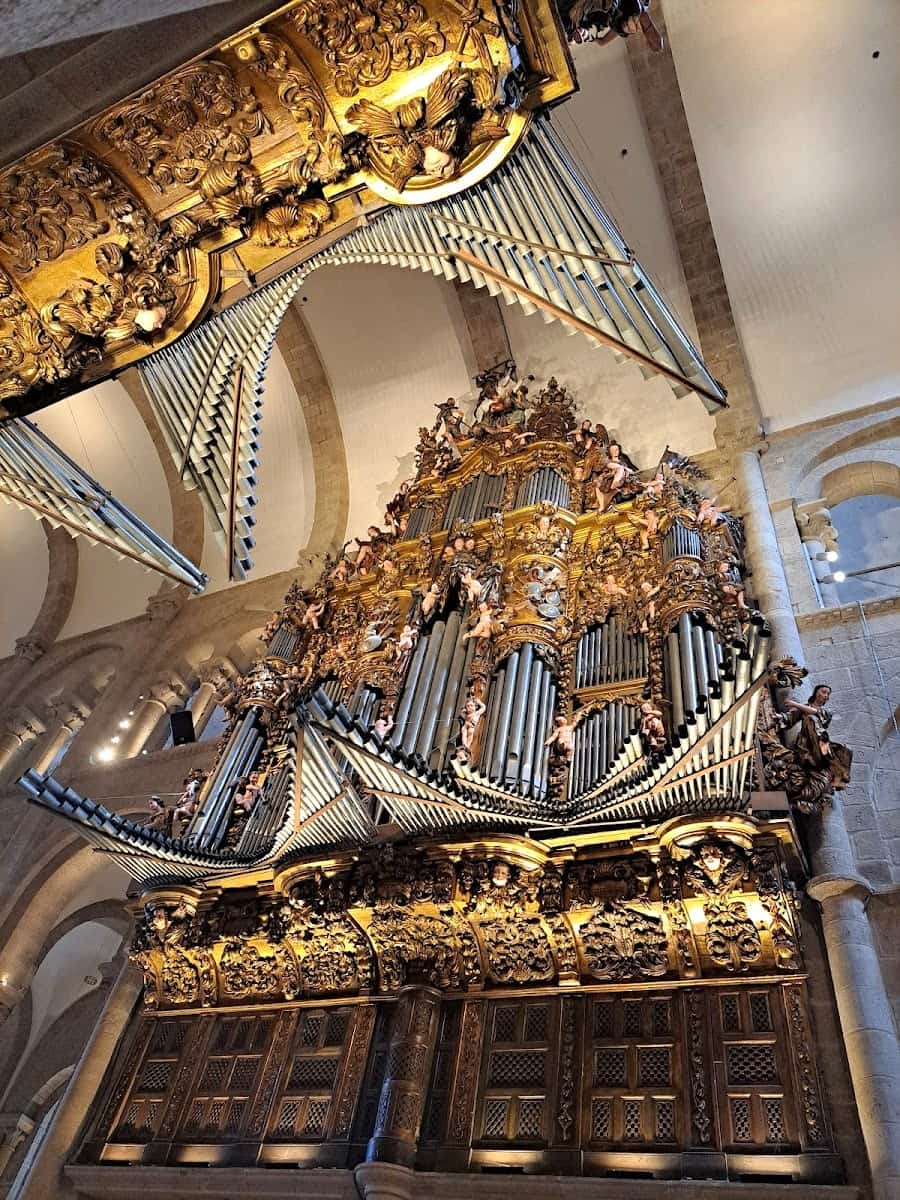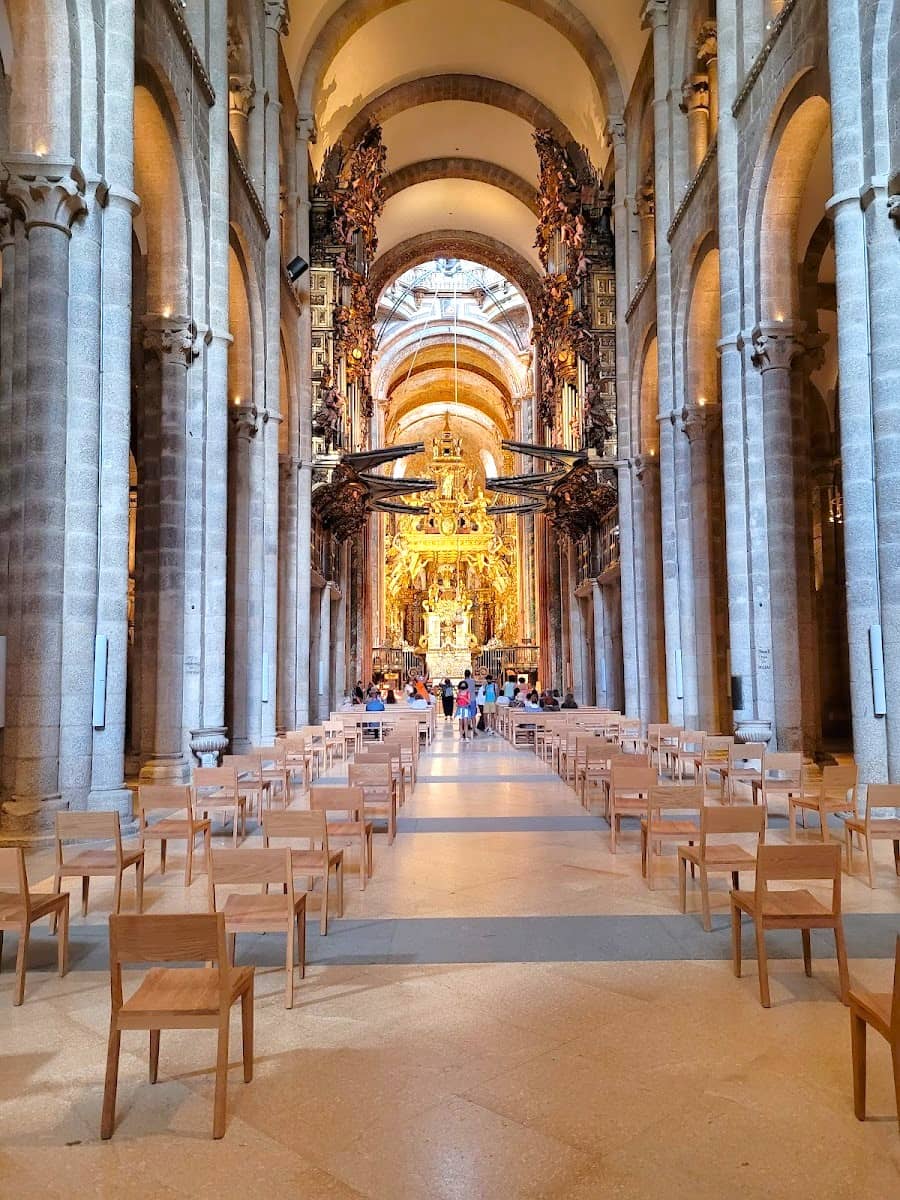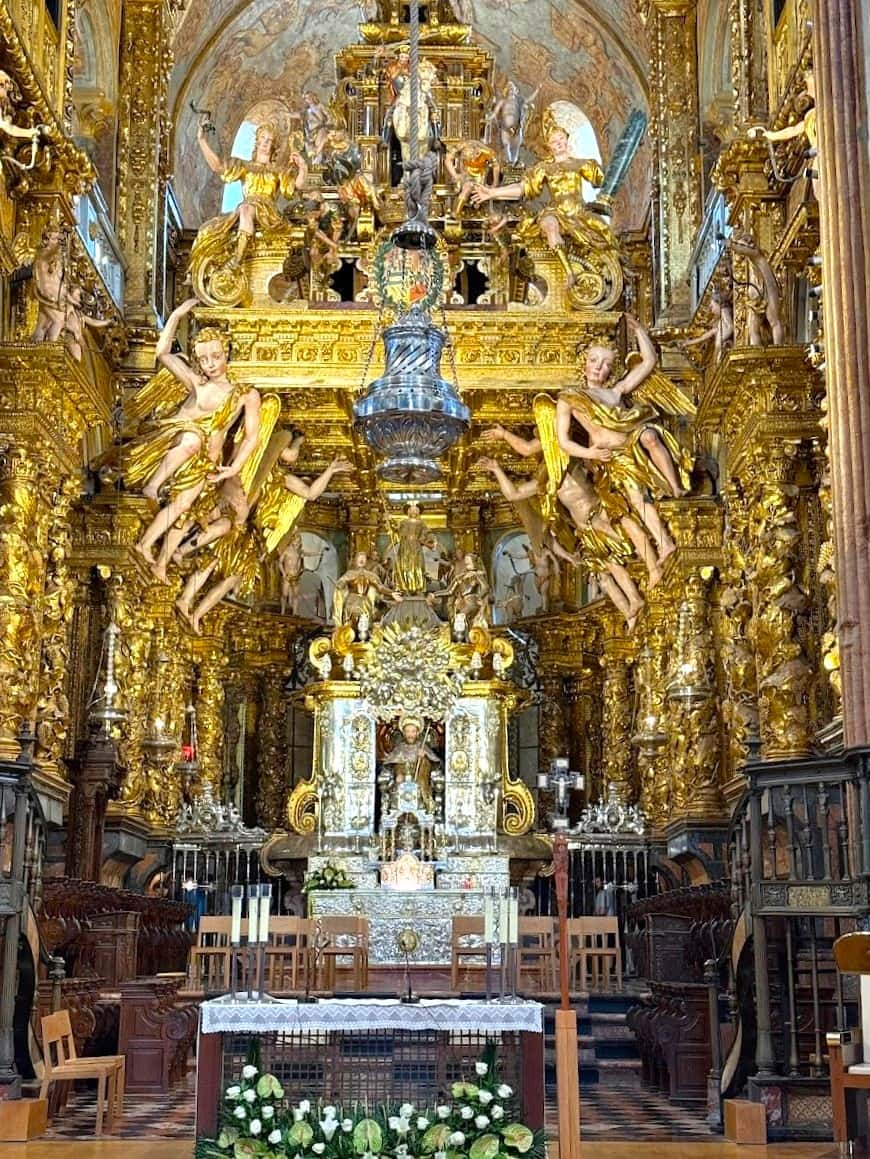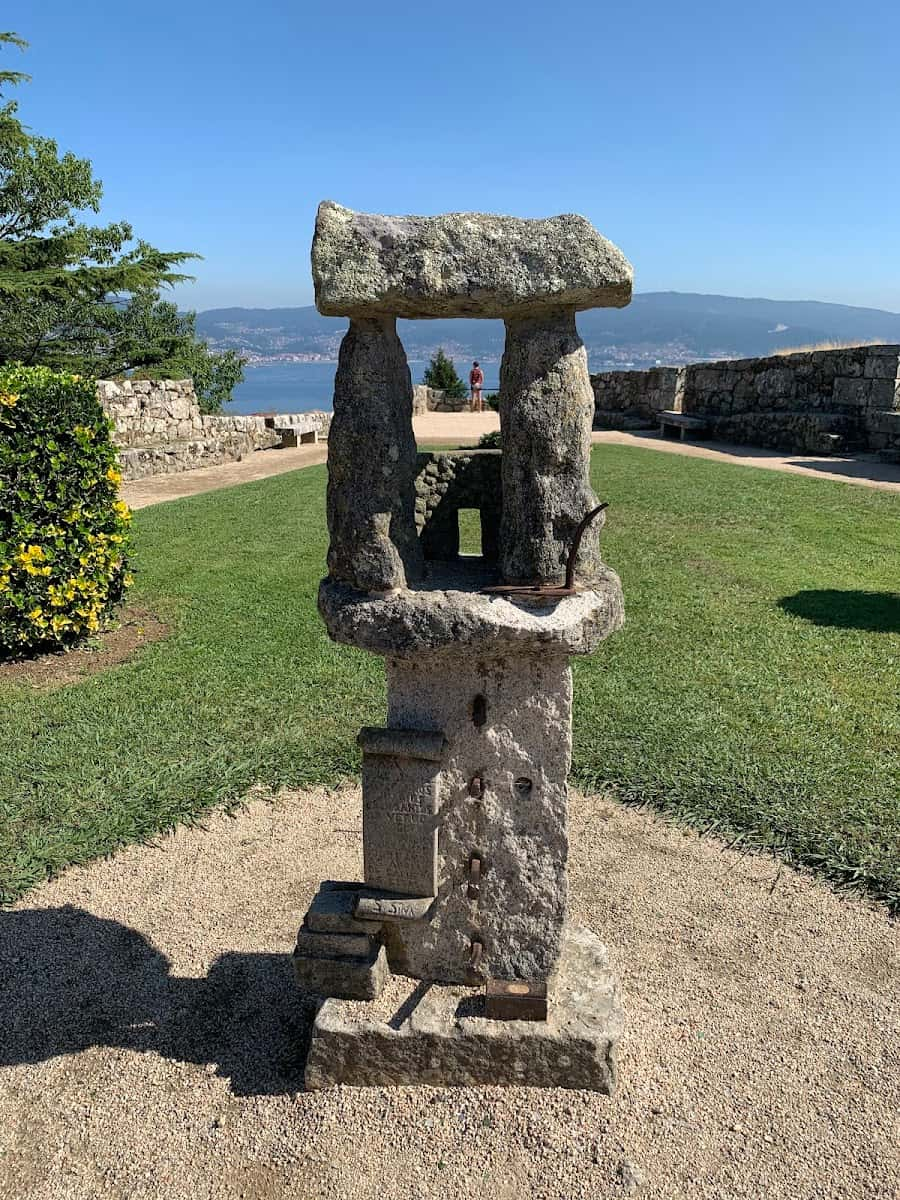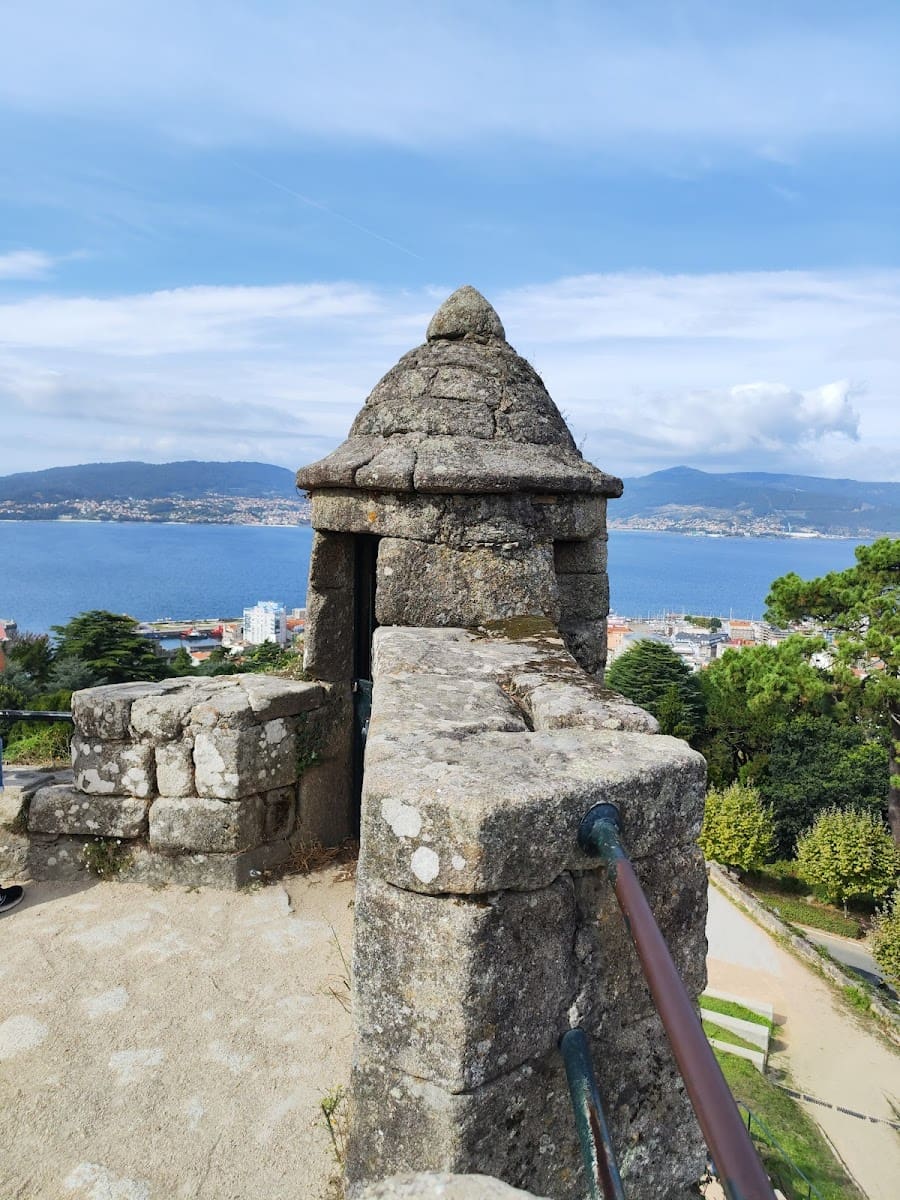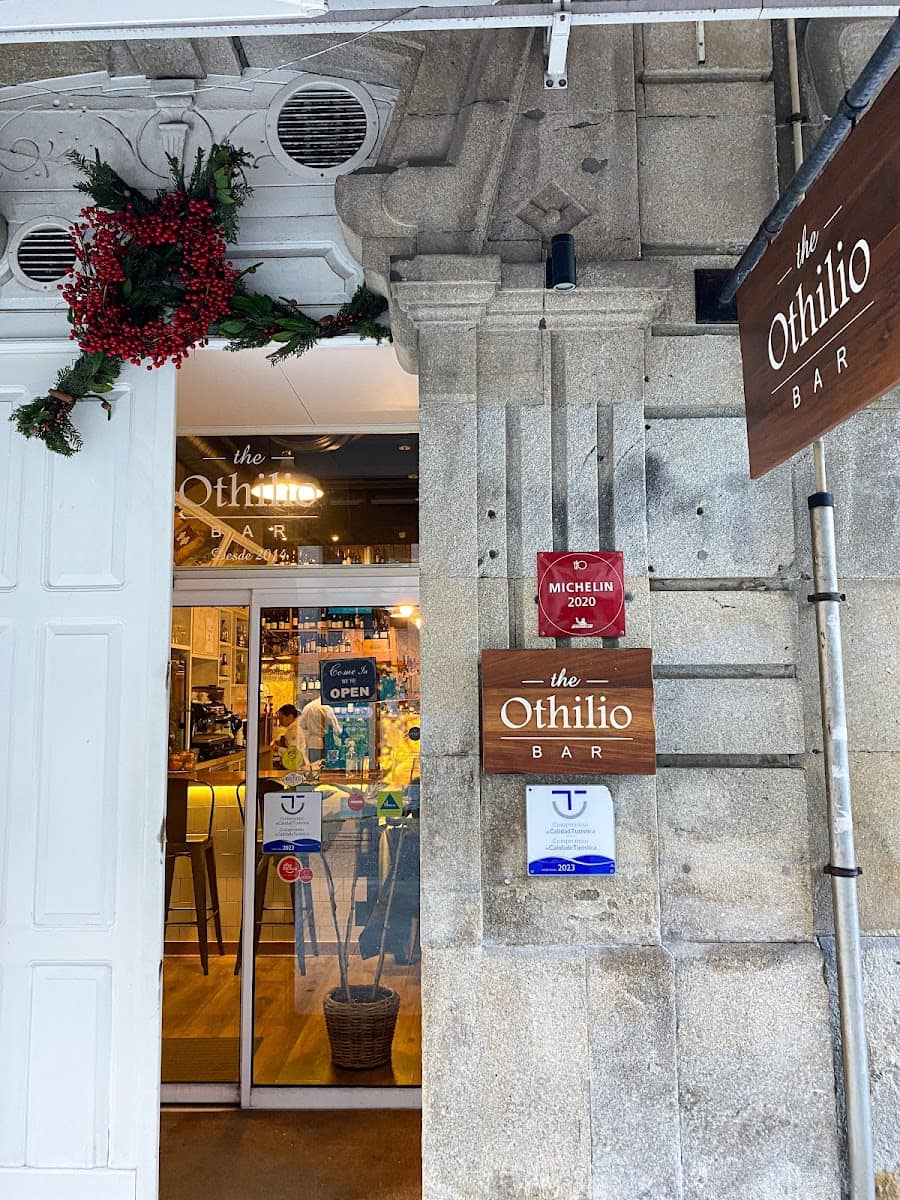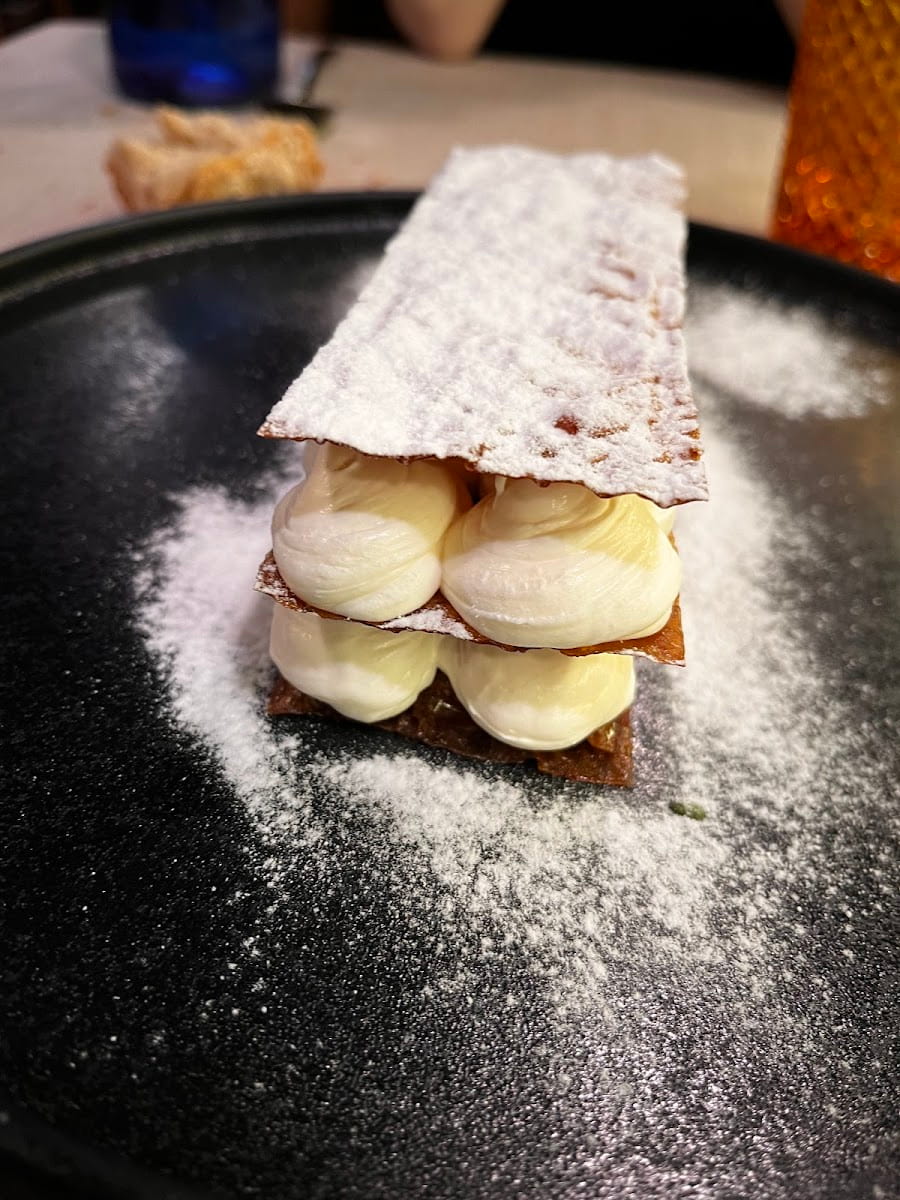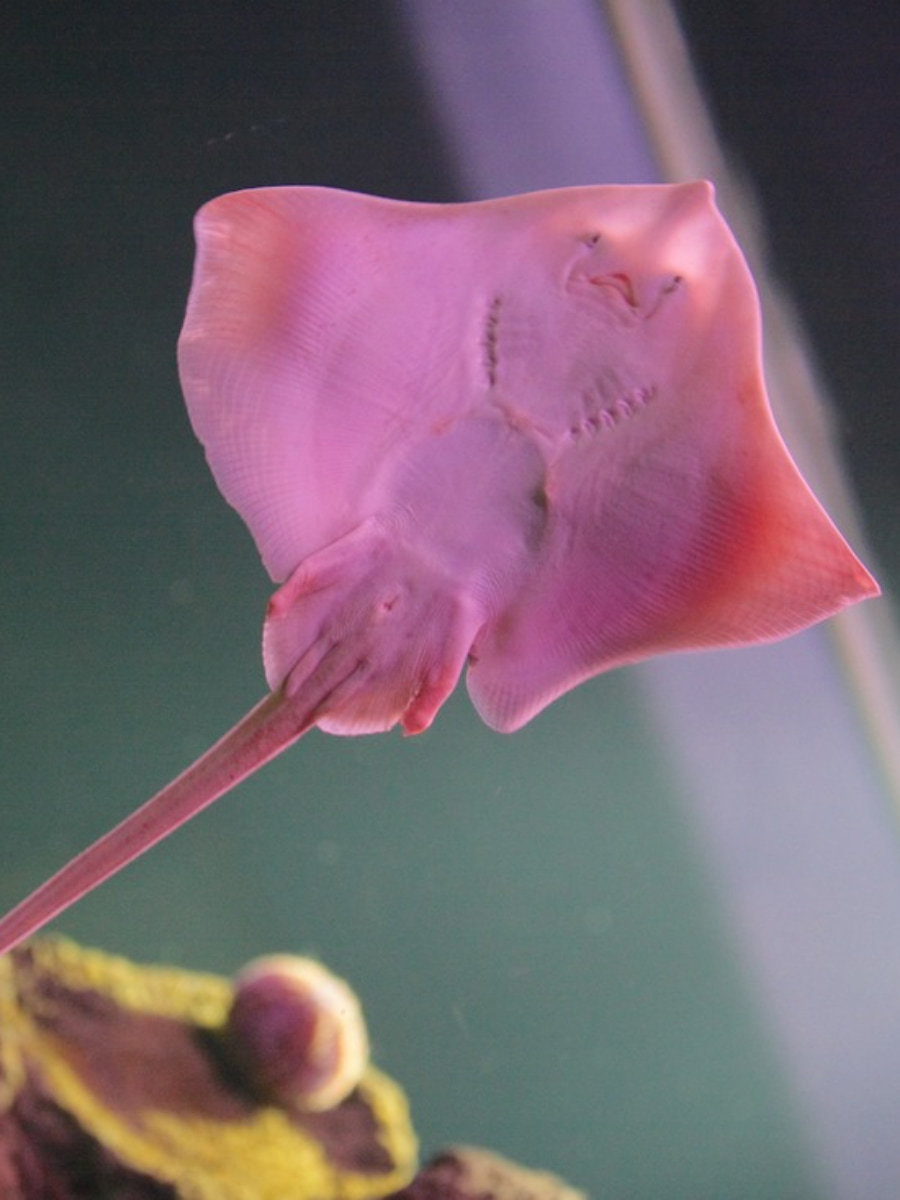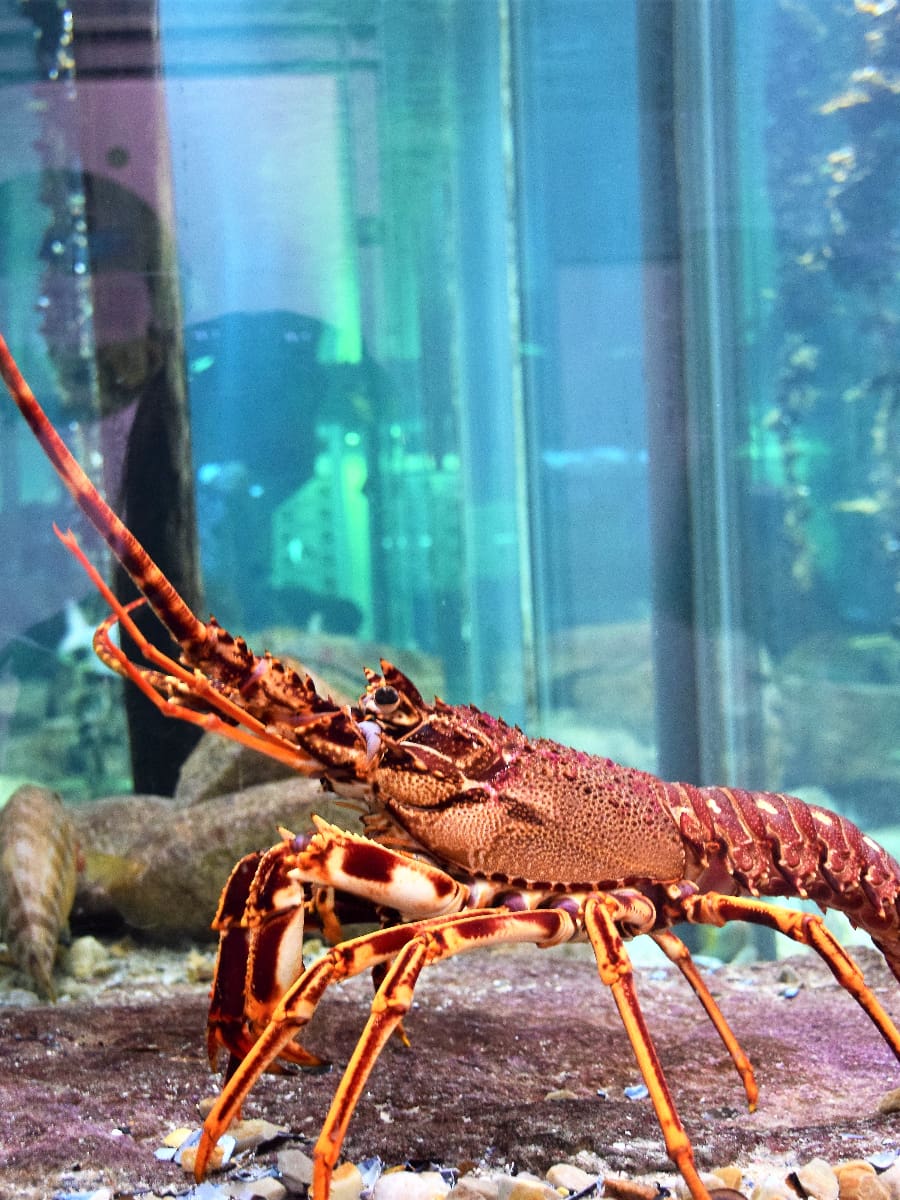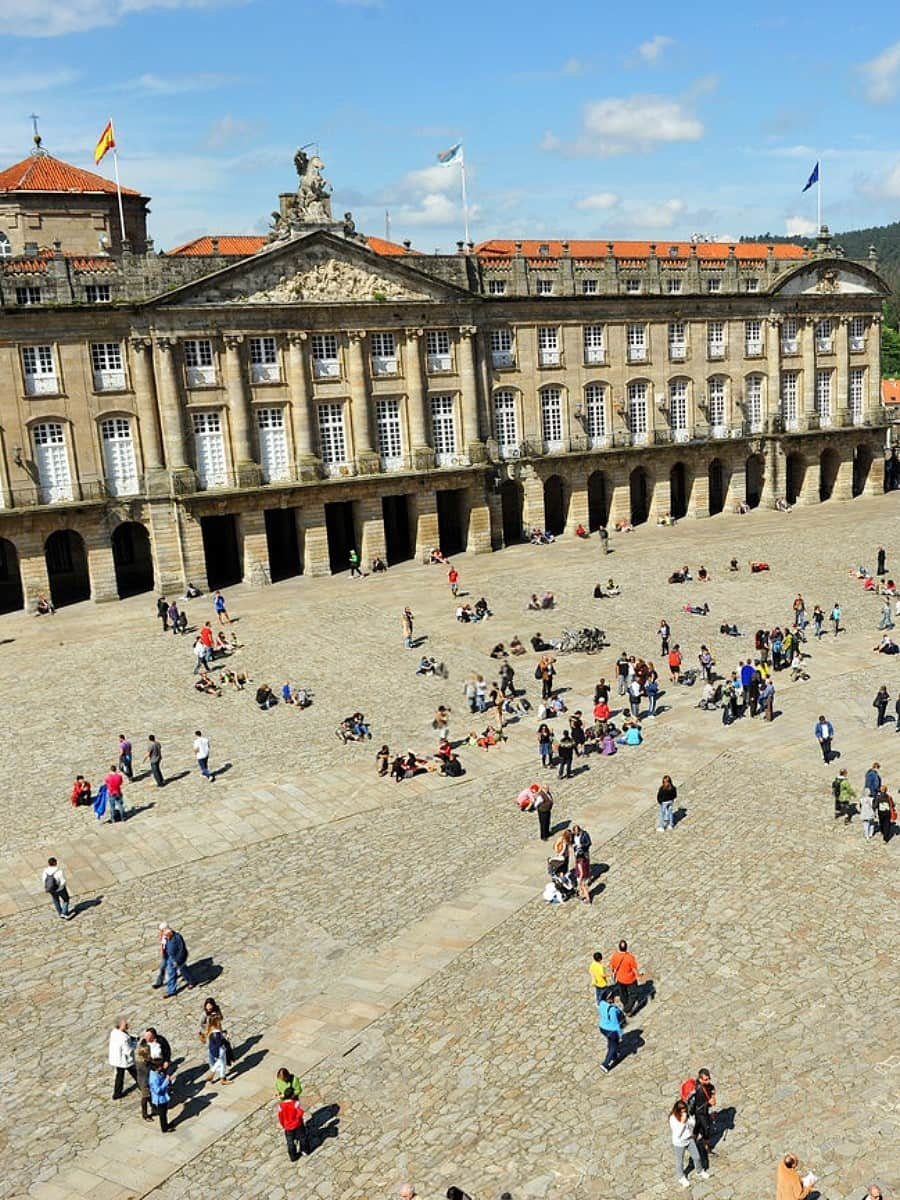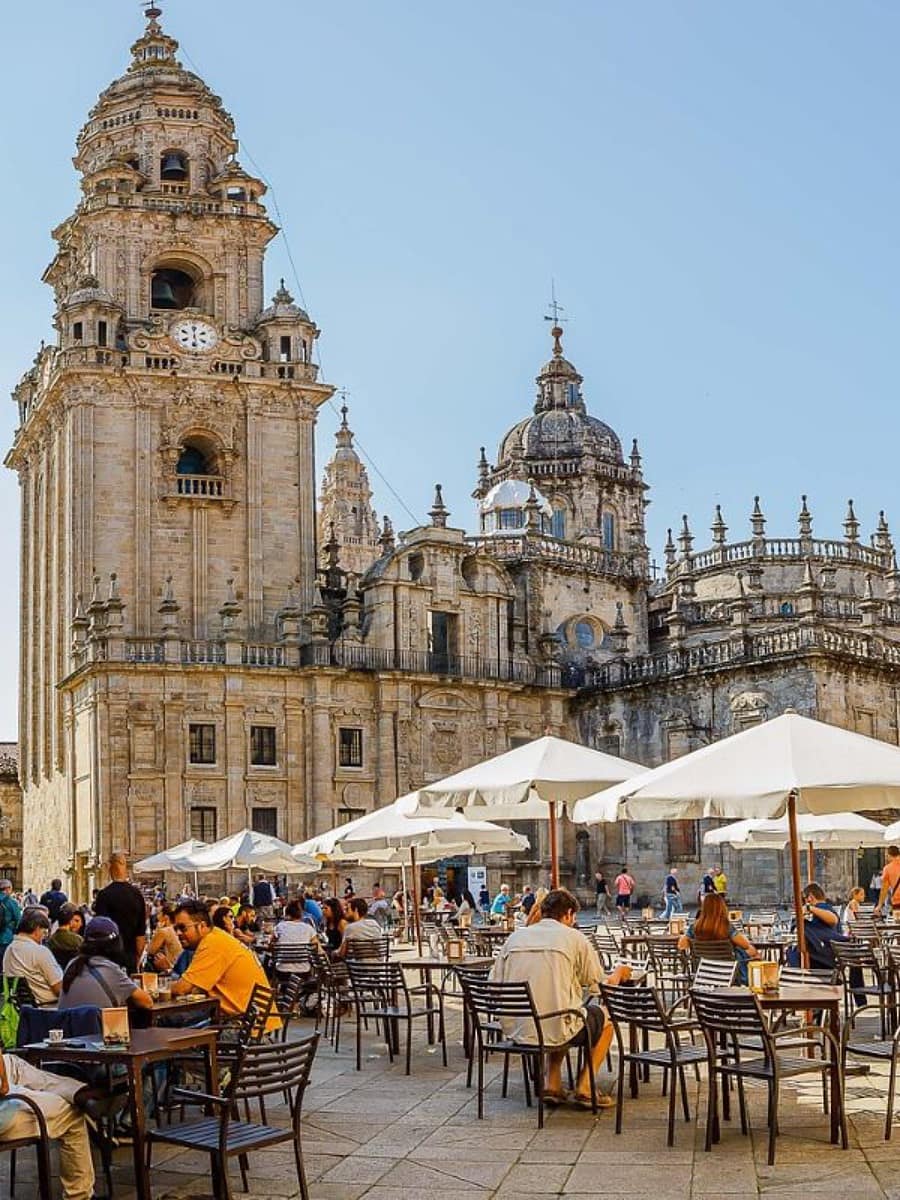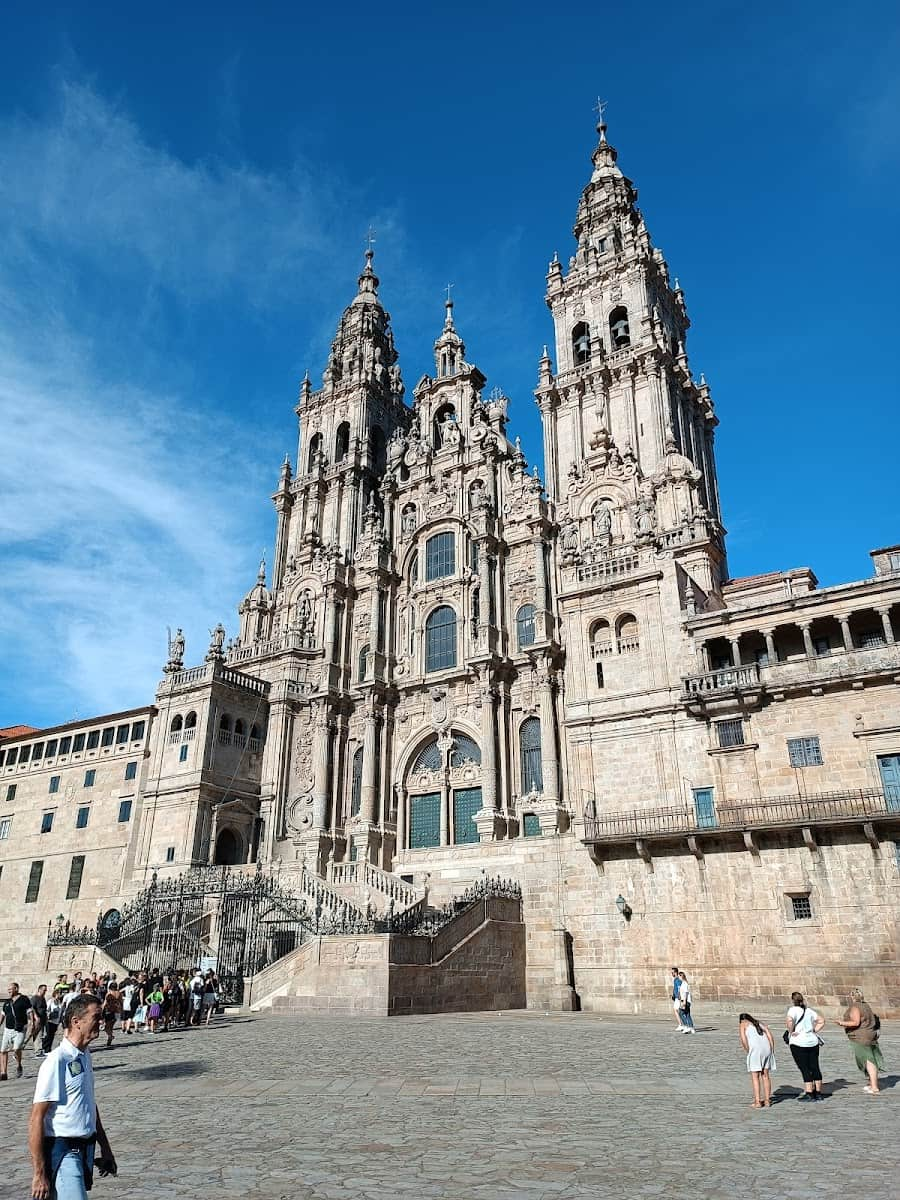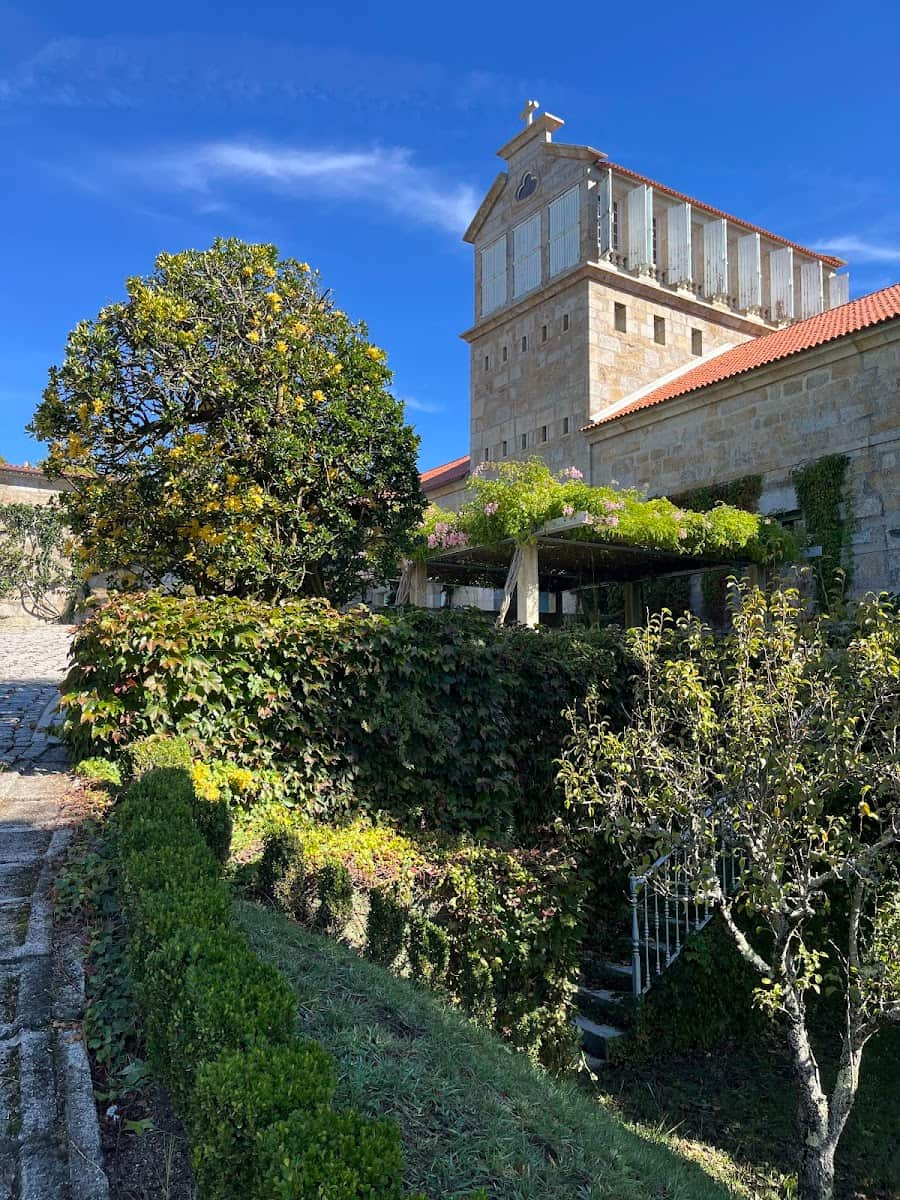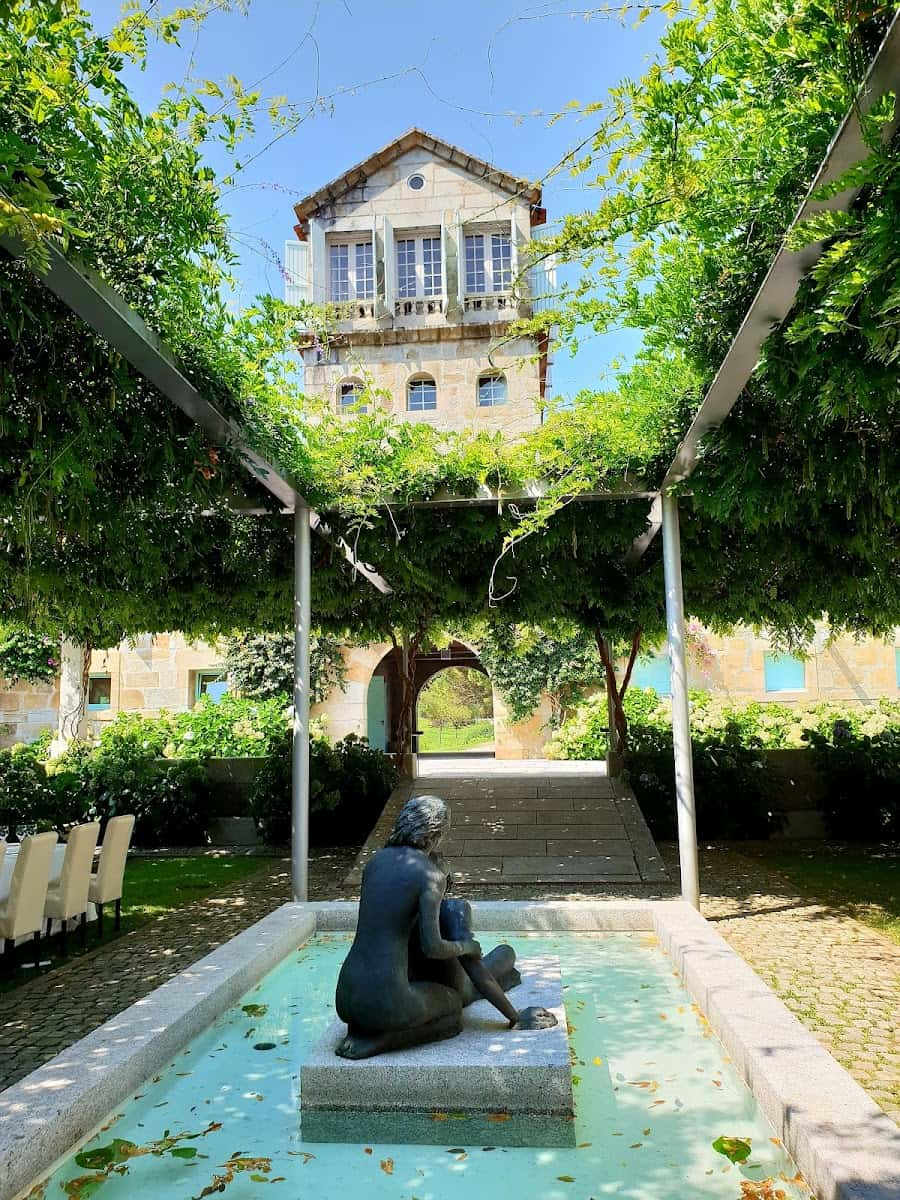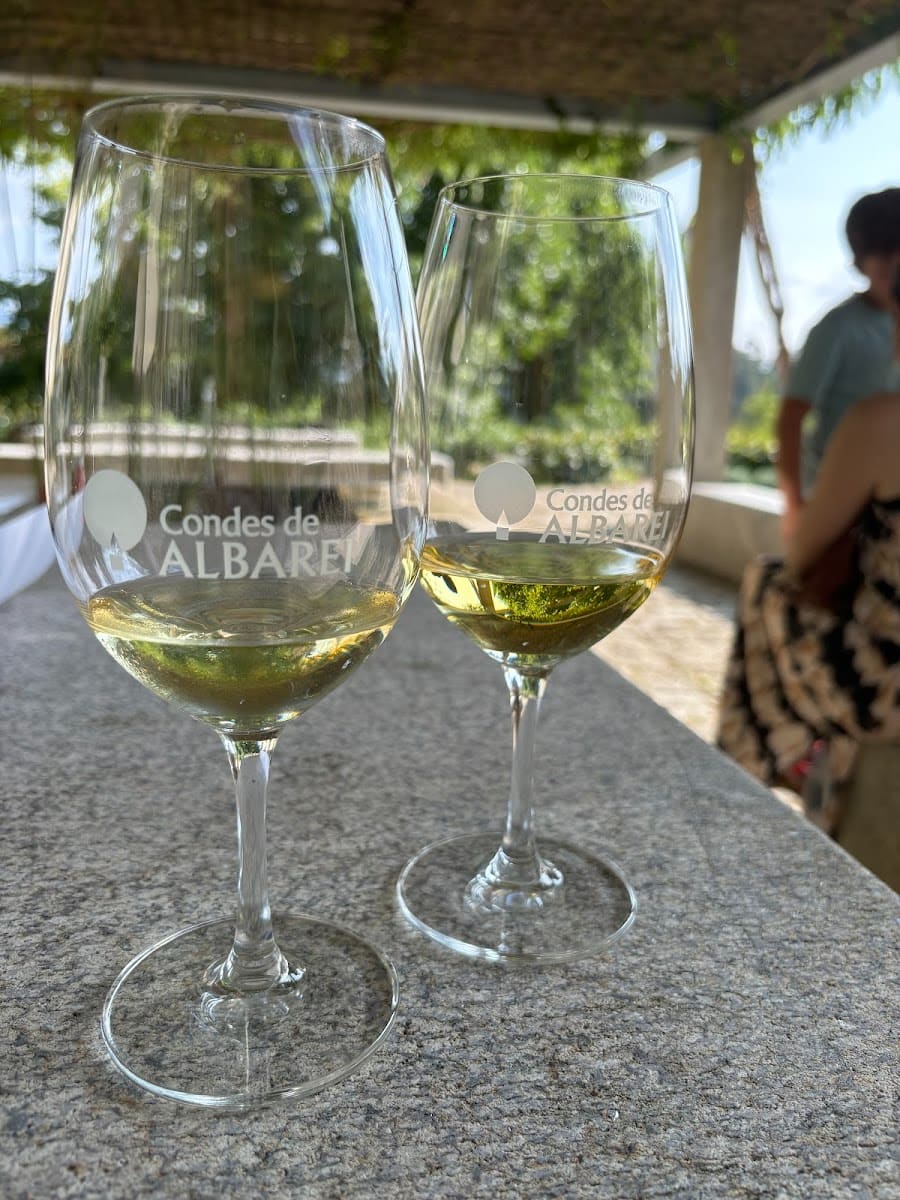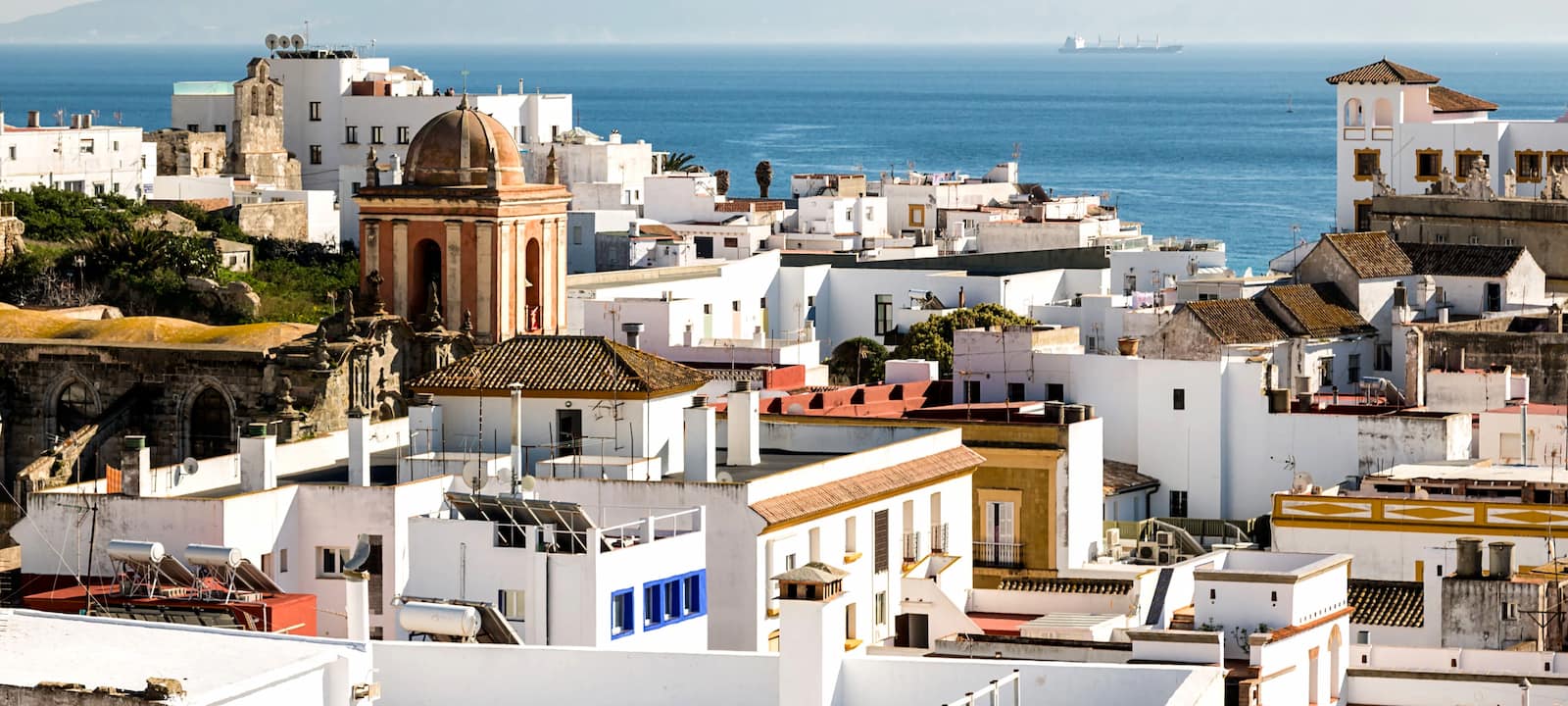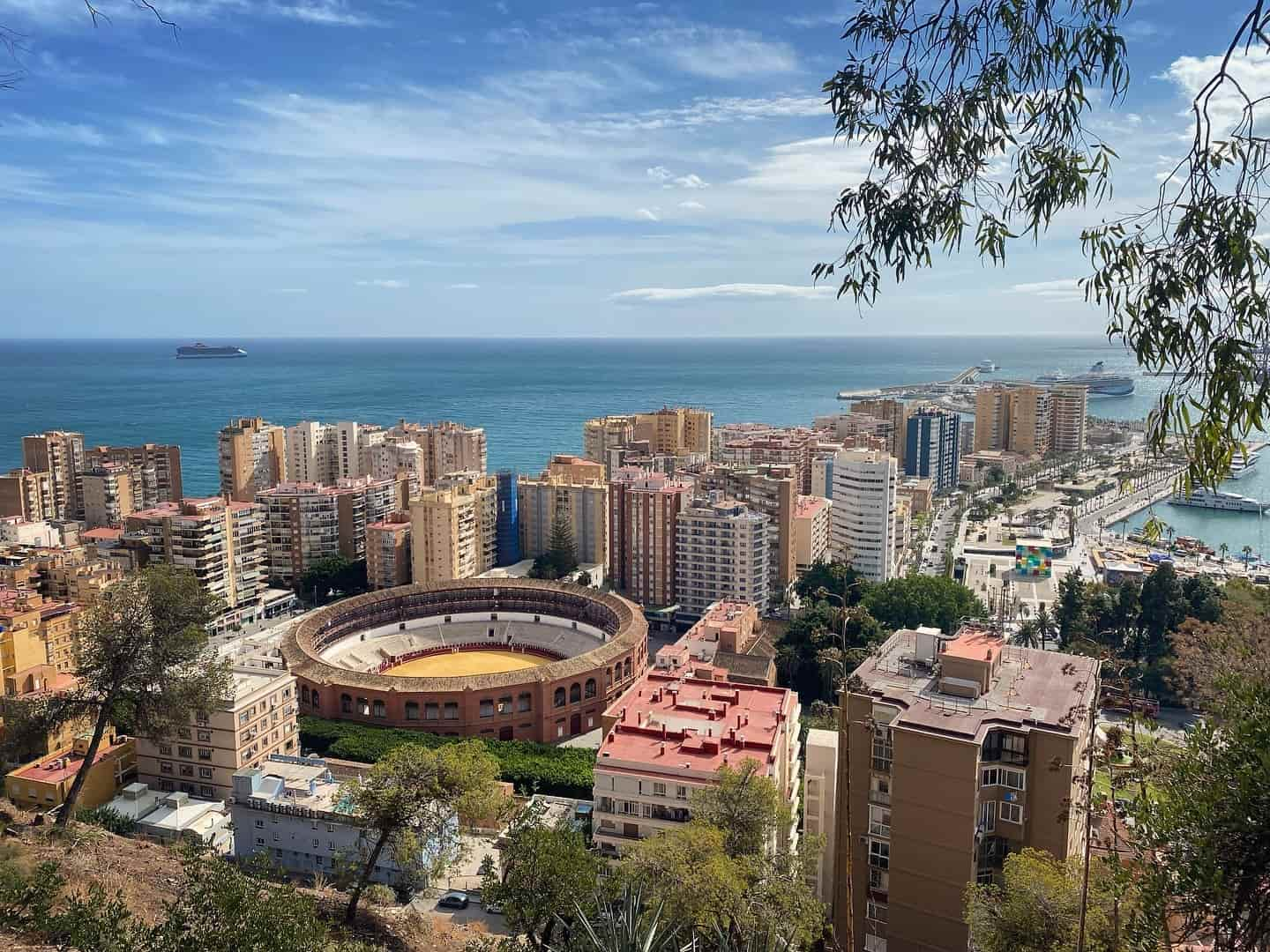Galicia, Spain’s emerald corner in the northwest, offers travelers a magical mix of wild beaches, ancient pilgrim paths, and seafood that will make your taste buds dance. The region’s Celtic roots and Atlantic coastline create experiences you won’t find anywhere else in Spain, from mystical stone ruins to the famous Camino de Santiago.
Rain-washed green landscapes hide charming fishing villages where time seems to stand still, while lively cities like Santiago de Compostela and Vigo pulse with energy and tradition. Whether you’re sipping Albariño wine among terraced vineyards or watching waves crash against Europe’s oldest lighthouse, Galicia’s authentic charm will capture your heart from the very first moment.
🏠 Where to Stay in Galicia
- 💎 Luxury Hotel: Pazo Los Escudos Hotel Spa & Resort, Vigo
- ✨ 5-Star: NH Collection A Coruña Finisterre, A Coruña
- 🏨 4-Star: Talaso Atlántico, Mougás
- 🛏️ 3-Star: Casa do Sear - Turismo Rural & Spa Exterior, Sanxenxo
- 💸 Cheap: Pensión Mirador Fin da Terra, Finisterre
- 🏢 Apartment: A Carballeira do Tambre, Troitosende
- 👨👩👧👦 For Families: Melia Maria Pita, A Coruña
- 🏩 For Couples: A Falua, Galicia
💁 Best Guided Tours
- Excursion to Finisterre + Muxia + Costa da Morte (7 stops) from € 56 (⭐4.8/5)
- Santiago de Compostela: Finisterre, Muxía & Costa da Morte from € 56 (⭐4.9/5)
- Finisterre and Costa da Morte: The Most Complete Tour of Santiago from € 68 (⭐4.7/5)
- Excursion to Rias Baixas with Winery - Optional mussel boat from € 48 (⭐4.8/5)
Best Things To Do in Galicia, Spain
1. Santiago de Compostela Cathedral
Pilgrim’s paradise. Standing before the magnificent Santiago Cathedral, I felt the same awe that millions of pilgrims have experienced over centuries. The baroque-style main altar houses the famous botafumeiro, one of the world’s largest censers that swings dramatically during special masses. My tip: visit on Friday at 19:30 to see this spectacular incense burner in action.
Rooftop wonders. The cathedral rooftop tour offers breathtaking views of Santiago’s historic center that I’ll never forget. While tours are currently only in Spanish, the panoramic vistas are worth every euro. I recommend booking in advance as only limited “passes” are available throughout the day.
Sacred spaces. The main nave is free to enter, but don’t miss the Portico de la Gloria with its stunning Romanesque sculptures and arches. Behind the High Altar lies the crypt where Saint James’ remains rest. Following pilgrim tradition, I hugged the saint’s statue and visited his tomb below – completing two of the three traditional pilgrim tasks.
| Visitor Option | Price | What’s Included |
|---|---|---|
| Main Nave | Free | Access to main worship area |
| Cathedral Museum | 12€ ($13) | Relics, tapestries, Berenguela tower bells |
| Portico de la Gloria | 10-12€ ($11-13) | Guided access to the famous portico |
| Rooftop Tour | 10€ ($11) for pilgrims, 15€ ($16) others | Guided tour of cathedral roofs |
- Practical tips:
- No backpacks allowed inside for security reasons
- Best viewpoint of the cathedral is from Alameda Park
⭐ Best Activities
- Old Town of Santiago de Compostela Walking Tour – Explore the beautiful historic center of the capital with a knowledgeable guide who will share fascinating stories about the cathedral and surrounding plazas. One of the best things to do in northern Spain and a must-visit for anyone interested in the rich culture of this unique region.
2. Camino de Santiago Pilgrimage
Life-changing journey. Walking the Camino de Santiago was the most transformative experience of my travels through Galicia. I chose the popular French Way, starting in Sarria for the final 111km stretch that qualifies for the Compostela certificate. The path winds through medieval villages, eucalyptus forests, and rolling farmland before reaching Santiago.
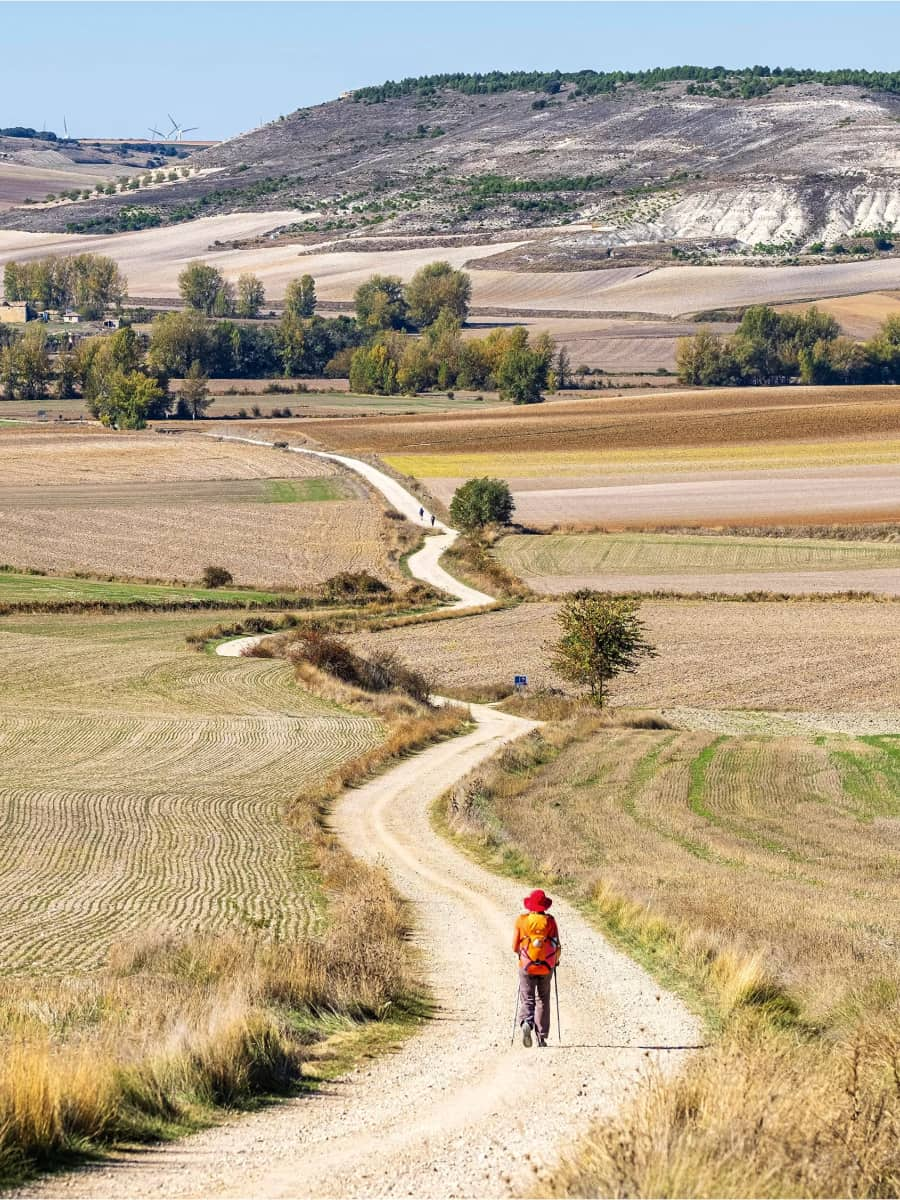
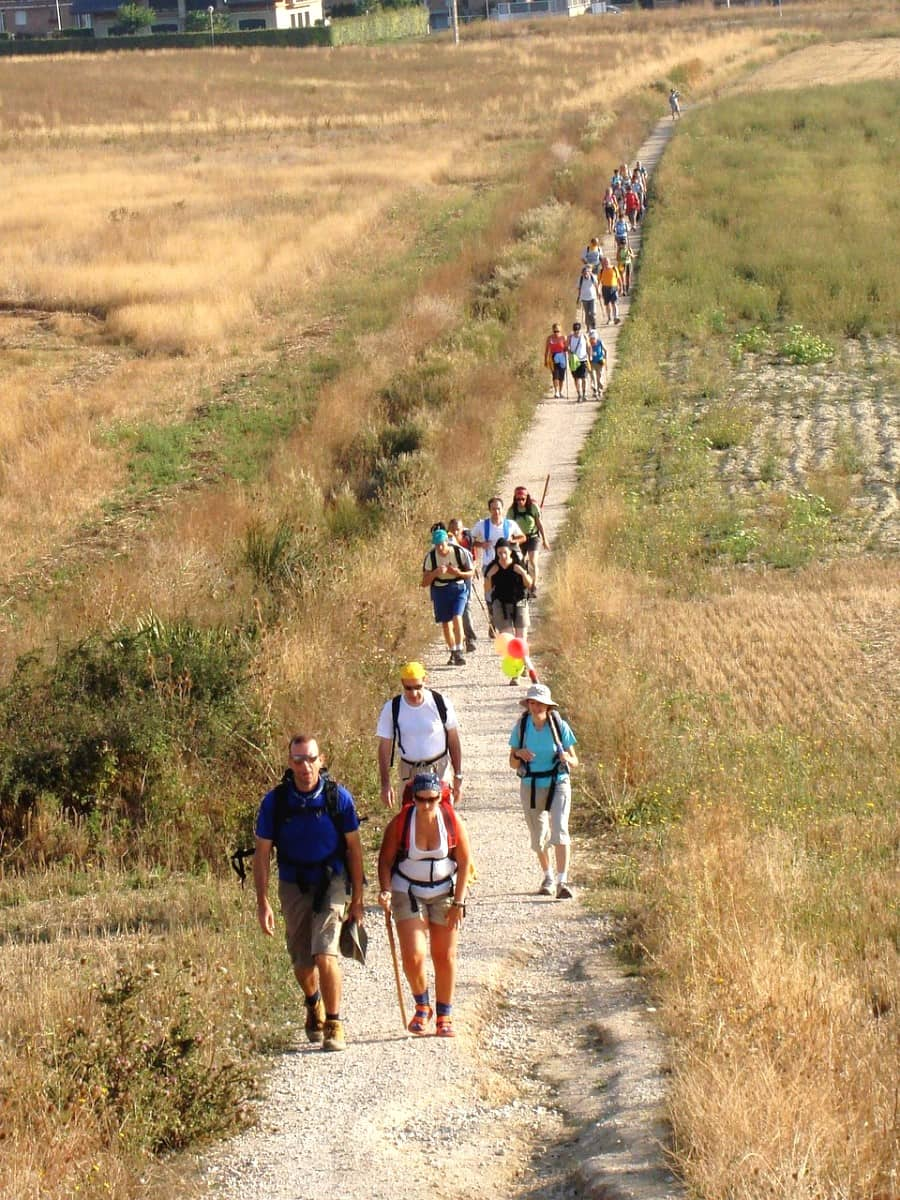

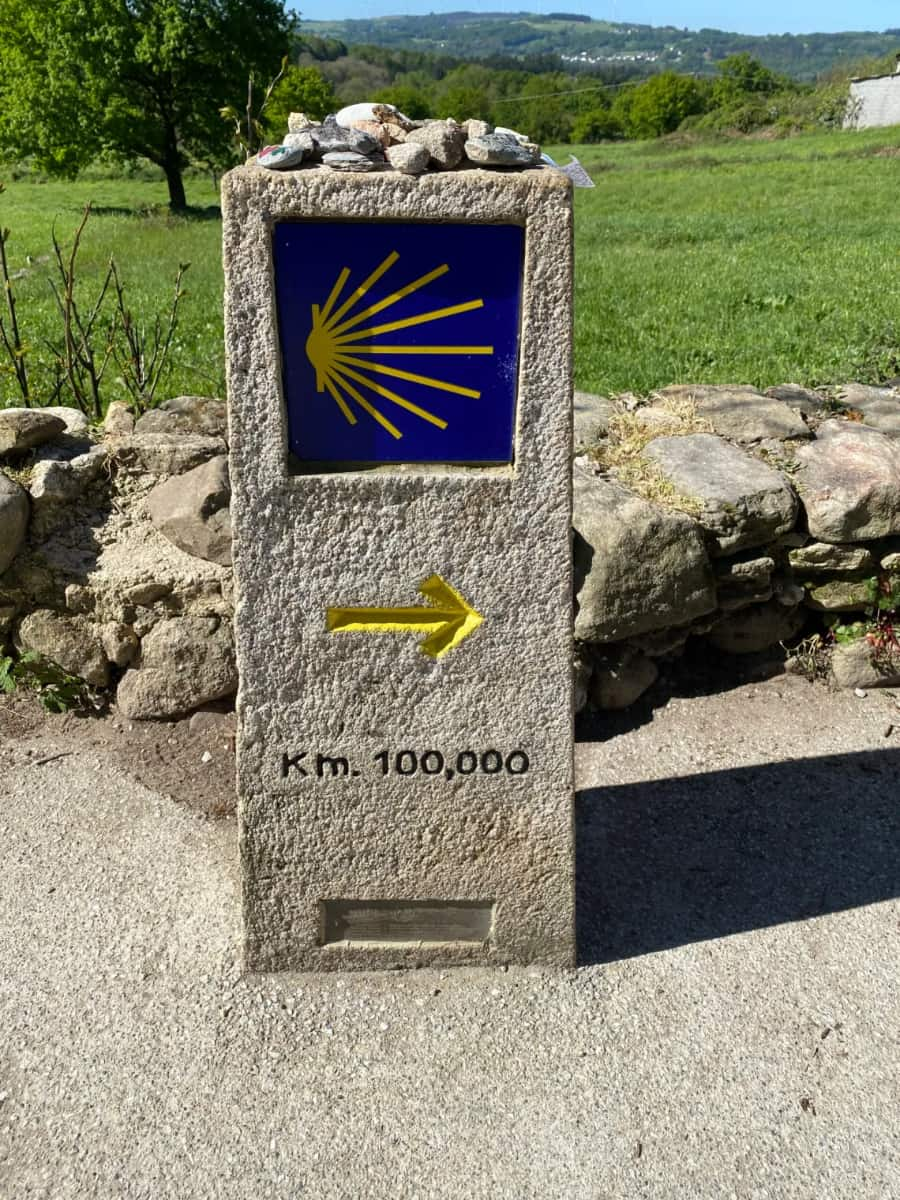
Pilgrim essentials. Albergues (pilgrim hostels) dot the route, offering affordable accommodation after long days of walking. My favorite was Albergue A Casa de Carmen in Palas de Rei, where the hospitaleros welcomed me with homemade Galician soup and stories from fellow pilgrims.
Credential power. Your pilgrim credential (pilgrim passport) isn’t just for collecting stamps – it’s your ticket to budget-friendly meals and accommodations. I saved significantly by showing mine at restaurants offering “menú del peregrino” (pilgrim menu) with three courses and wine for around 10€.
| Camino Route | Distance | Typical Duration | Difficulty |
|---|---|---|---|
| French Way | 800km (full), 111km (Sarria) | 30-35 days (full), 5-7 days (Sarria) | Moderate |
| Portuguese Way | 240km | 10-14 days | Easy to moderate |
| English Way | 120km | 5-7 days | Moderate |
| Primitive Way | 320km | 13-15 days | Challenging |
| Northern Way | 825km | 34-40 days | Challenging |
- Camino planning tips:
- Best seasons: Spring (April-June) or Fall (September-October)
- Budget approximately 30-40€ daily for food and accommodation
- Pack light – aim for under 10% of your body weight
⭐ Best Activities
- A Taste of the Camino de Santiago from Oviedo – Experience part of Spain’s most famous pilgrimage route with this unique tour that starts at the statue of King Alfonso II. It’s worth a visit for anyone interested in the cultural significance of this historic path through northern Spain.
3. Tower of Hercules in A Coruña
Ancient lighthouse. Standing before the Tower, I marveled at the world’s oldest functioning Roman lighthouse, built in the 1st century AD. This UNESCO World Heritage site has guided ships safely to shore for nearly 2,000 years, and I could feel its historical significance with every step up its spiral staircase.
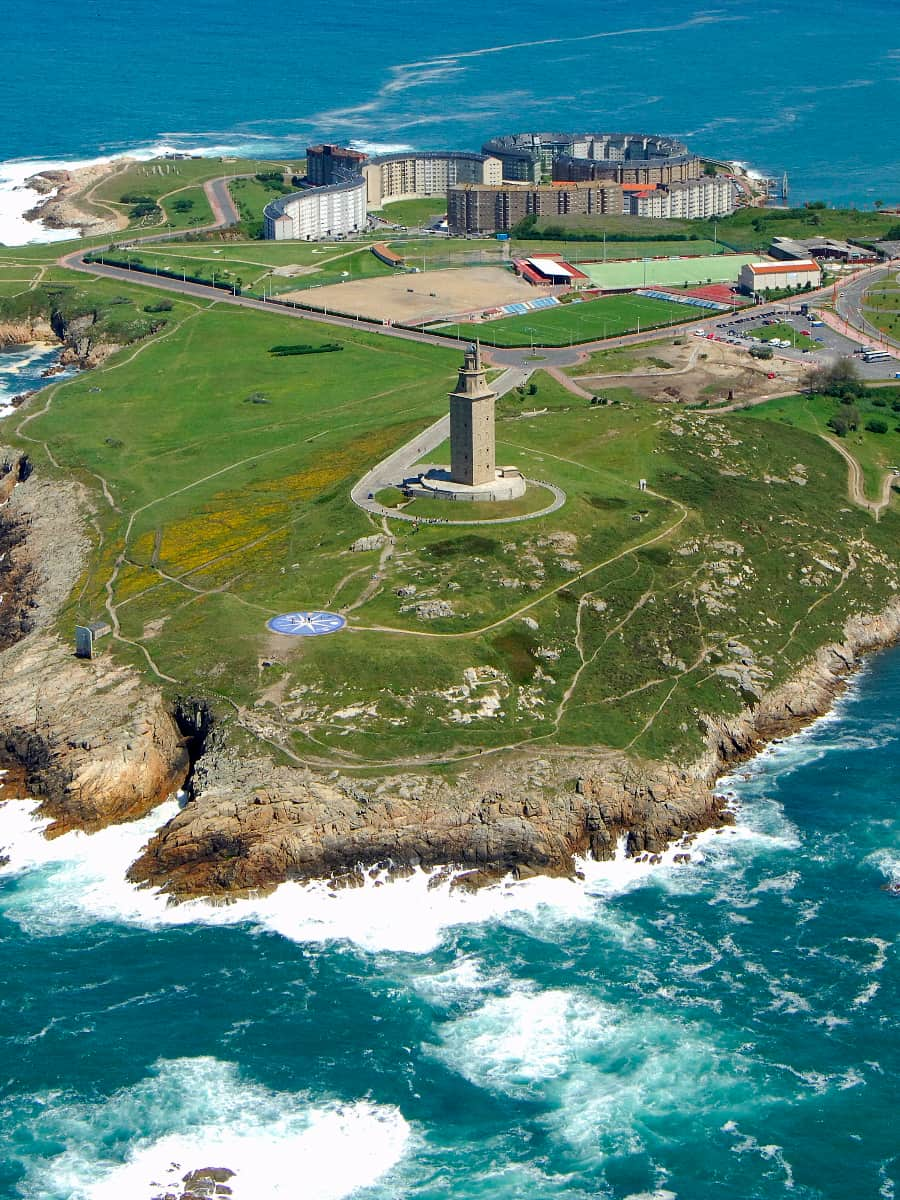
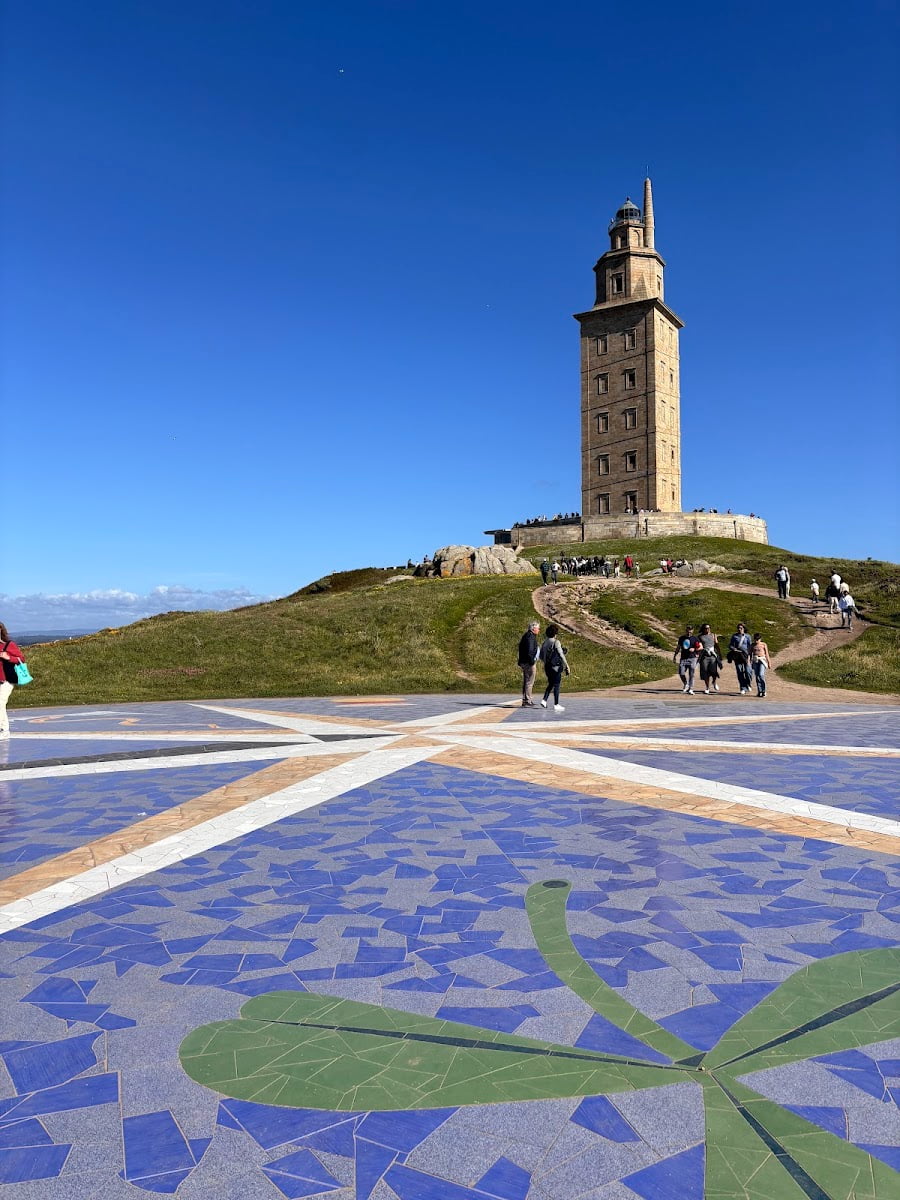
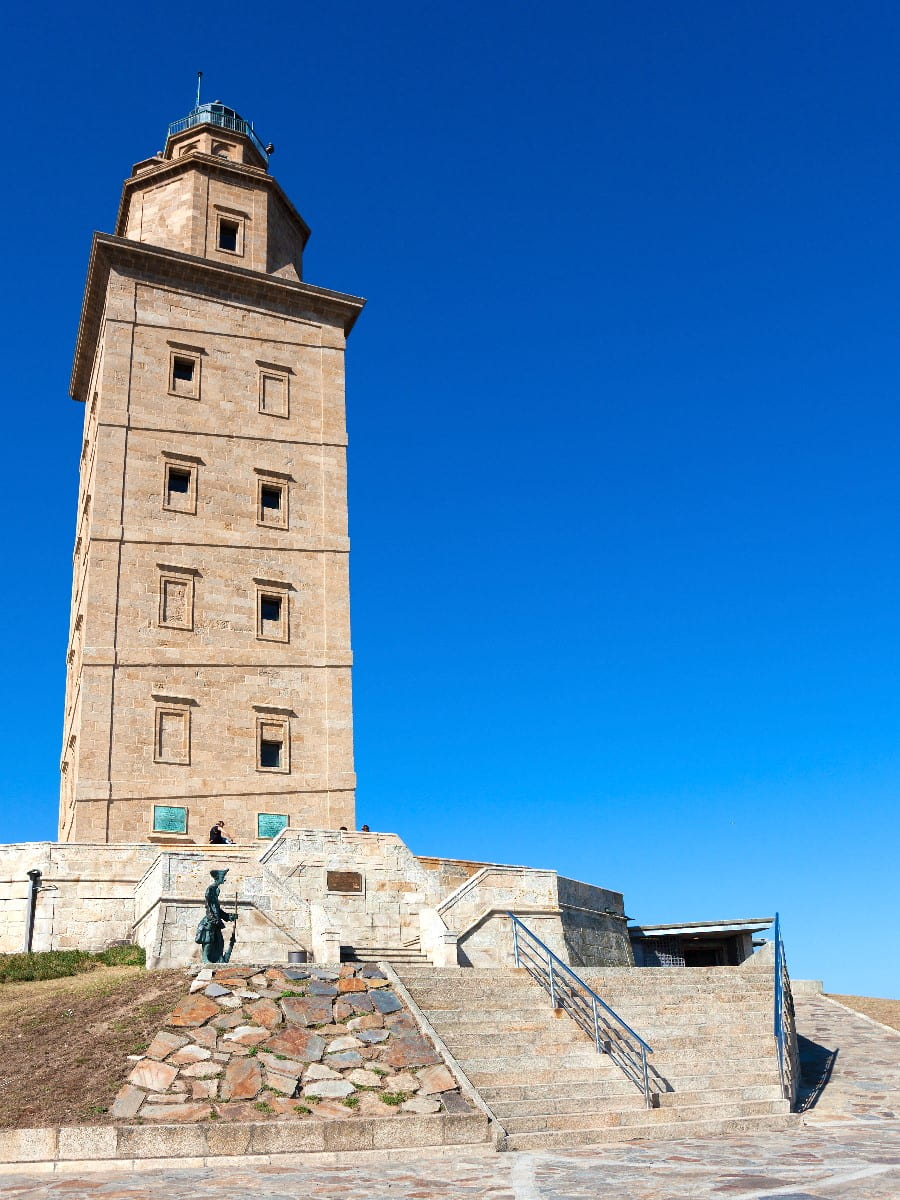

Panoramic views. After climbing 234 steps to the top, I was rewarded with breathtaking 360° views of the Atlantic Ocean and A Coruña’s coastline. The surrounding sculpture park features interesting modern art pieces inspired by Celtic mythology, creating a fascinating contrast with the ancient tower.
Maritime legends. The tower’s name comes from the legend that Hercules defeated the giant Geryon here and buried his head, founding the city. Inside, I discovered that while the exterior is Roman, the interior was renovated in the 18th century, preserving this remarkable structure for future generations.
| Tower of Hercules Info | Details |
|---|---|
| Height | 55 meters (180 feet) |
| Steps to climb | 234 |
| Entrance fee | 3€ ($3.30) general, 1.5€ ($1.65) reduced |
| Opening hours | 10:00-19:30 (Oct-May), 10:00-21:00 (Jun-Sep) |
| Closed on | Mondays (except in summer) |
- Visitor recommendations:
- Allow 1-2 hours for the tower and sculpture park
- Bring a windbreaker (it’s often windy)
- Visit late afternoon for softer light for photos
- Download the free audio guide app before visiting
⭐ Best Activities
- Explore the Highlights of La Coruña for Cruisers – Discover one of the most beautiful towns in Galicia with stunning coastal views. This fun city tour is perfect for cruise passengers looking to see many attractions in a limited time.
4. Camiño dos Faros Coastal Hike
Wild Atlantic way. The Camiño dos Faros (Lighthouse Way) took my breath away with its dramatic cliffs, hidden beaches, and untamed beauty. This 200km coastal trail from Malpica to Finisterre follows Costa da Morte (Coast of Death), named for its treacherous waters that claimed countless ships.
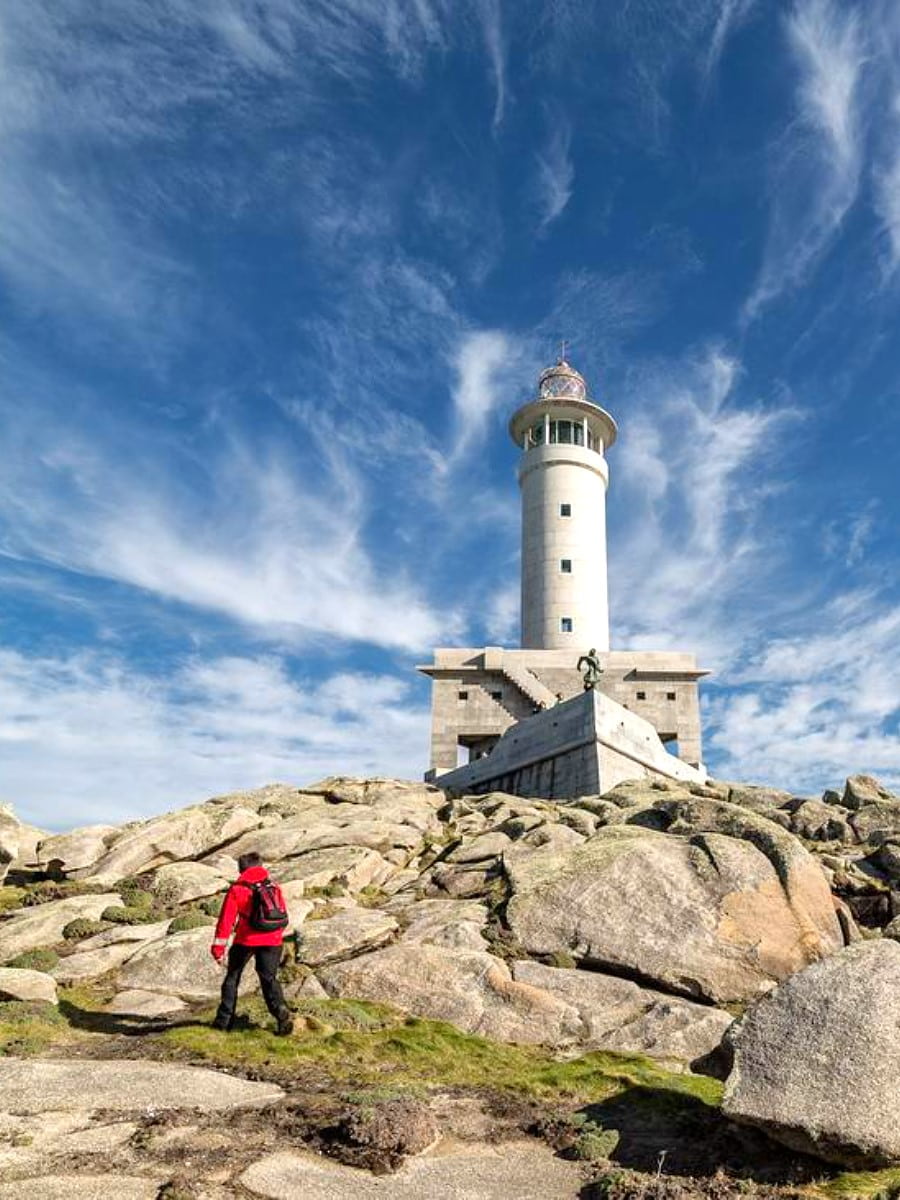
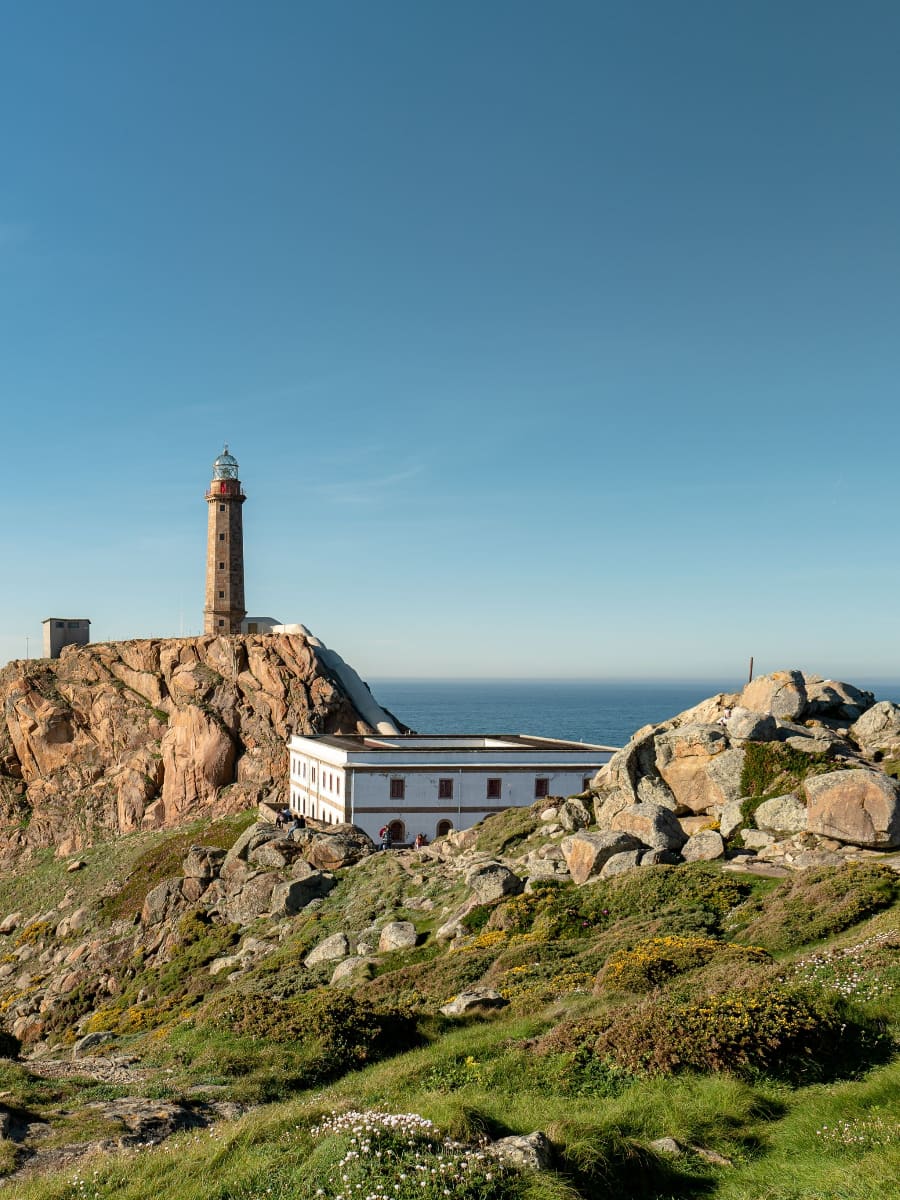
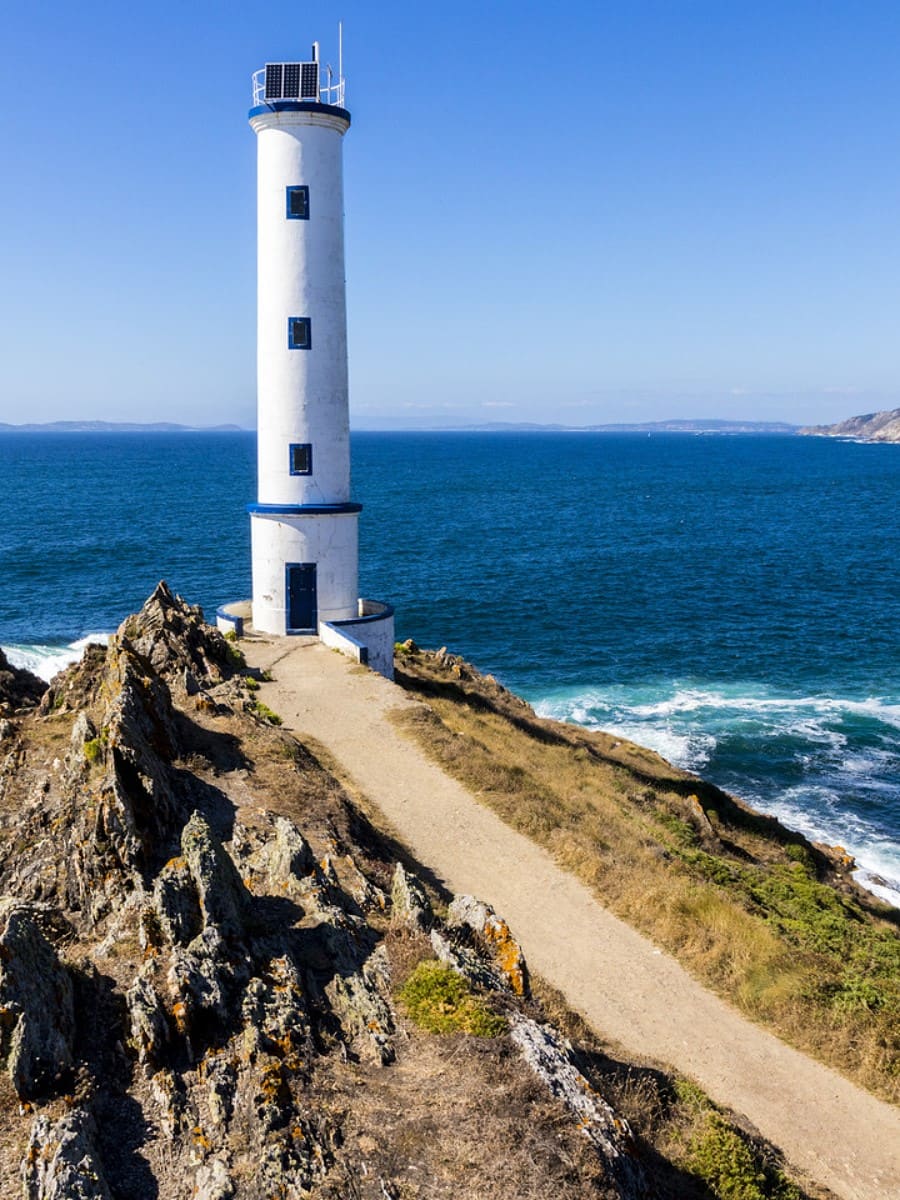
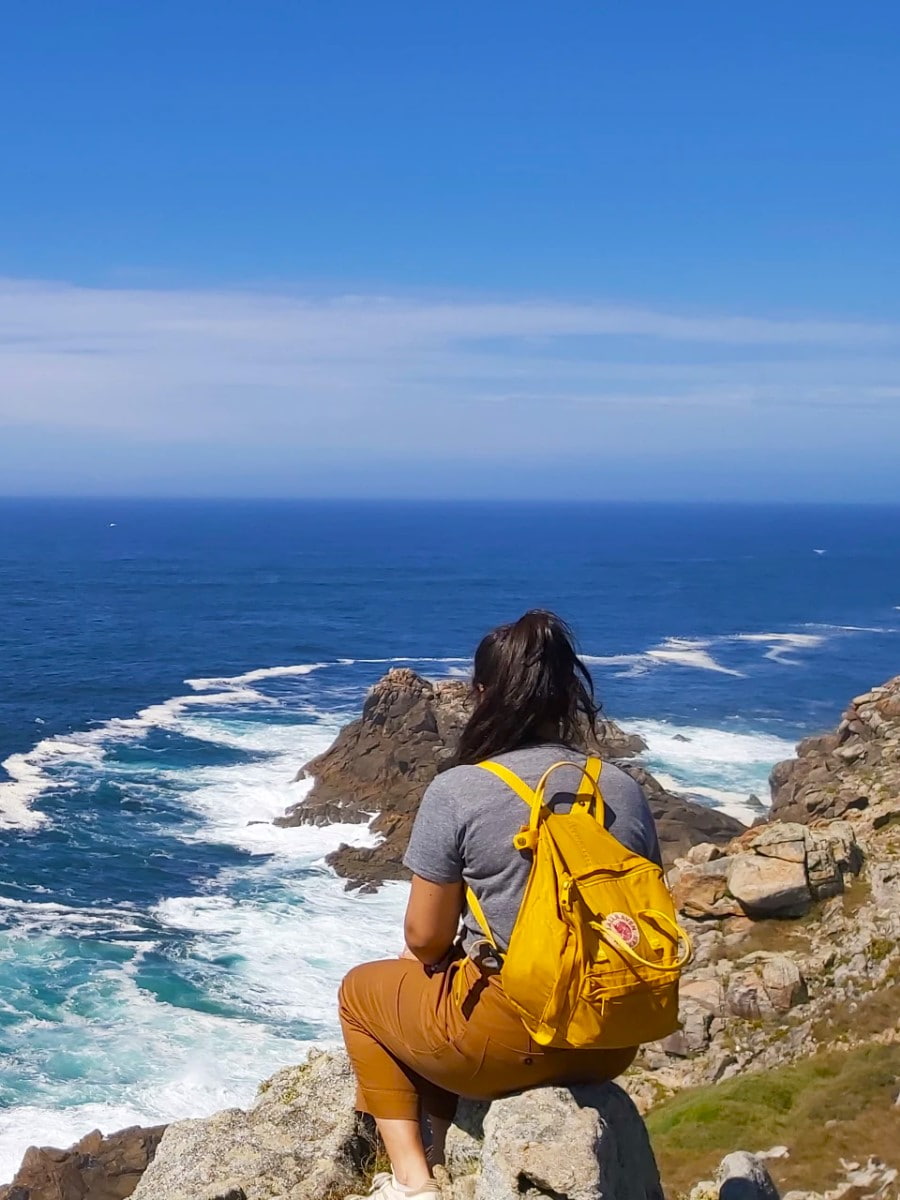
Lighthouse beacons. I tackled the route in sections, with my favorite stretch being from Camariñas to Muxía. The trail connects lighthouses that once guided sailors through dangerous waters, each offering spectacular viewpoints over the churning Atlantic. The isolation and raw natural power here is something I’ve rarely experienced elsewhere.
Local encounters. Along the way, I met percebeiros (barnacle harvesters) risking their lives on slippery rocks to collect gooseneck barnacles, a Galician delicacy. In tiny fishing villages like Camelle, locals invited me to try fresh seafood at prices that would be unthinkable in tourist hotspots.
| Trail Section | Distance | Difficulty | Highlights |
|---|---|---|---|
| Malpica to Niñóns | 22km | Moderate | Sisargas Islands views, Soesto Beach |
| Niñóns to Ponteceso | 25km | Easy | Balarés Beach, Monte Branco dunes |
| Laxe to Camariñas | 23km | Challenging | Traba Beach, Cemiterio dos Ingleses |
| Camariñas to Muxía | 32km | Moderate | Cape Vilán lighthouse, coastal cliffs |
| Muxía to Finisterre | 28km | Moderate | Sanctuary of Virxe da Barca, sunset views |
- Hiking essentials:
- Sturdy waterproof hiking boots
- Trekking poles for steep sections
- Detailed maps or GPS tracks
5. Monte O Castro in Vigo
Hilltop haven. Climbing Monte O Castro in the heart of Vigo rewarded me with spectacular panoramic views of the city, harbor, and Cíes Islands beyond. This forested park built around ancient castle ruins offers a peaceful escape from the bustling city streets below.
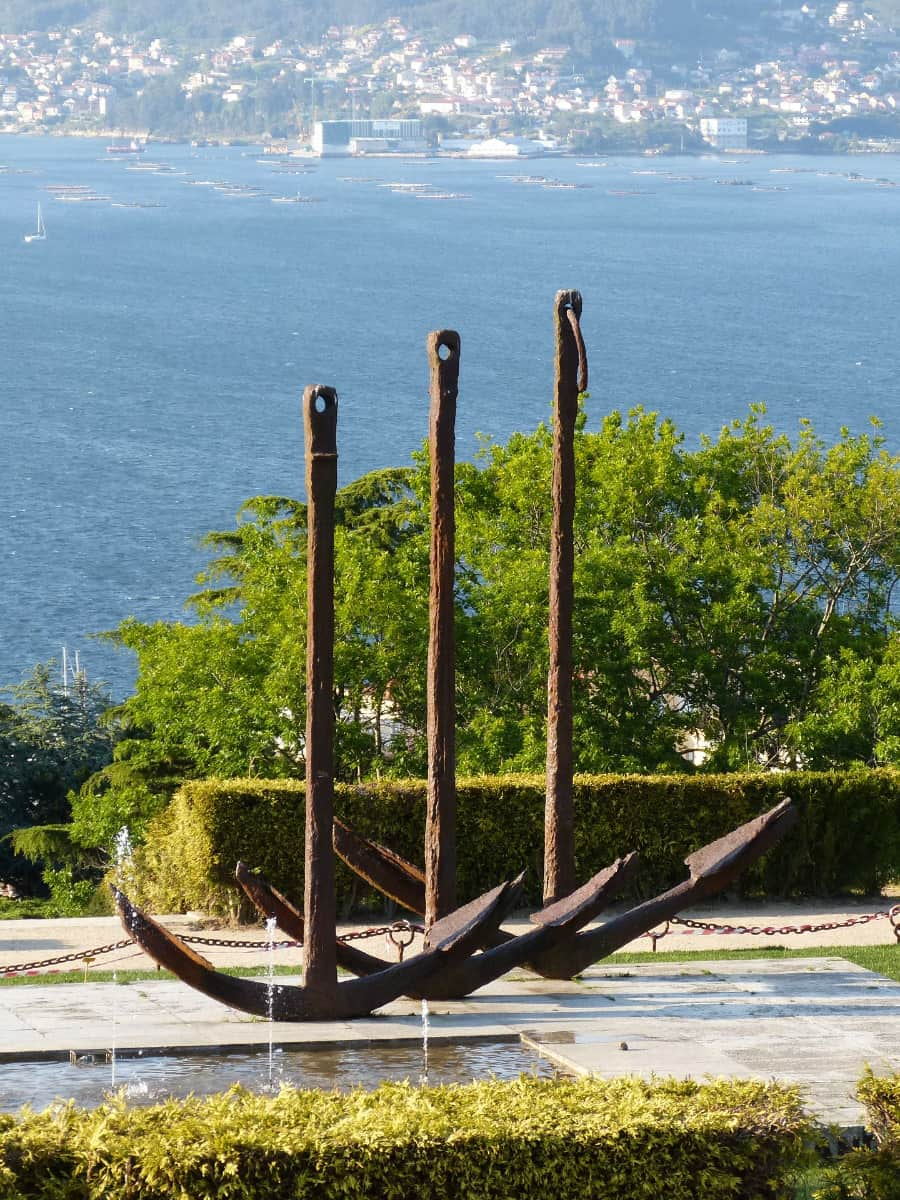
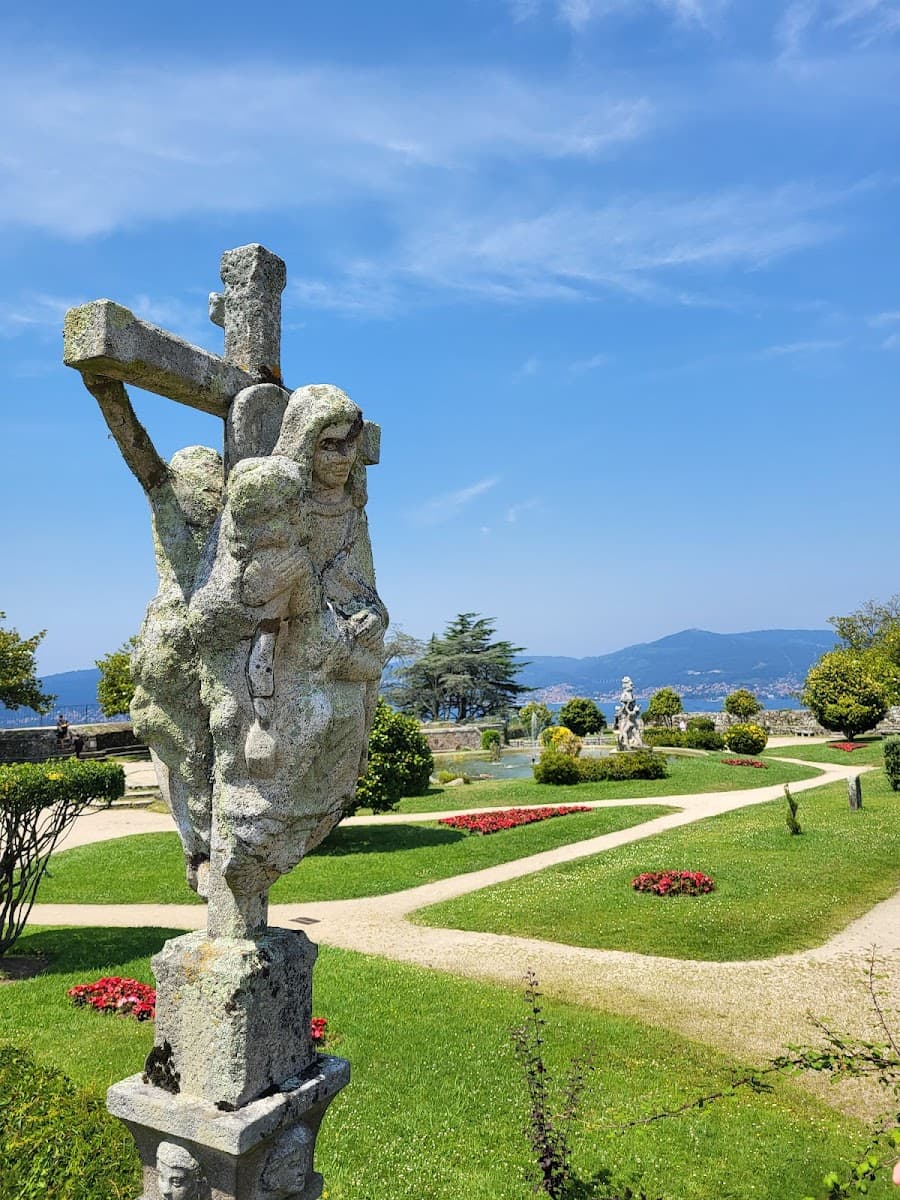
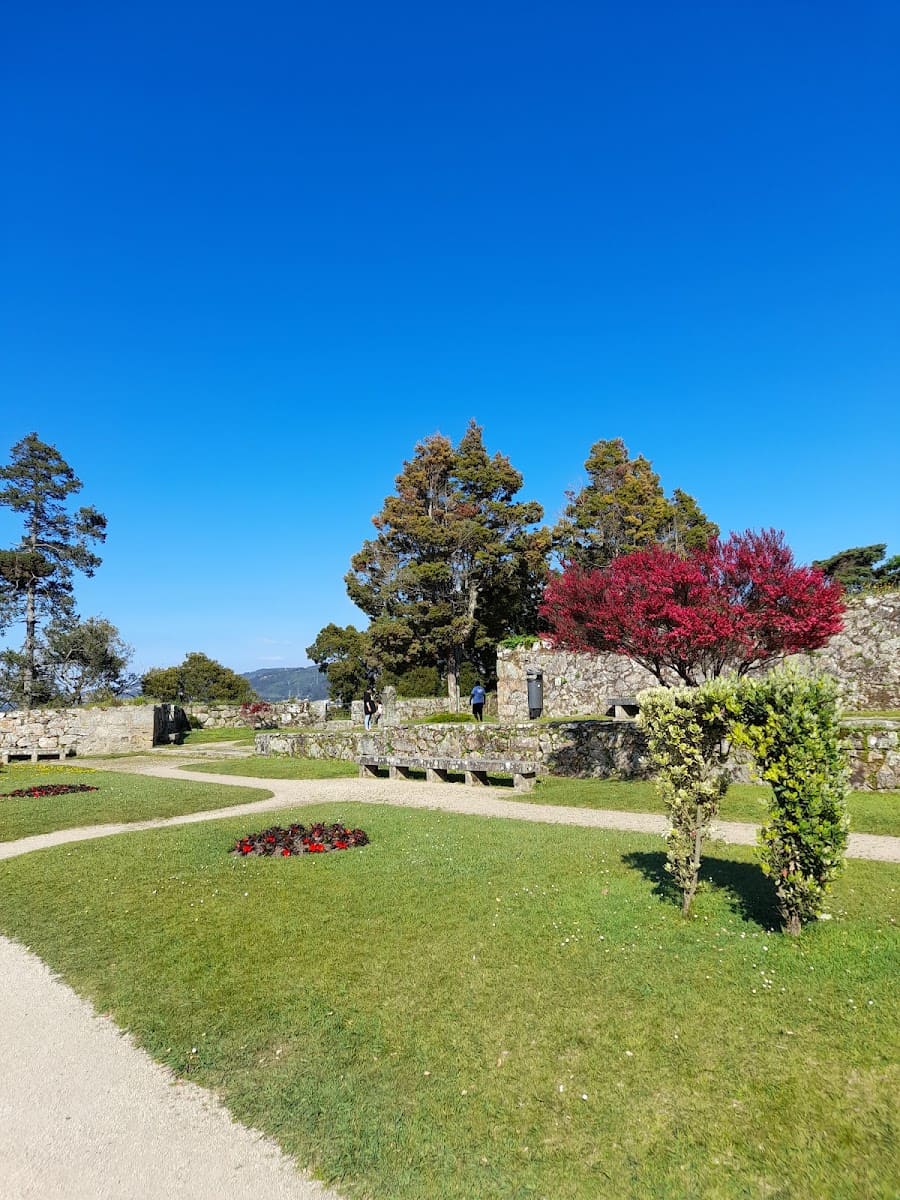
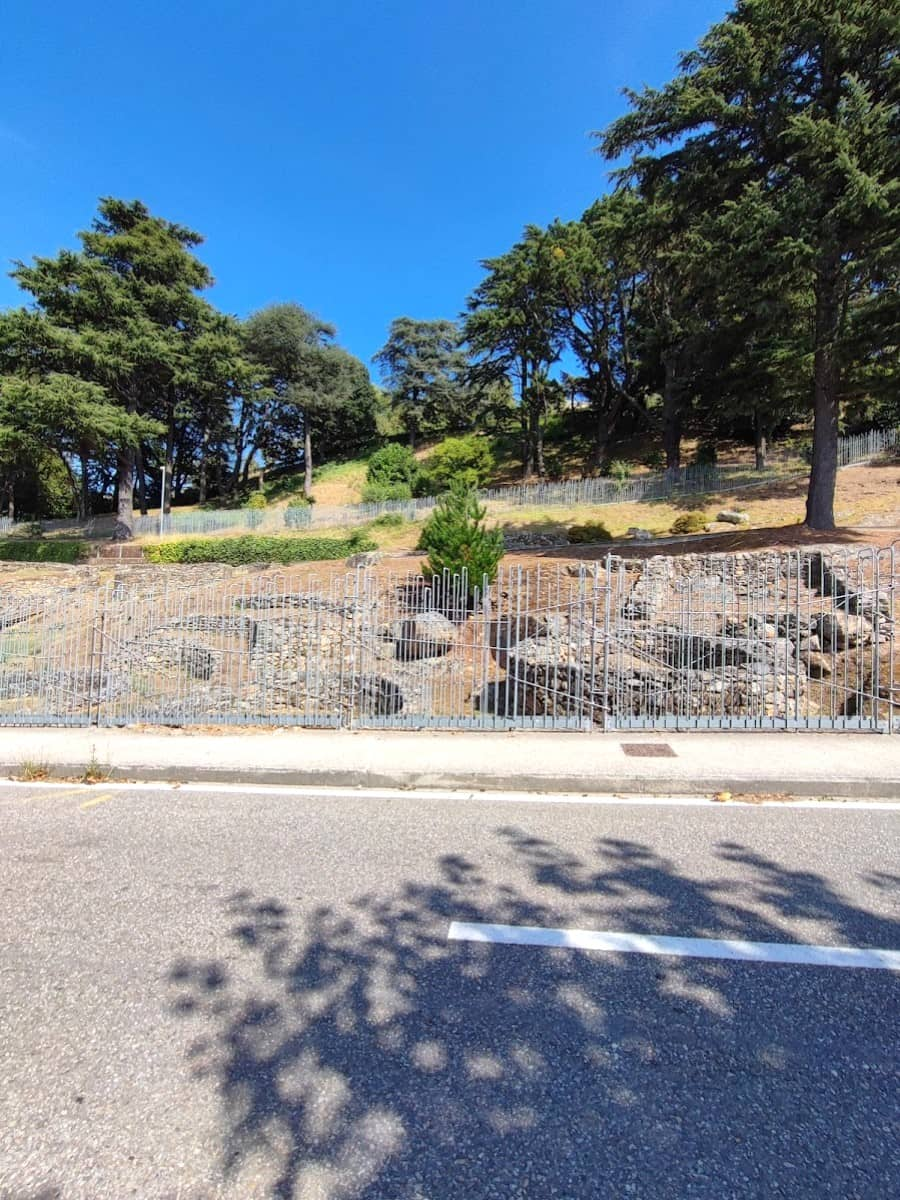
Historical layers. Walking through the park, I discovered remnants of Celtic settlements, Roman fortifications, and medieval castle walls – all on one hill. The underground tunnels that once connected military positions are particularly fascinating, though only partially open to visitors during tours.
Urban oasis. What surprised me most was the beautiful botanical garden with exotic plants, peaceful ponds, and hidden benches perfect for reading or simply soaking in the atmosphere. The park is especially magical in late afternoon when golden light filters through the trees.
| Monte O Castro Attractions | Description | Notes |
|---|---|---|
| Castle Ruins | 17th century fortress remains | Free to explore |
| Archaeological Site | Celtic and Roman remains | Interpretive panels in Spanish/Galician |
| Mirador Viewpoint | 360° city and bay views | Best spot for sunset photos |
| Botanical Gardens | Exotic plants and peaceful paths | Well-maintained year-round |
| Underground Tunnels | Military passages | Limited access |
- Visitor tips:
- Enter from Avenida del Castillo for the easiest ascent
- Allow 2-3 hours to fully explore the park
- Combine with a visit to nearby Casco Vello (Old Town)
6. Castro de Santa Trega (Celtic Ruins)
Celtic time capsule. Perched high above the Miño River estuary, Castro de Santa Trega transported me back 2,000 years to pre-Roman Galicia. This remarkably preserved Celtic settlement contains over 100 circular stone houses, offering a rare glimpse into Iron Age life in northwestern Spain.
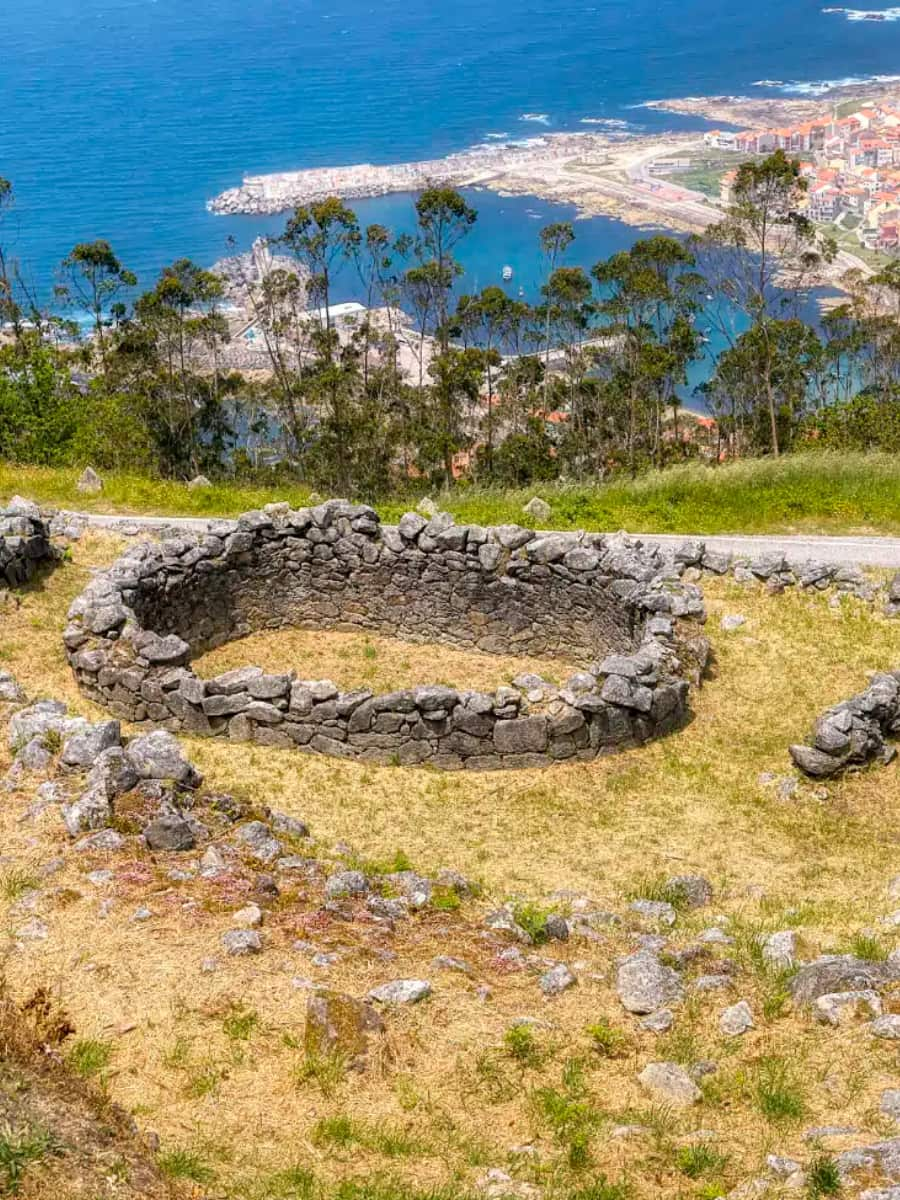

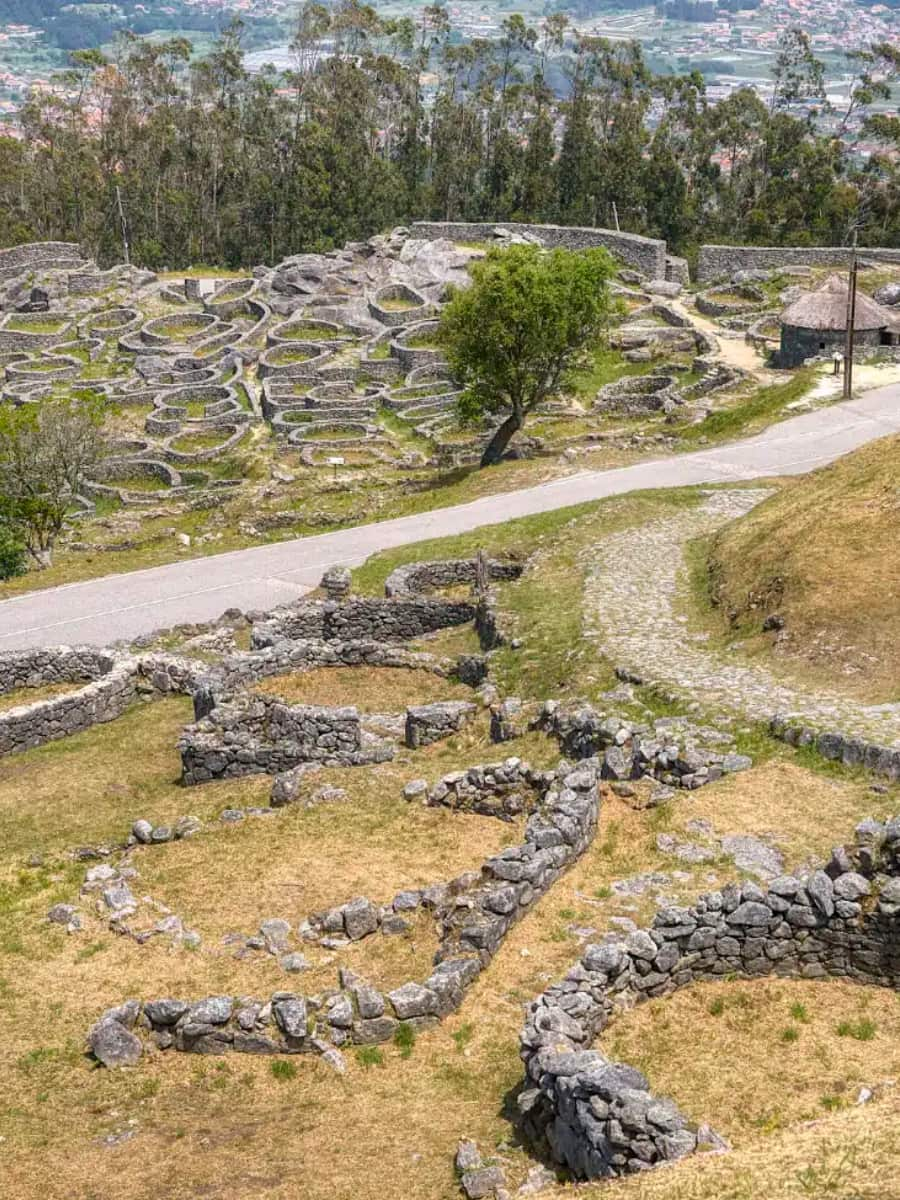
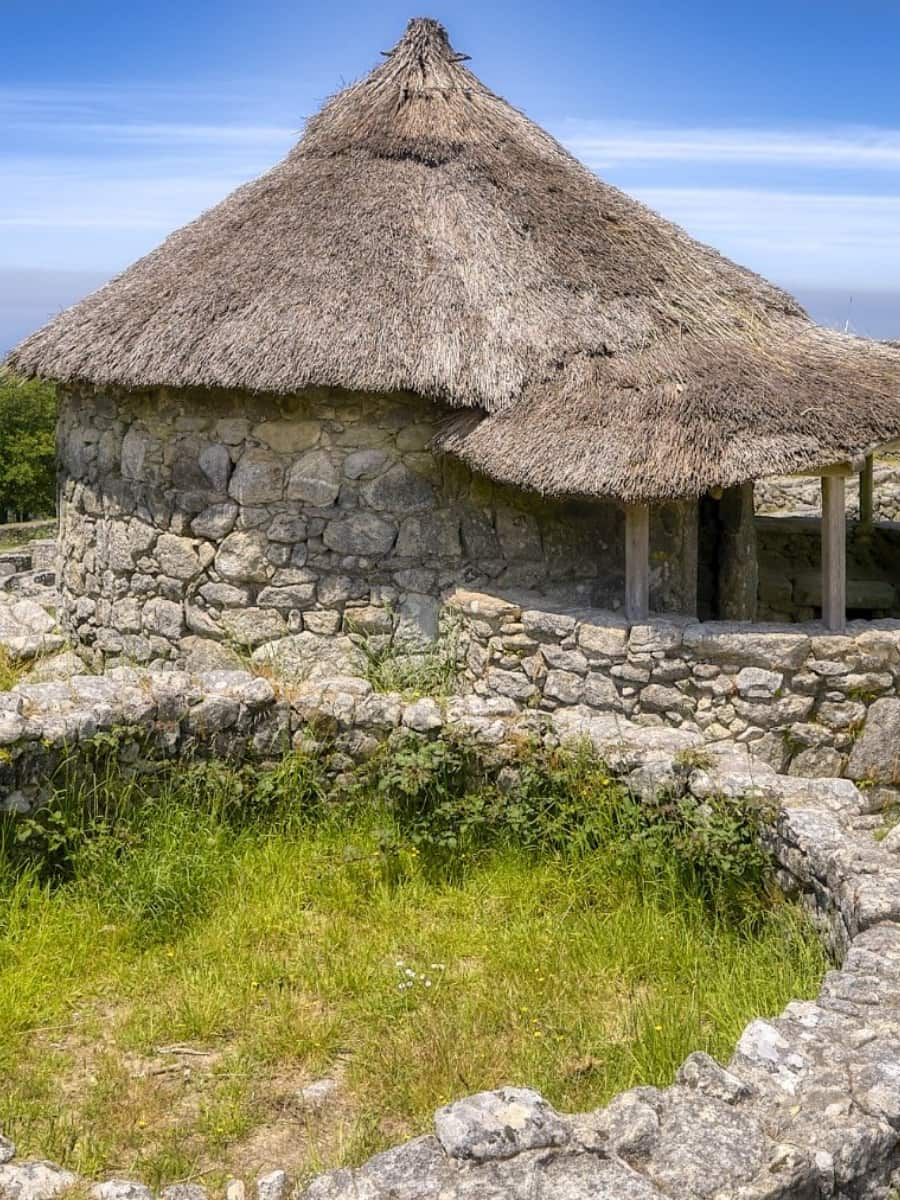
Border views. The panoramic vistas from Santa Trega are simply spectacular – I could see three countries at once (Spain, Portugal, and the Atlantic Ocean). The Miño River forms a natural border with Portugal, and watching fishing boats navigate these waters while standing among ancient ruins created a powerful connection between past and present.
Archaeological treasures. The small but excellent Museo Arqueolóxico houses artifacts found at the site, including pottery, jewelry, and stone carvings. I was particularly fascinated by the “pedras formosas” (beautiful stones) with their intricate Celtic spiral designs that show the artistic sophistication of these ancient people.
| Santa Trega Information | Details |
|---|---|
| Location | A Guarda, 50km from Vigo |
| Opening hours | 10:00-20:00 (summer), 10:00-18:00 (winter) |
| Entrance fee | 2€ ($2.20) for ruins, 1€ ($1.10) for museum |
| Best accessed by | Car or taxi from A Guarda |
| Time needed | 2-3 hours minimum |
- Recommendations:
- Bring binoculars for bird watching and distant views
- Stop at A Guarda harbor afterward for fresh seafood
7. Cape Finisterre Lighthouse
End of the world. Standing at Cape Finisterre Lighthouse, I truly felt like I’d reached the end of the earth, just as its Latin name “Finis Terrae” suggests. For centuries, this westernmost point of Spain was believed to be where the world ended, with nothing but endless ocean beyond.

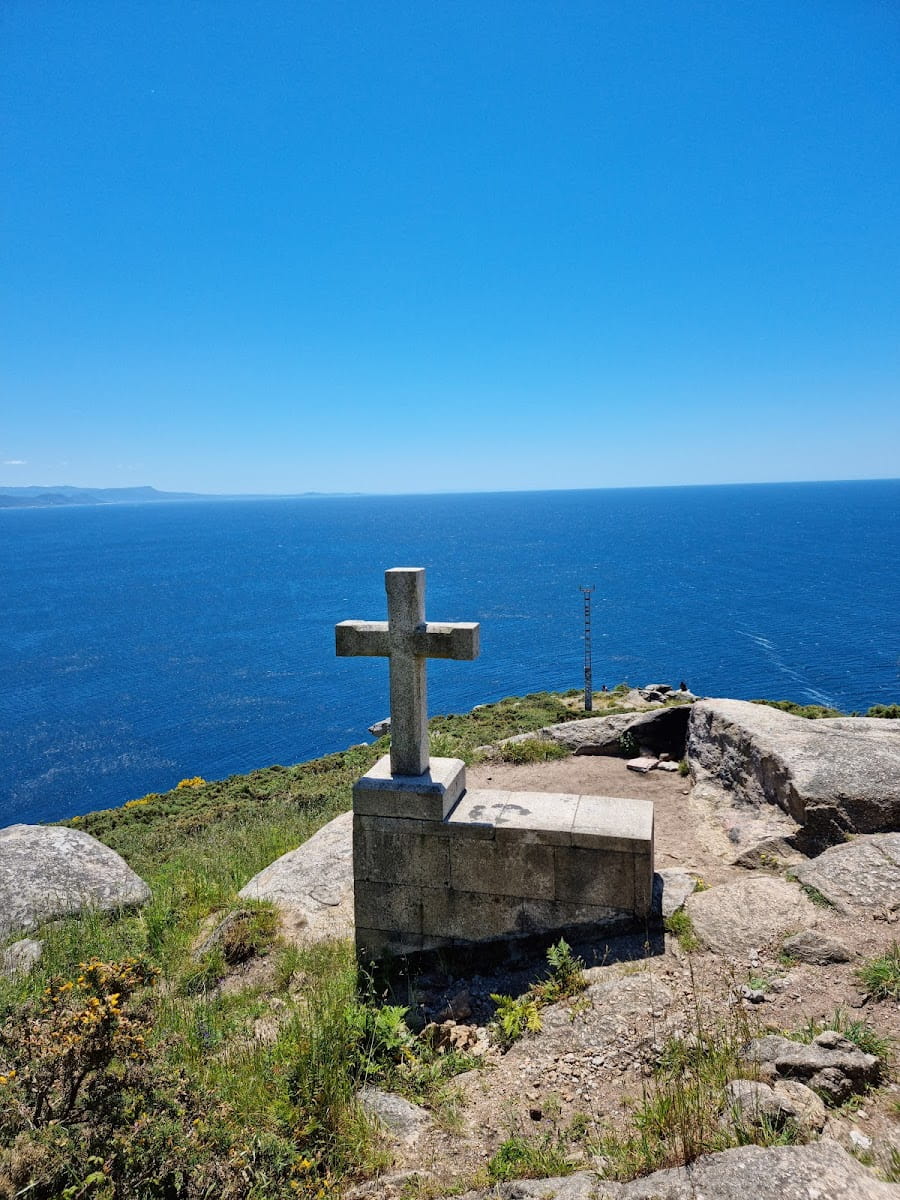


Pilgrim traditions. Many Camino de Santiago pilgrims continue their journey here, considering it the true spiritual end of their pilgrimage. I watched as travelers performed ritual burning of hiking boots or clothes, symbolizing transformation and rebirth after their long journey across Spain.
Sunset magic. The sunset here was simply the most spectacular I’ve witnessed in Europe – a ball of fire seemingly sinking directly into the Atlantic Ocean. Local fishermen told me that on clear days, you can sometimes see a green flash at the exact moment the sun disappears below the horizon.
| Finisterre Experience | Time | Special Features |
|---|---|---|
| Lighthouse Visit | 10:00-19:30 | Small museum inside, 360° viewing platform |
| Pilgrim Rituals | Late afternoon | Boot burning area, kilometer zero marker |
| Sunset Viewing | Changes seasonally | Arrive 1 hour before sunset for best spots |
| Beach Access | Anytime | Praia do Mar de Fóra below the cape |
| Local Seafood | Lunch/dinner hours | Try percebes (barnacles) at O Centolo restaurant |
- Practical information:
- 3.5km walk from Finisterre town to lighthouse (or limited parking)
- Last bus back to Santiago typically leaves at 18:00
- Bring layers – wind can be intense even in summer
- No entrance fee for the cape area (small fee for lighthouse museum)
⭐ Best Activities
- Excursion to Finisterre + Muxia + Costa da Morte (7 stops) – Journey to the west coast of Galicia to visit the legendary “End of the World” at Finisterre and explore the dramatic Costa da Morte. One of the most popular day trips from Santiago offering beautiful views of the rugged coastline.
8. Barnacle Harvesters of Costa da Morte
Dangerous profession. Watching percebeiros (barnacle harvesters) at work along the treacherous Costa da Morte was both terrifying and fascinating. These brave men and women risk their lives climbing down jagged cliffs and timing their harvests between powerful Atlantic waves to collect gooseneck barnacles, one of Spain’s most expensive seafood delicacies.
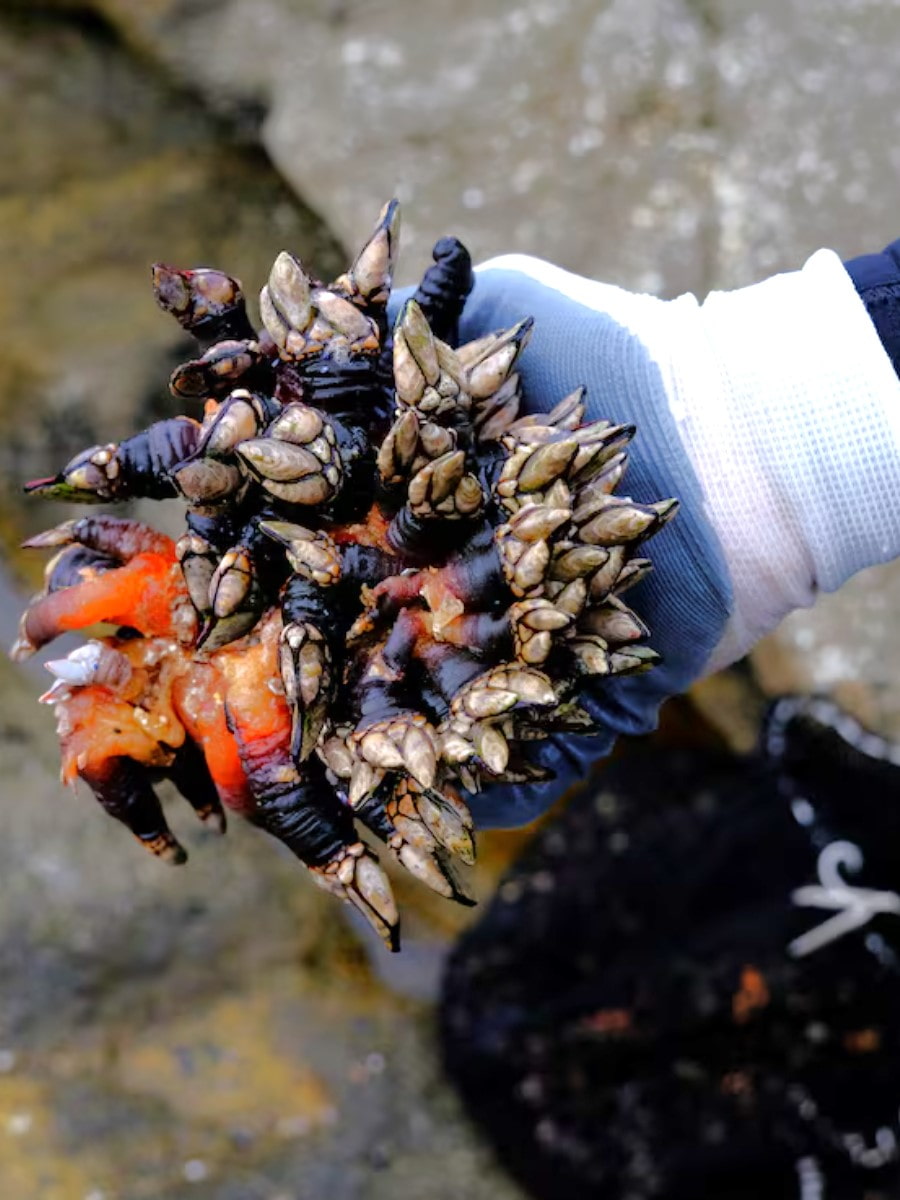
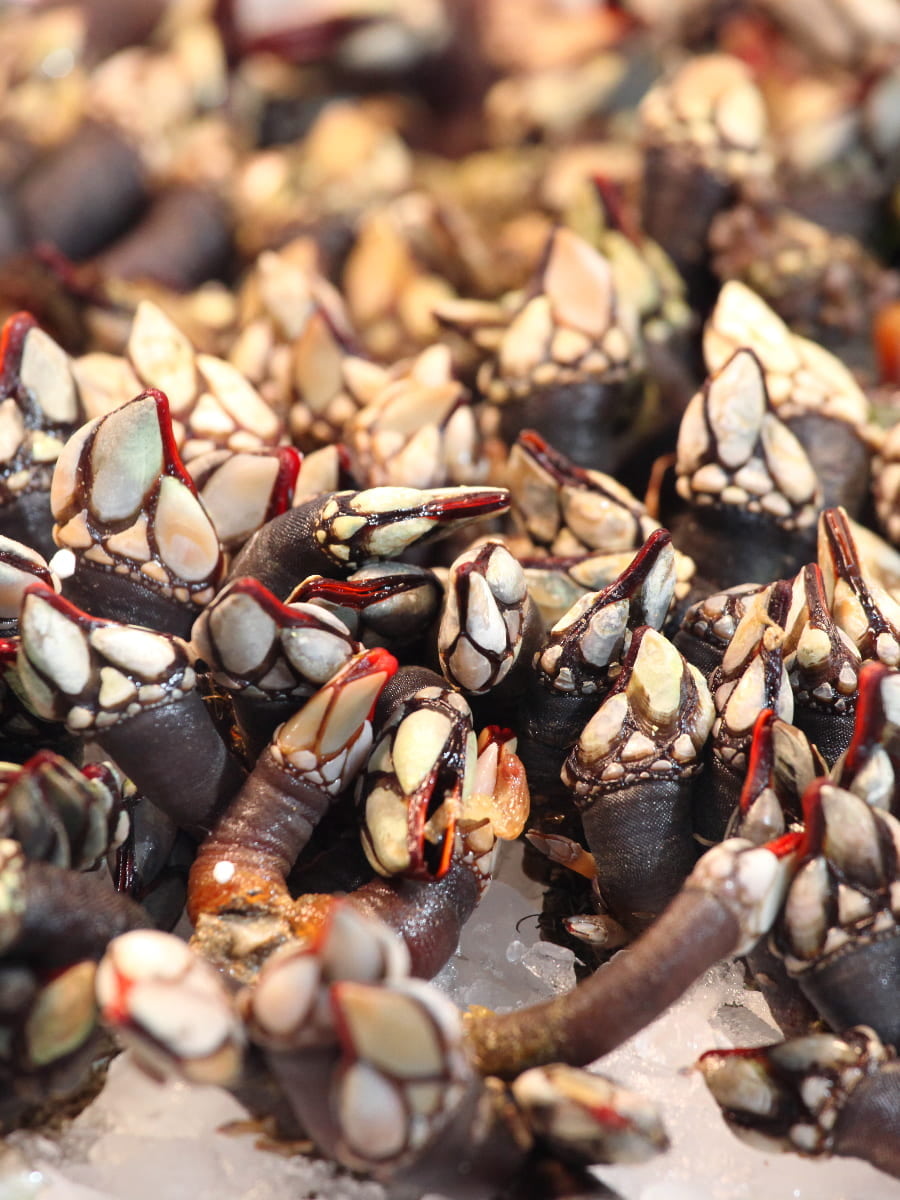
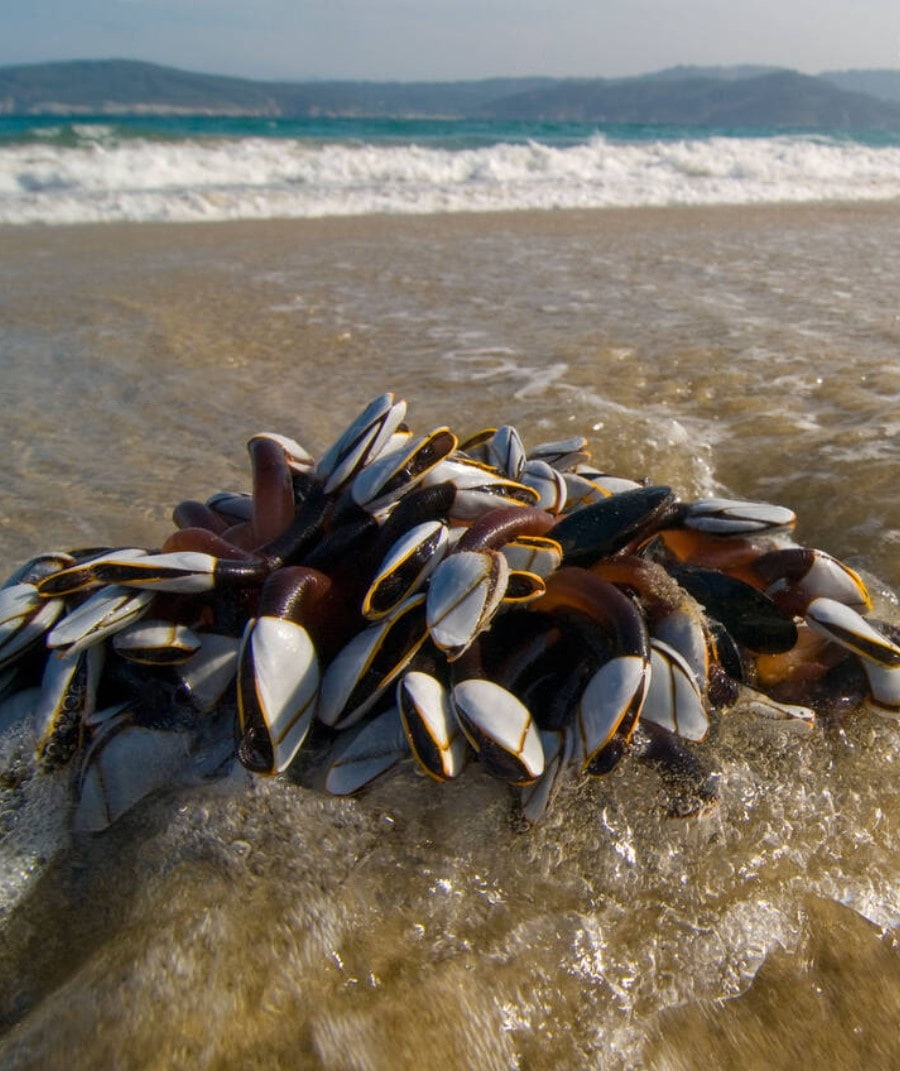
Culinary gold. In the fishing village of O Rocundo, I tried freshly harvested percebes at a small family restaurant, paying 45€ per kilo – a bargain compared to Madrid prices that can reach 200€/kg during Christmas. Their sweet, briny flavor truly tastes like the essence of the ocean, making it clear why they command such high prices.
Cultural heritage. In Corme, I visited the small Museo do Percebe, which documents this dangerous tradition through photographs, tools, and personal stories. The curator, a former percebeiro himself, showed me scars from his 30-year career and explained how climate change and overharvesting are threatening this centuries-old practice.
| Barnacle Harvesting Facts | Details |
|---|---|
| Harvesting season | October to April (best quality) |
| Average price | 40-120€/kg depending on season |
| Fatalities | 2-5 harvesters per year on average |
| License requirements | Strict quotas and limited permits |
| Traditional tools | Rasqueta (scraper), neoprene suit, rope |
- Where to experience barnacle culture:
- Corme’s Festa do Percebe (Barnacle Festival) – July
- O Rocundo harbor (morning arrivals around 11:00)
- Restaurante O Cruxeiro in Muxía for authentic preparation
9. Ribeira Sacra Wine Region
Hidden vineyards. Exploring the dramatic Ribeira Sacra wine region, I was amazed by the heroic viticulture practiced here for over 2,000 years. Vineyards cling to impossibly steep terraces above the Sil and Miño rivers, some at 85-degree angles that can only be worked by hand or with small monorail systems.
Top wines. At Adega Algueira, a family-run winery near the 12th-century monastery of Santo Estevo, I sampled exceptional Mencía reds and Godello whites while learning how monks originally established these vineyards. The winemaker explained that the region’s microclimate creates wines with remarkable minerality and freshness.

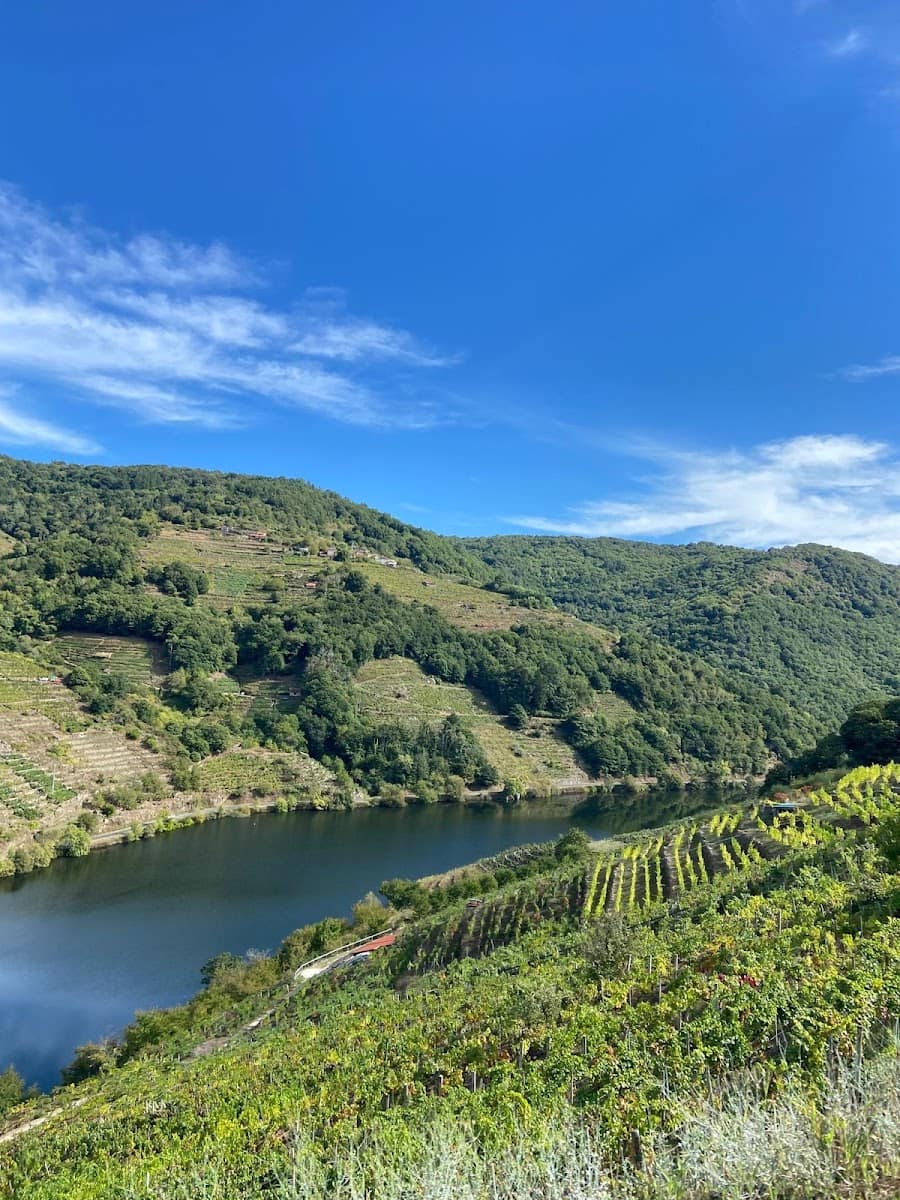
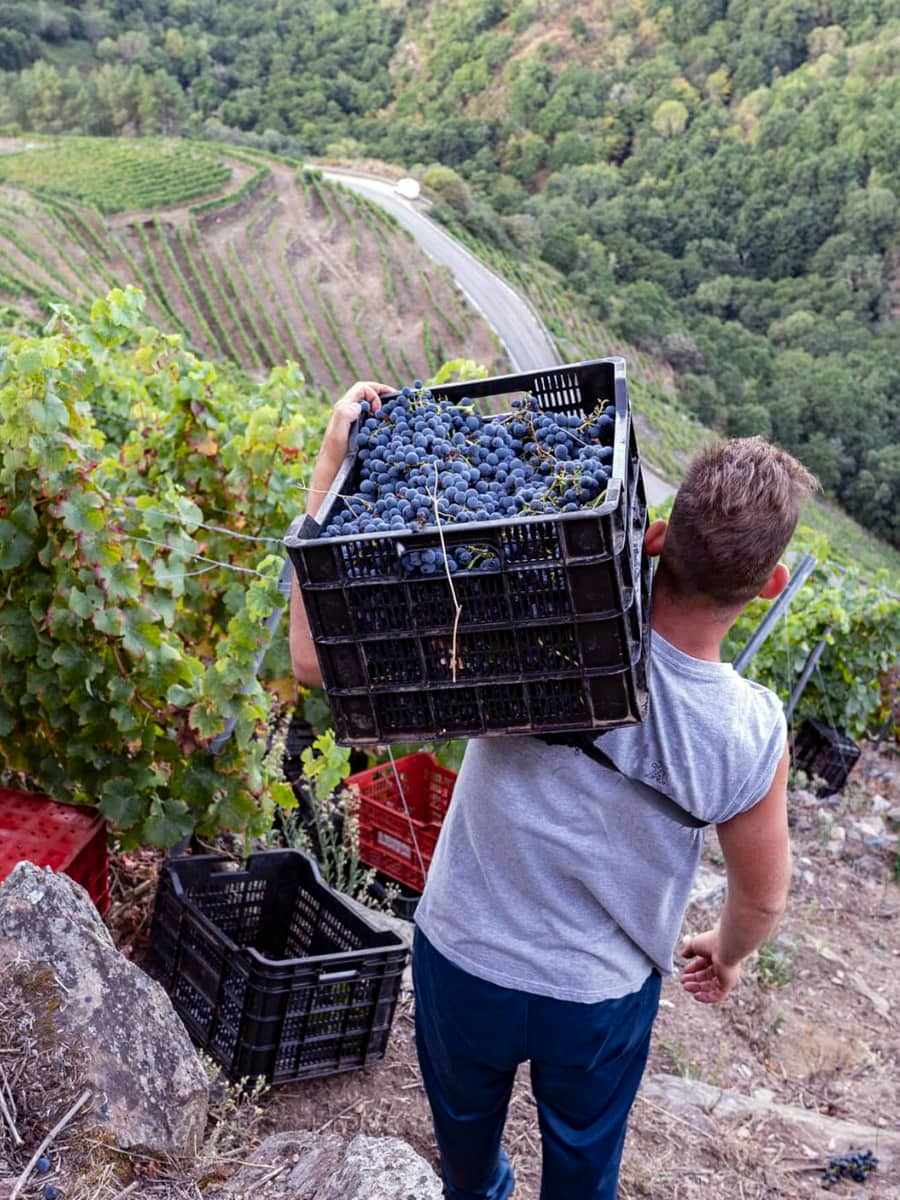
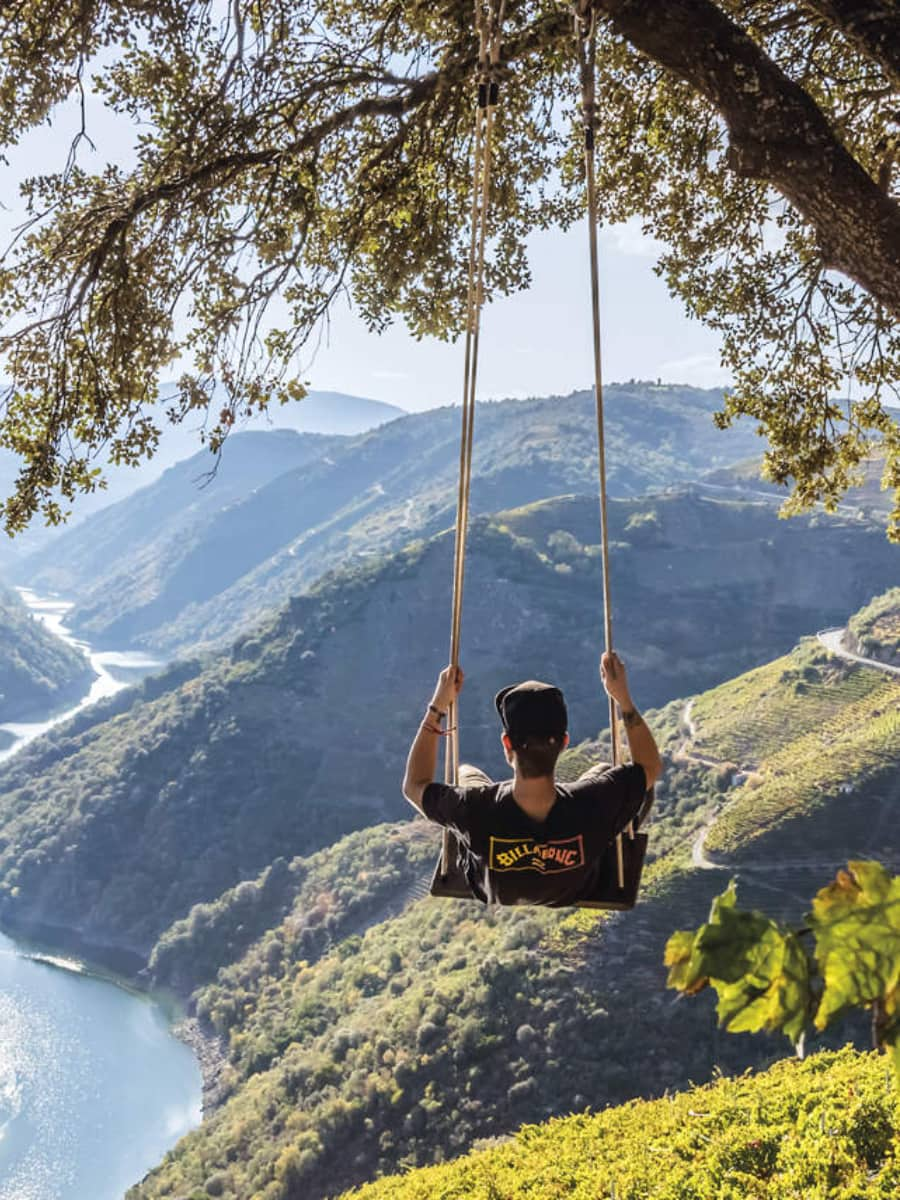
River perspectives. Taking a catamaran cruise along the Sil Canyon offered the most spectacular views of these “sacred banks” (the meaning of Ribeira Sacra). From the water, I could fully appreciate the monumental effort required to farm these vertiginous slopes and understand why Roman writers called this wine “liquid gold.”
| Ribeira Sacra Wines | Characteristics | Food Pairings |
|---|---|---|
| Mencía (red) | Cherry, blackberry, peppery notes | Galician veal, game meats, aged cheeses |
| Godello (white) | Apple, citrus, mineral | Octopus, seafood, soft cheeses |
| Merenzao (red) | Light, floral, raspberry | Poultry, river fish, vegetable dishes |
| Treixadura (white) | Peach, herbs, medium body | Shellfish, empanadas, light pasta |
| Albariño (white) | Saline, apricot, high acidity | Raw seafood, grilled fish, salads |
- Winery visits worth making:
- Adega Algueira (traditional methods, stunning location)
- Regina Viarum (panoramic terrace, tours)
- Dominio do Bibei (biodynamic practices, ancient vineyards)
⭐ Best Activities
- Day Trip to Ribeira Sacra from Santiago de Compostela – Discover one of the most beautiful natural areas in Galicia with this day trip to the stunning Ribeira Sacra region. Visit vineyards and enjoy spectacular canyon views throughout this unique part of Spain.
10. Fragas do Eume Natural Park
Atlantic rainforest. Walking through Fragas do Eume felt like stepping into a fairy tale – this ancient Atlantic forest is one of Europe’s best-preserved deciduous woodlands. Massive oak and chestnut trees draped in moss and ferns create a mystical atmosphere that transported me far from the modern world.
Biodiversity haven. My guide pointed out rare species found nowhere else in Spain, including over 20 types of ferns and endangered lichens that indicate the exceptional air quality. I was lucky enough to spot a pine marten darting through the undergrowth – one of the many protected mammals that call this forest home.
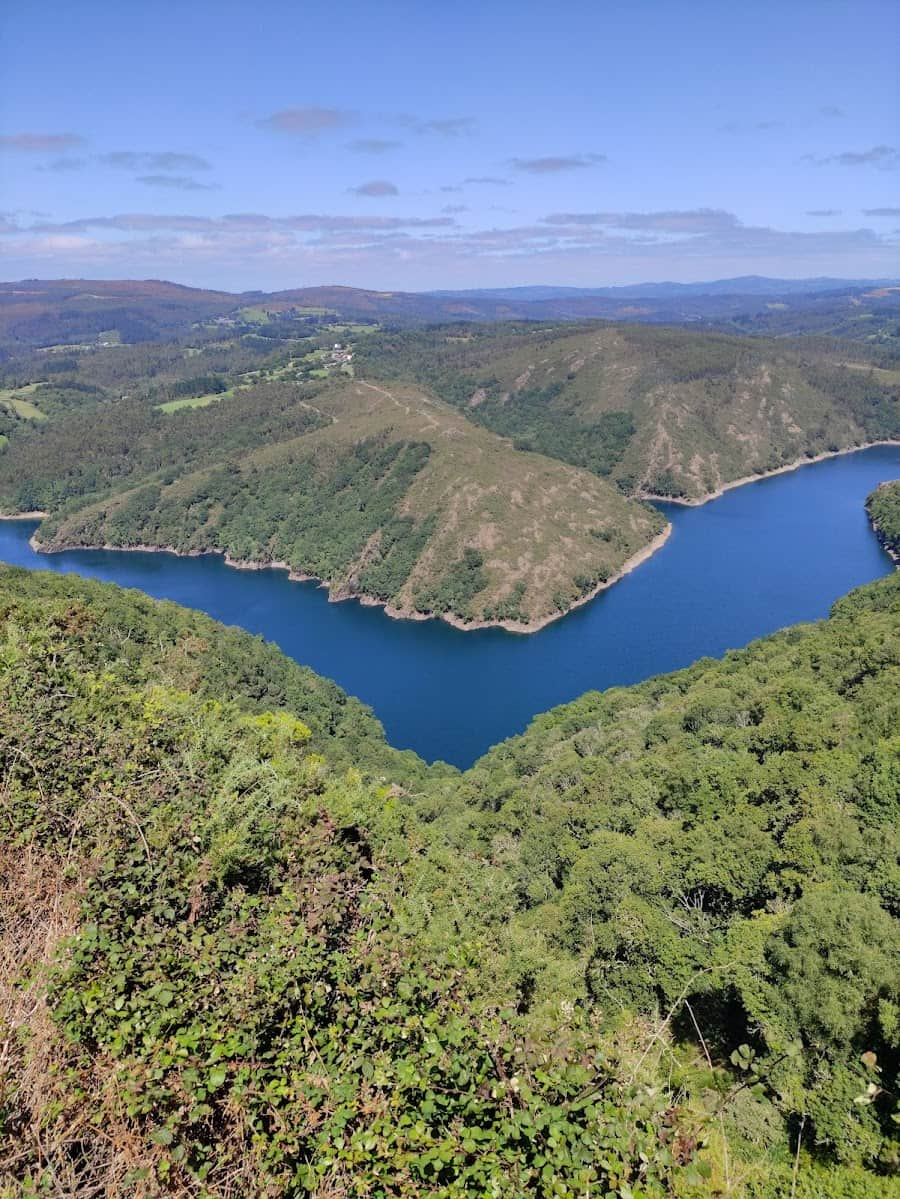
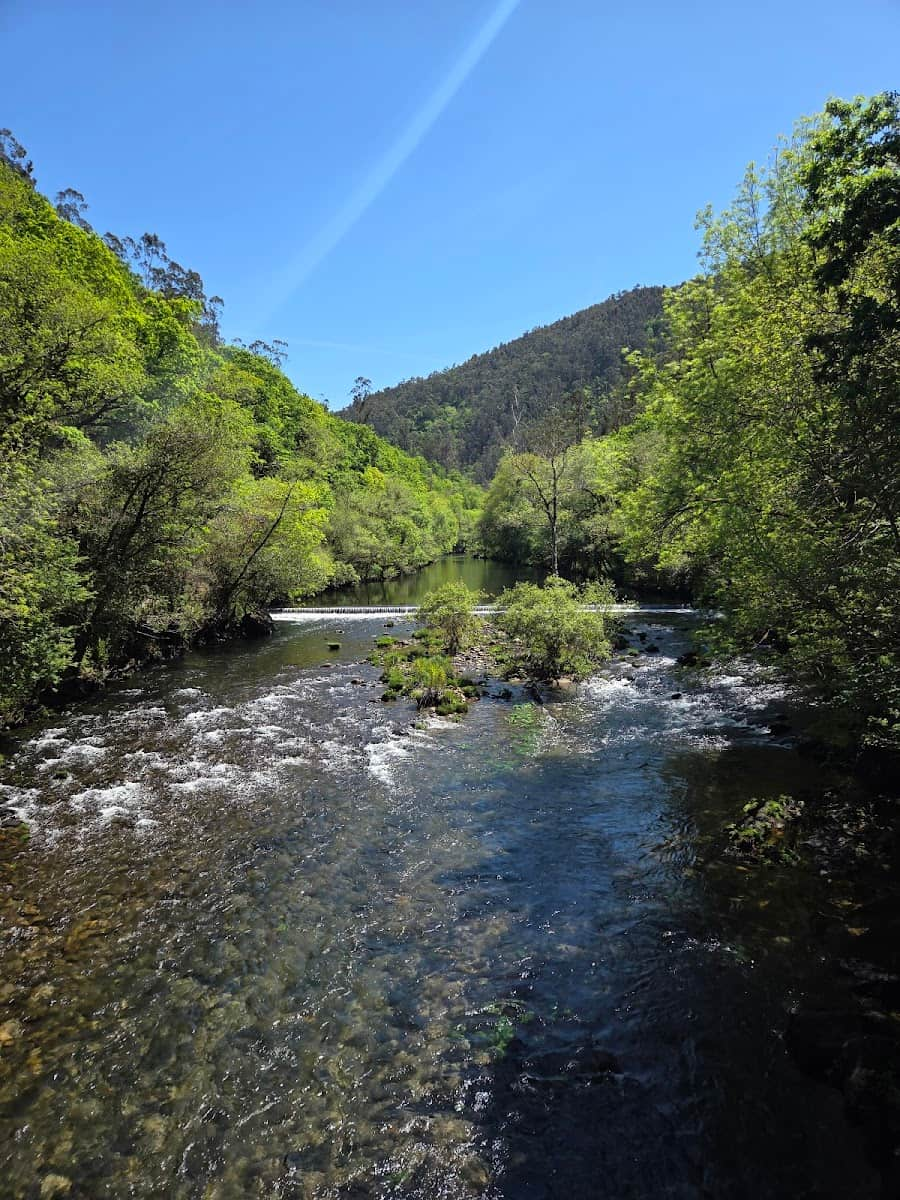
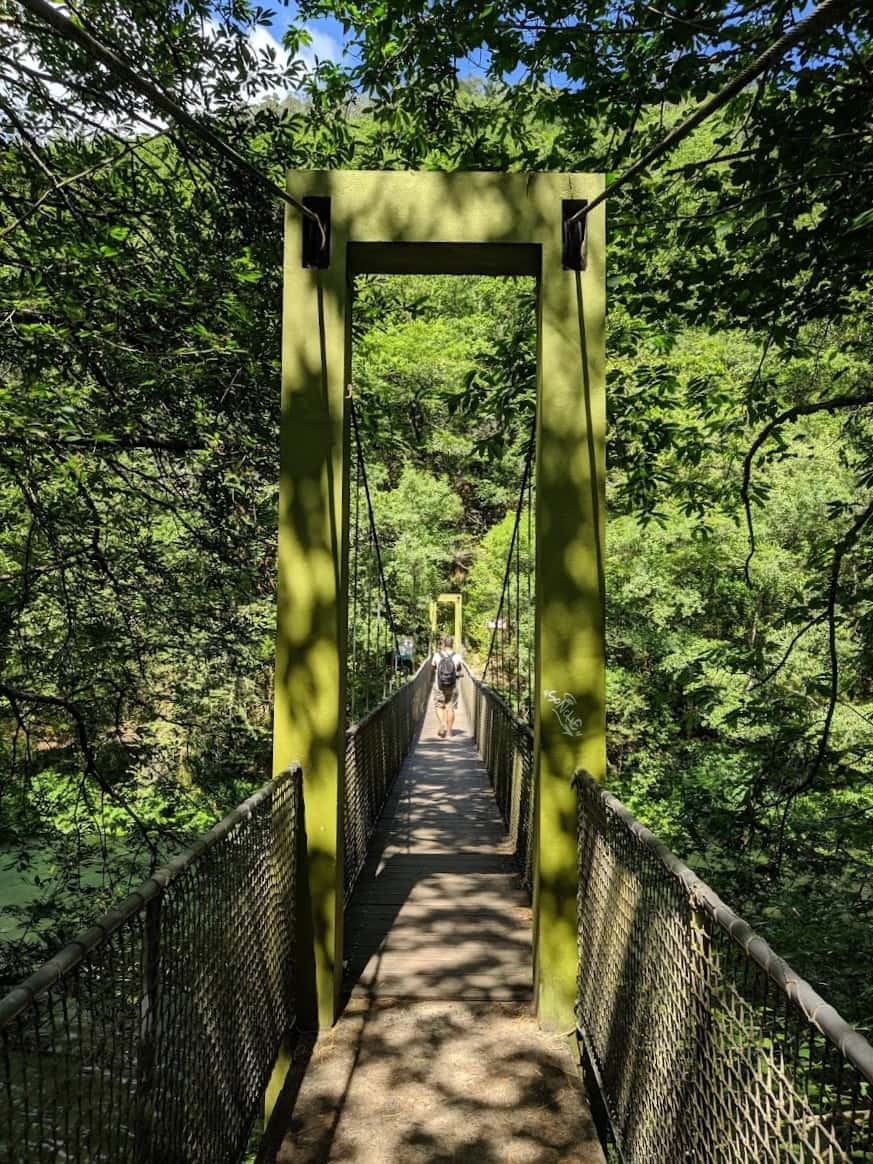

Monastery discovery. Hidden deep within the forest lies the 10th-century Monastery of Caaveiro, reached only by a challenging hike or the park’s shuttle service. Standing on its stone terraces overlooking the Eume River canyon, I understood why monks chose this isolated spot for contemplation and connection with nature.
| Fragas do Eume Trails | Distance | Difficulty | Highlights |
|---|---|---|---|
| Caaveiro Monastery Route | 5km round trip | Moderate | Historic monastery, river views |
| Cal Grande Waterfall | 7km round trip | Challenging | Secluded waterfall, old growth forest |
| River Path | 3km one-way | Easy | Riverside flora, swimming spots |
| Birdwatching Circuit | 4km loop | Easy | Observation points, diverse habitats |
| Complete Forest Traverse | 14km | Difficult | Remote sections, diverse ecosystems |
- Essentials:
- Bring water and snacks (limited facilities)
- Wear waterproof footwear (trails can be muddy)
- Check visitor center for guided tour schedule
11. Lugo Cathedral
Architectural blend. Lugo Cathedral impressed me with its mix of Romanesque, Gothic, and Baroque styles, reflecting centuries of construction and renovation. The peaceful cloister, with its delicate arches and carved capitals, was my favorite spot to pause and soak in the quiet atmosphere away from the busy city streets.
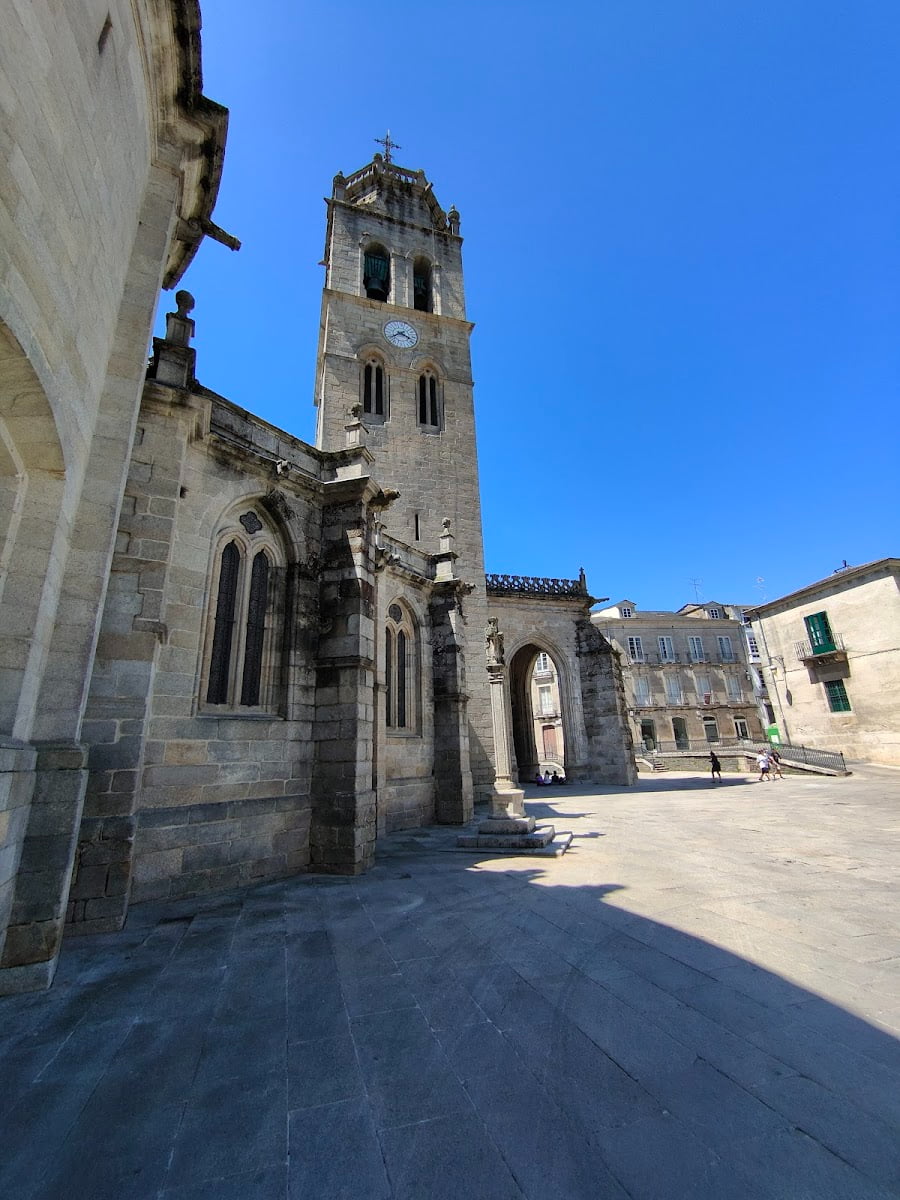
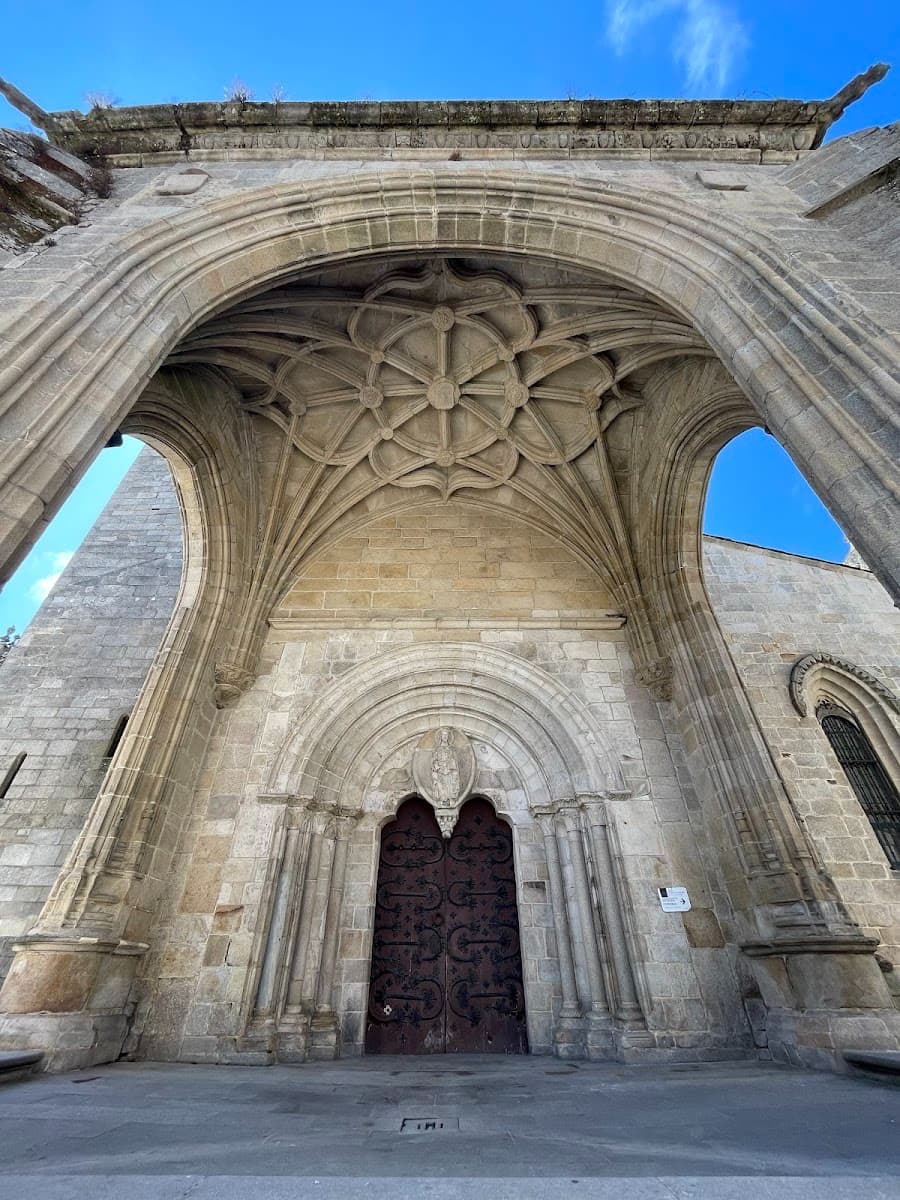
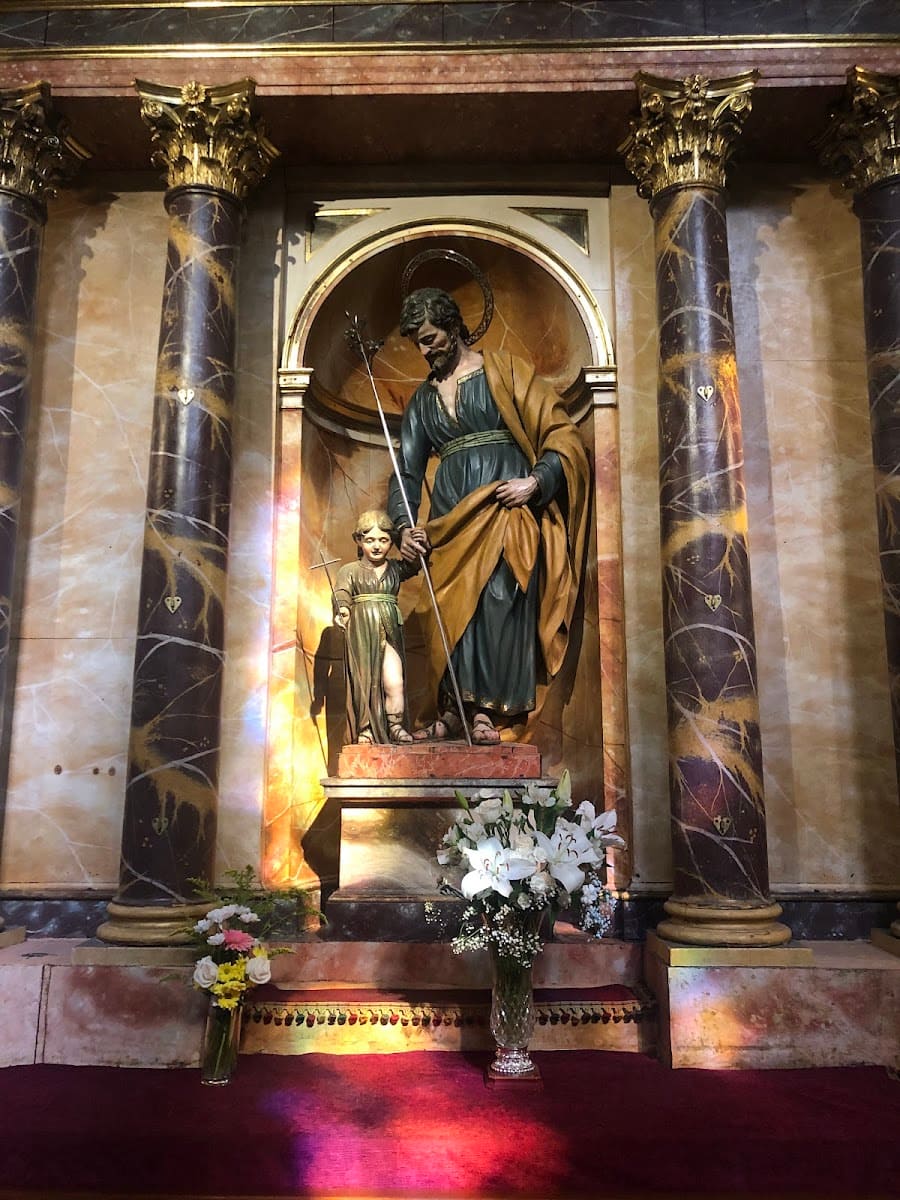
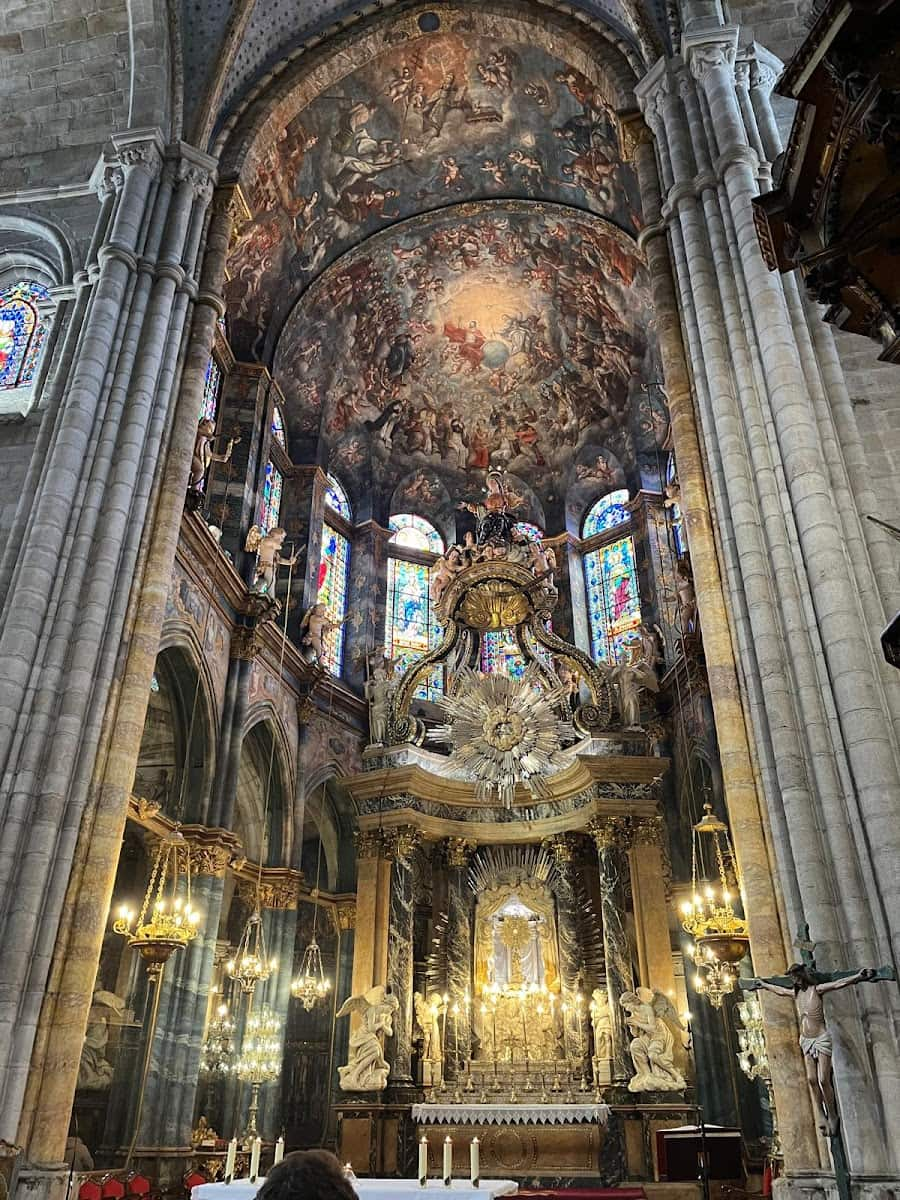
Pilgrim stop. Located on the Camino Primitivo route, the cathedral welcomes many pilgrims who come to admire its impressive altar and richly decorated chapels. I joined a midday mass to experience the cathedral’s spiritual side, enhanced by the soft glow of stained glass windows filtering sunlight.
Museum treasures. The small cathedral museum houses religious art and artifacts, including medieval vestments and silver chalices. I found the detailed explanation panels helpful, especially since the audio guide was only in Spanish and Galician.
| Lugo Cathedral Info | Details |
|---|---|
| Entrance fee | 3€ ($3.30) |
| Opening hours | 10:00-14:00, 16:00-19:00 |
| Guided tours | 5€ ($5.50), booking recommended |
| Location | Plaza de Santa María, Lugo |
⭐ Best Activities
- Guided Tour to Cathedrals Beach with Lugo and Ribadeo from A Coruña – Visit Cathedrals Beach, often called one of the most beautiful beaches in Galicia, along with the historic Roman walls of Lugo. Plan your visit carefully as this beach requires reservation through www.reservasillasatlanticas.es.
12. Castelo do Castro
Historic fortress. Castelo do Castro sits atop a hill in Vigo, offering sweeping views of the city and harbor. I explored the well-preserved walls and bastions, imagining the centuries of defense against pirates and invaders that this castle witnessed.
Cultural events. The castle grounds often host open-air concerts and exhibitions, adding a lively cultural dimension to the historic site. I caught a folk music event during my visit, which made the experience even more memorable.
Relaxing park. Surrounding the castle is a peaceful park with shaded paths and benches, perfect for a picnic or quiet reflection after climbing the castle walls. The blend of history and nature here is a highlight of Vigo’s urban landscape.
| Castelo do Castro Info | Details |
|---|---|
| Entrance fee | Free |
| Opening hours | Open daily, daylight hours |
| Location | Monte do Castro, Vigo |
| Facilities | Picnic areas, restrooms nearby |
⭐ Best Activities
- Tavira, Cacela Velha and Castro Marim Tour from Faro – While not in Galicia, this tour offers a chance to see many beautiful places in southern Portugal, making it a great addition if you’re exploring the Iberian Peninsula.
13. Monte de San Pedro
Panoramic viewpoint. Monte de San Pedro offers one of the most spectacular views over A Coruña and the Atlantic Ocean. I took the elevator inside the former military bunker to reach the top, where landscaped gardens and modern sculptures create a peaceful atmosphere.
Historical significance. The site was once a heavily fortified military base guarding the city’s harbor. Today, it’s a public park blending history with leisure, featuring a café with outdoor seating perfect for enjoying the views with a coffee or local pastry.
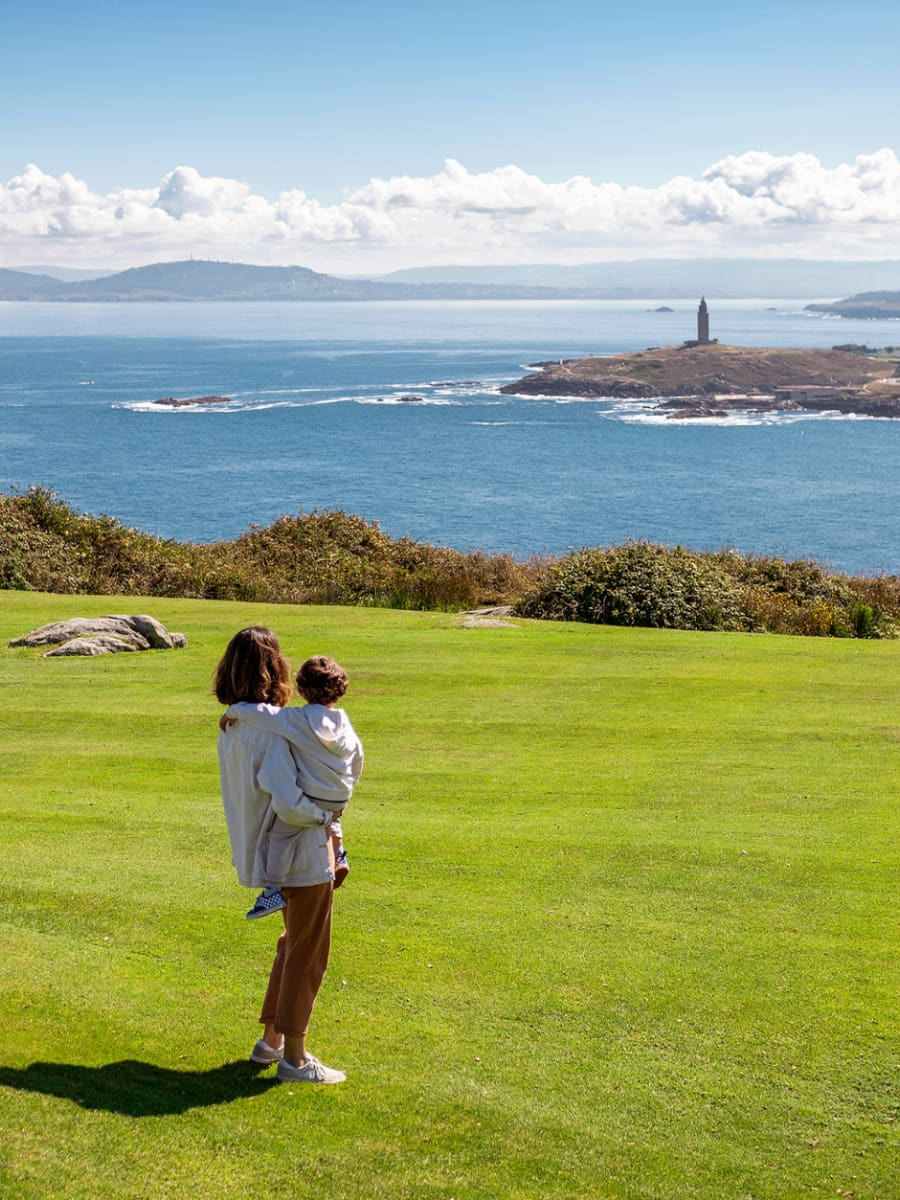

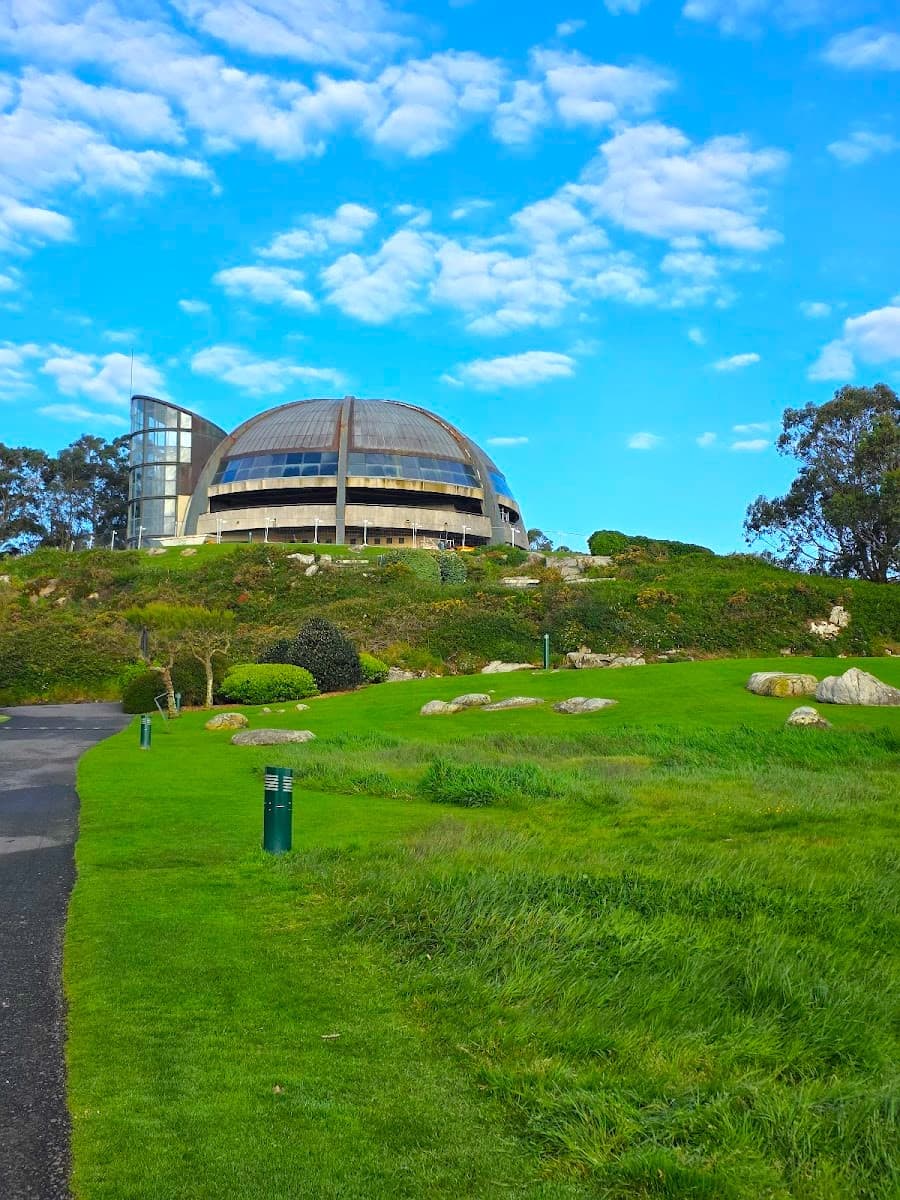

Family-friendly. The park has playgrounds and picnic areas, making it a popular spot for families. I saw children running freely while parents relaxed on benches shaded by tall pine trees.
| Monte de San Pedro Info | Details |
|---|---|
| Entrance fee | Free |
| Opening hours | 9:00-22:00 |
| Elevator access | Free, open during park hours |
| Location | A Coruña |
14. Ottone
Cultural hotspot. Ottone is a popular tapas bar in Vigo’s Old Town where I enjoyed some of the best local seafood dishes. The lively atmosphere and friendly staff made it easy to strike up conversations with locals and fellow travelers.
Seafood specialties. Their pulpo a la gallega (Galician octopus) and percebes (barnacles) were outstanding, fresh from the nearby Atlantic. I paired my meal with a glass of Albariño wine recommended by the bartender, which complemented the flavors perfectly.
Affordable dining. Prices here are reasonable for the quality, with most tapas costing between 3€ and 6€. Ottone is a great place to sample authentic Galician cuisine without breaking the bank.
| Ottone Menu Highlights | Price Range |
|---|---|
| Pulpo a la gallega | 6€ ($6.60) |
| Percebes (barnacles) | 12€ ($13.20) per 100g |
| Albariño wine (glass) | 3.50€ ($3.85) |
| Empanada gallega | 4€ ($4.40) |
| Tapas sampler plate | 10€ ($11) |
Things to Do in Galicia with Kids
1. Vigo Aquarium
Underwater Galicia. The Vigo Aquarium surprised me with its focus on local marine ecosystems rather than exotic species. The Atlantic tank recreates Galicia’s environment with species I’d seen on menus throughout my trip – octopus, turbot, and spider crabs – giving children context about where their food comes from.
Interactive learning. My kids loved the touch pools where they could gently handle starfish, sea urchins, and small crabs under staff supervision. The daily feeding demonstrations were another highlight, especially watching the octopus solve puzzles to reach food – a fascinating display of their intelligence.
| Vigo Aquarium Sections | Main Attractions | Best For |
|---|---|---|
| Atlantic Ecosystems | Local fish species, kelp forests | Understanding local marine life |
| Touch Pools | Hands-on experience with gentle creatures | Young children, tactile learners |
| Shark Tunnel | Walking beneath sand tiger sharks | Dramatic photos, older children |
| Tropical Section | Colorful reef fish, seahorses | Contrast with local species |
| Conservation Gallery | Interactive displays on ocean protection | Teens, environmentally conscious visitors |
- Family visit tips:
- Allow 2-3 hours for a complete visit
- Check feeding schedule at entrance
- Combined tickets available with nearby Navia Beach Park
2. Samil Beach Playground
Fun. Samil Beach Playground offers the perfect combination of sandy shores and family entertainment. While my children explored the extensive play structures, I appreciated the thoughtful design that incorporates natural materials and maritime themes reflecting Vigo’s seafaring heritage.
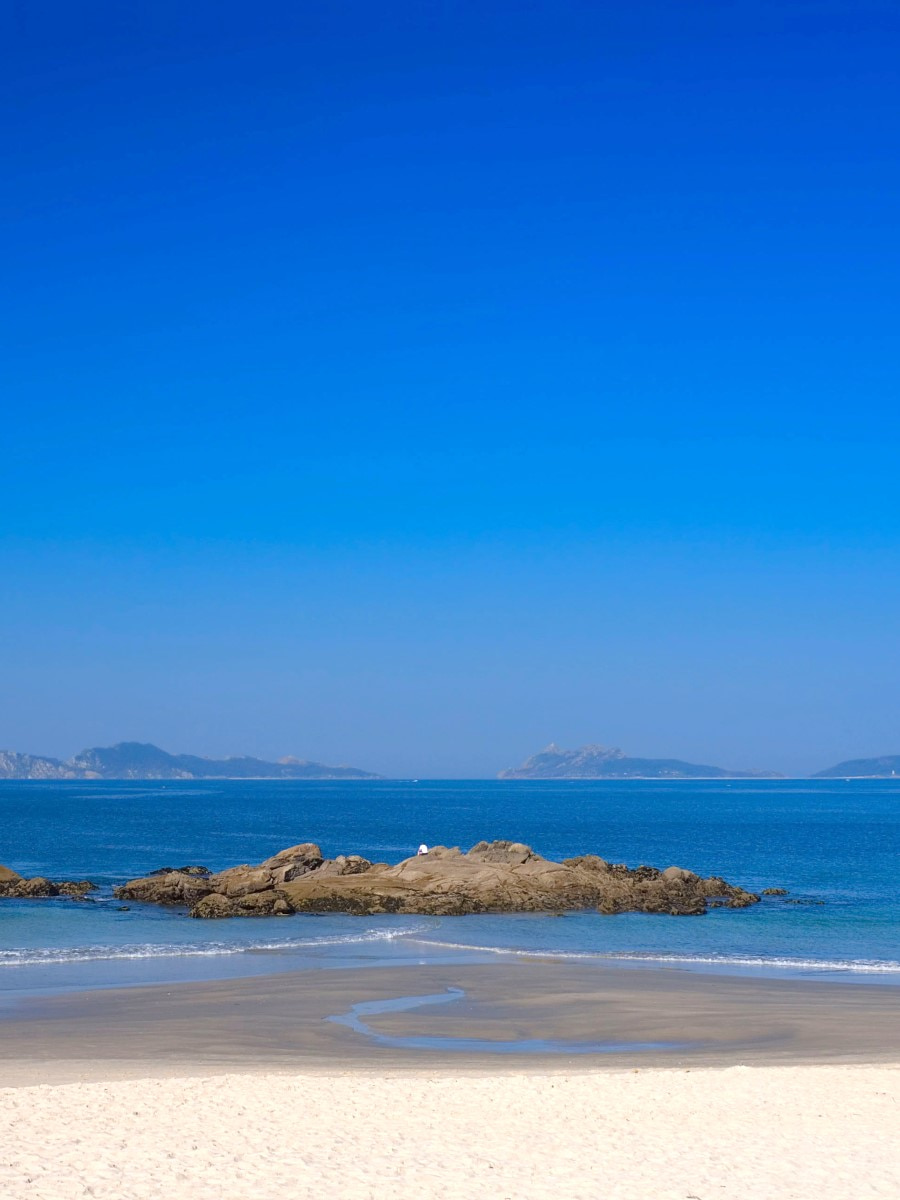
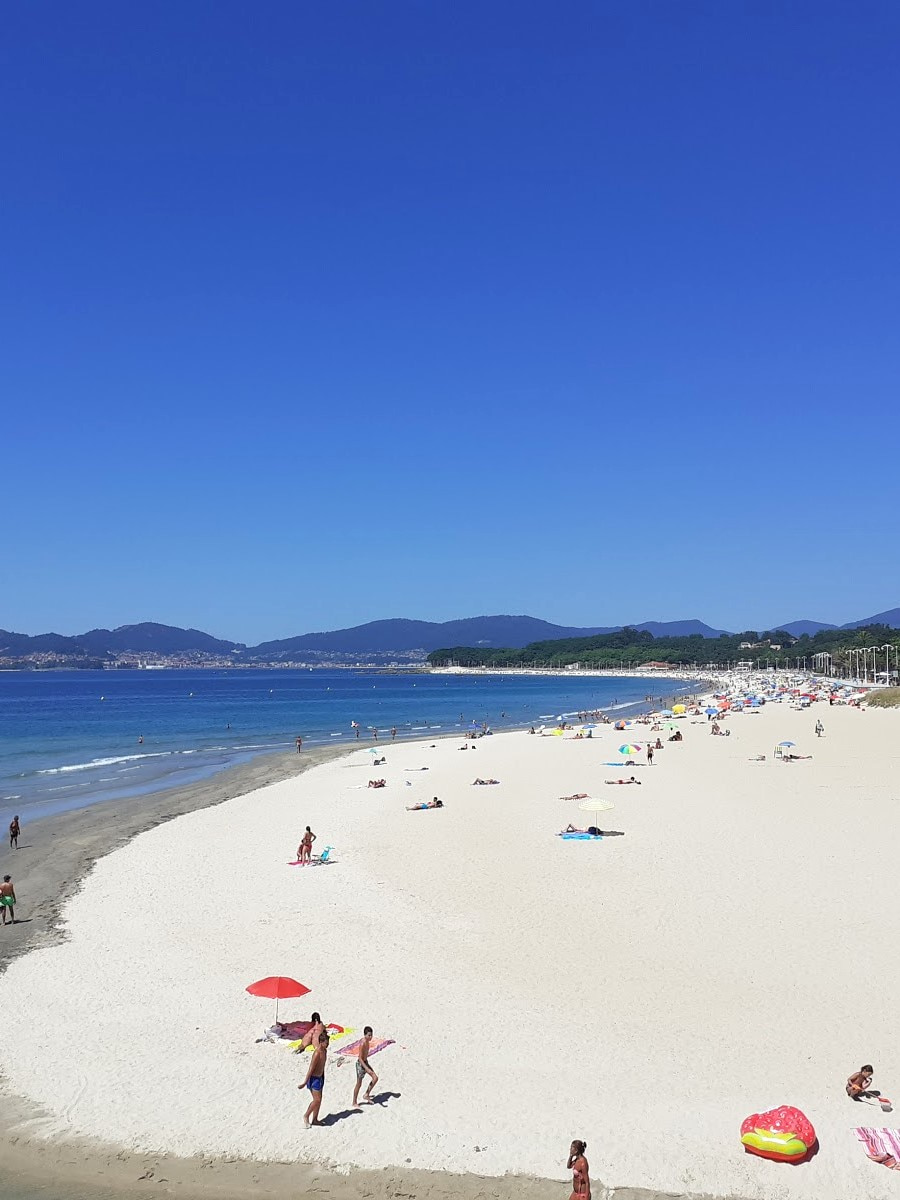
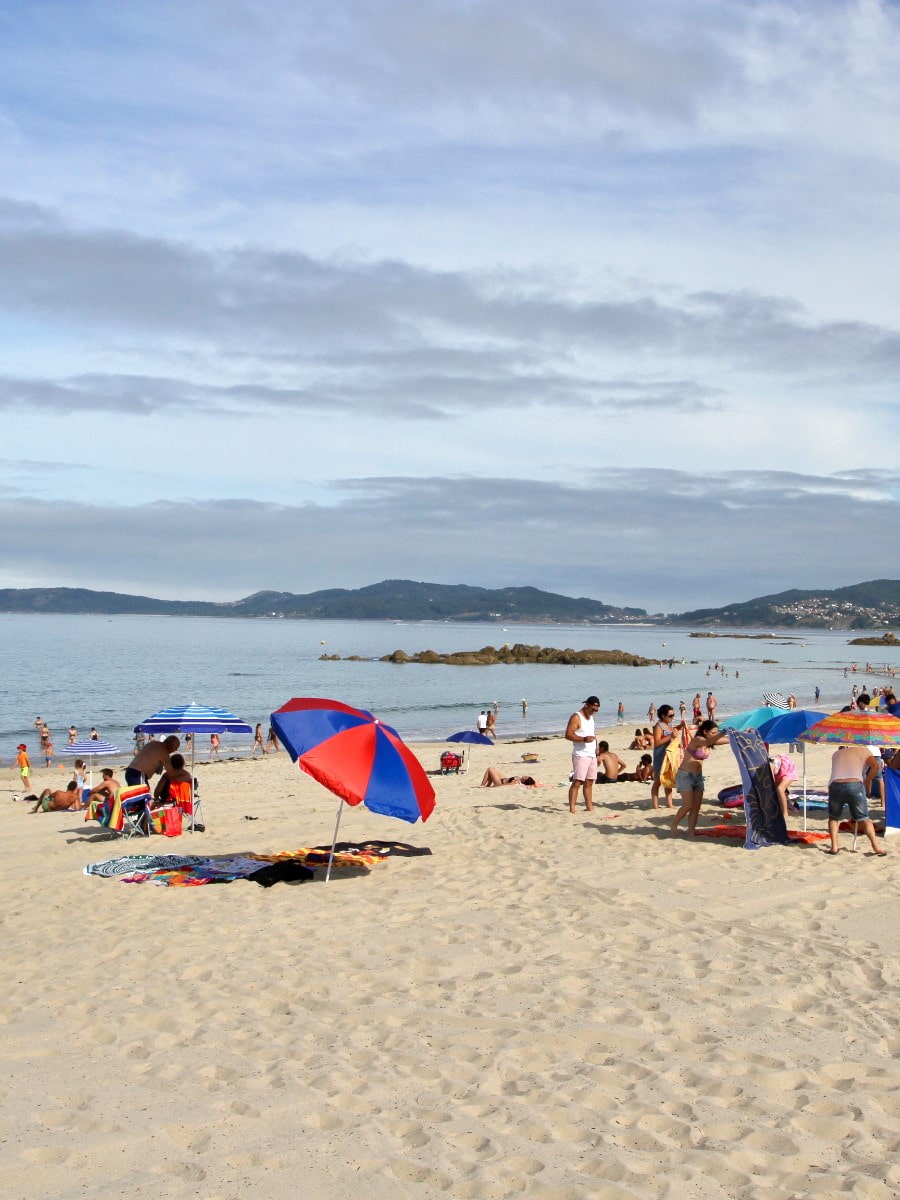
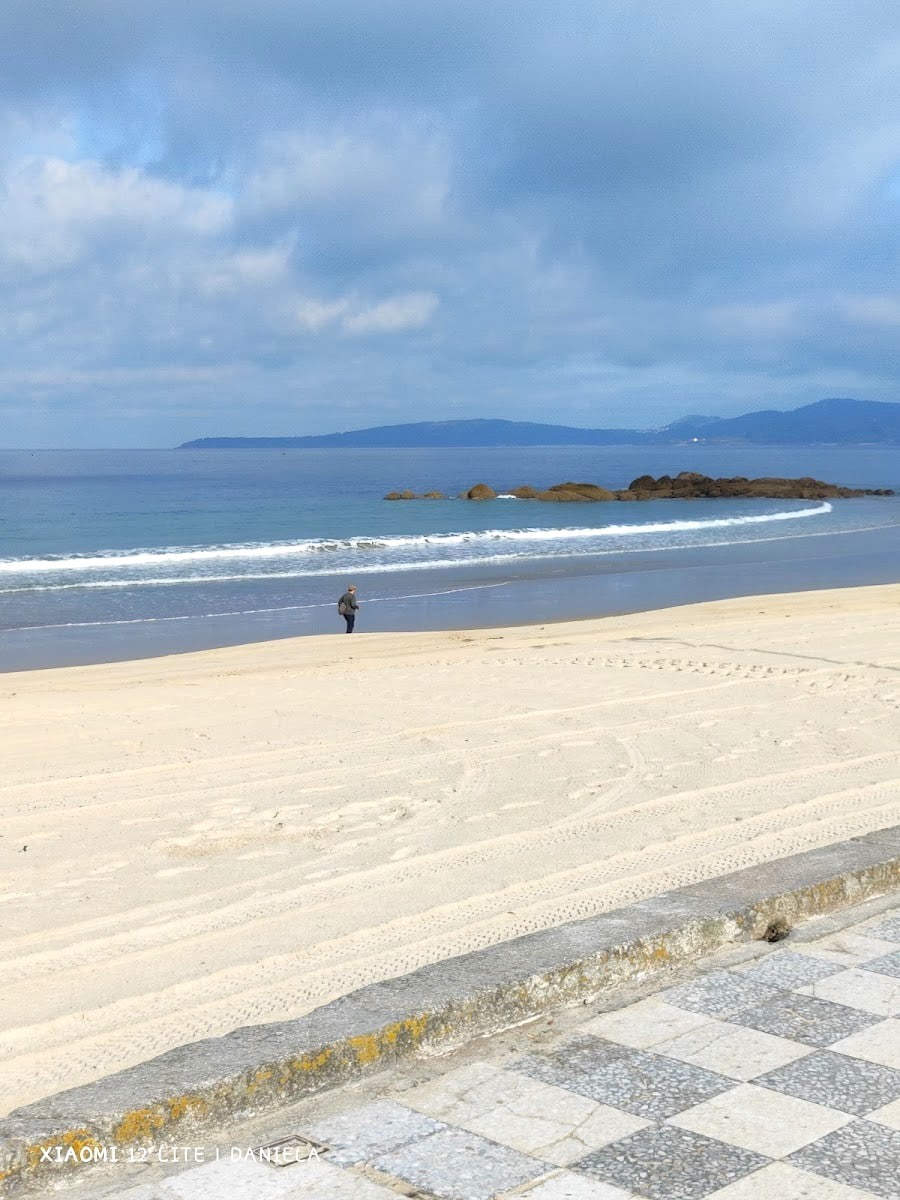
All-ages appeal. What makes this playground special is how it caters to different age groups with separate zones for toddlers, school-age children, and even teenagers. The zipline was particularly popular with my older kids, while the gentle slides and sensory play areas kept my toddler engaged for hours.
Beachside amenities. Unlike many Spanish beaches that lack facilities for families, Samil offers clean restrooms, changing areas, and affordable cafés right beside the playground. The pedestrian promenade made it easy to alternate between beach time and playground breaks throughout our day.
| Playground Features | Age Group | Safety Features |
|---|---|---|
| Toddler Zone | 1-4 years | Soft surfaces, low structures, shade |
| Adventure Area | 5-12 years | Climbing walls, balance courses, tunnels |
| Teen Zone | 13+ years | Zipline, challenging climbs, hangout spaces |
| Water Play | All ages | Shallow fountains, water pumps (summer only) |
| Accessible Equipment | All abilities | Wheelchair-friendly swings, sensory panels |
- Parent recommendations:
- Nearby ice cream shop “Heladería Sirena” offers 20+ flavors
- Free parking available 200m from playground entrance
3. Ourense Thermal Pools
Natural hot springs. Discovering Ourense’s thermal springs was the unexpected highlight of our family trip to Galicia. Unlike fancy spa resorts, these natural pools along the Miño River are accessible to everyone, with temperatures ranging from 37-67°C (98-152°F) and mineral-rich waters known for their therapeutic properties.
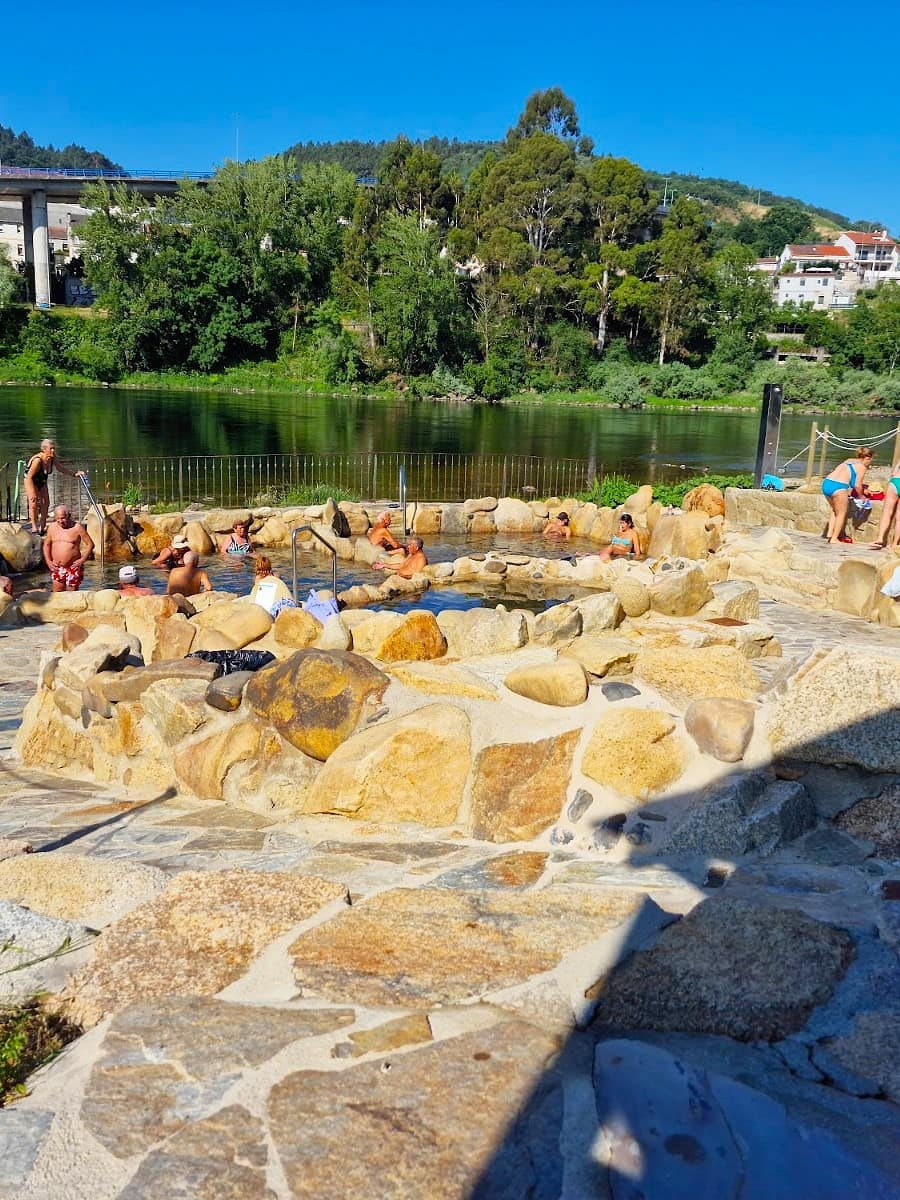

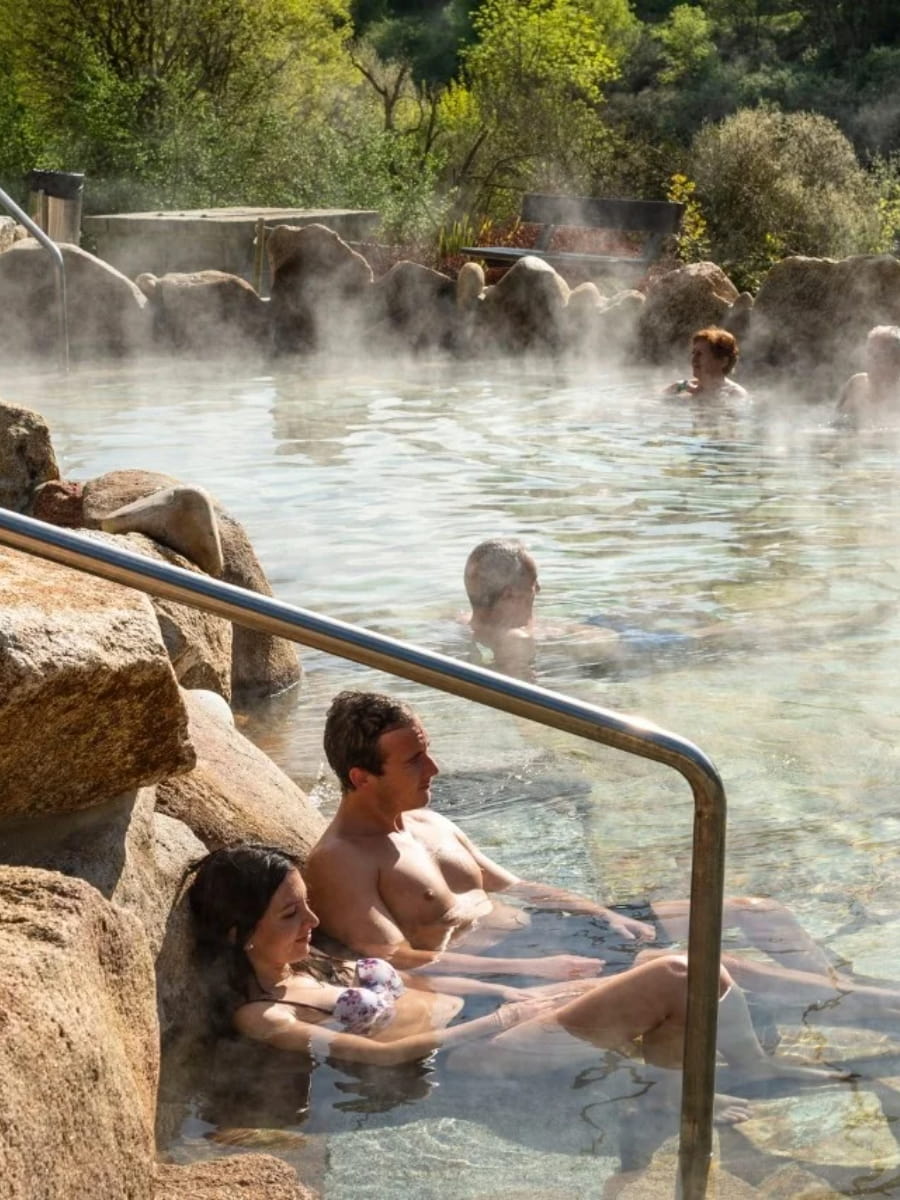
Free wellness. My children couldn’t believe that most of these beautiful thermal pools were completely free to use. The Outariz Thermal Station offers a more developed experience with changing rooms and multiple pools of different temperatures for just 6€, but we equally enjoyed the completely free natural pools at A Chavasqueira.
Local immersion. What made the experience special was chatting with Ourense residents who visit these springs as part of their daily routine. An elderly gentleman explained how he’s been soaking in these waters every morning for 40 years, crediting them for his mobility and health well into his 80s.
| Ourense Thermal Areas | Cost | Facilities | Water Temperature |
|---|---|---|---|
| A Chavasqueira | Free | Basic changing area, stone pools | 41-43°C (106-109°F) |
| Outariz Thermal Station | 6€ ($6.60) | Modern facilities, multiple pools | 37-41°C (98-106°F) |
| Burga do Muíño | Free | Natural river setting, no facilities | 65-67°C (149-152°F) |
| Japanese Pools | Free | Japanese-inspired design, foot baths | 38-40°C (100-104°F) |
| As Burgas | Free | Historic city center springs | 64-66°C (147-151°F) |
- Family bathing tips:
- Thermal route bus connects all springs (2€ day pass)
- Limit soaks to 15-20 minutes, especially for children
- Bring flip-flops, towels, and water bottles
- Alternate between hot springs and cool river spots in summer
Free Things to Do in Galicia
1. Walk the Old Town of Santiago de Compostela
Medieval maze. Wandering through Santiago’s stone streets early in the morning, before the day-trippers arrived, I felt like I’d stepped back several centuries. The Old Town’s layout has remained largely unchanged since medieval times, with narrow alleyways suddenly opening into magnificent squares like Praza do Obradoiro and Praza das Praterías.
Culinary discoveries. Following my nose down Rúa do Franco, I discovered tiny bars serving free tapas with each drink ordered. At Casa Manolo, my 2€ glass of Albariño wine came with a generous portion of octopus, while next door at Bar Orense, the house specialty was pimientos de Padrón – small green peppers that are occasionally spicy (“uns pican e outros non” as locals say).
Architectural treasures. Beyond the famous cathedral, I was charmed by lesser-known buildings like the 12th-century Colegiata de Santa María la Real de Sar with its dramatically leaning columns, and the Hostal dos Reis Católicos, originally built as a pilgrim hospital in 1499 and now one of Spain’s most beautiful paradors (state-run hotels).
| Old Town Walking Route | Highlights | Time Needed |
|---|---|---|
| Cathedral Loop | Main squares, cathedral exterior, Azabachería façade | 1-1.5 hours |
| Gastronomic Walk | Rúa do Franco, Mercado de Abastos, traditional shops | 2-3 hours |
| Literary Santiago | University, bookshops, Alameda Park | 1.5-2 hours |
| Hidden Churches | San Fiz, Santa María Salomé, San Martiño Pinario | 2 hours |
| Complete Old Town | All major sites, museum exteriors, viewpoints | 3-4 hours |
- Walking tour tips:
- Start at Praza do Obradoiro for orientation
- Visit Mercado de Abastos before 2pm (when vendors close)
- Look for scallop shell symbols embedded in cobblestones
- Carry a small umbrella (Santiago receives 300+ days of rain annually)
2. Explore the Roman Wall of Lugo
Ancient engineering. Walking atop Lugo’s complete Roman wall was like stepping back 2,000 years into the empire’s northernmost outpost. This UNESCO World Heritage site is the only complete Roman wall still standing in the world, stretching 2.1km around the old city with 85 original towers still intact.
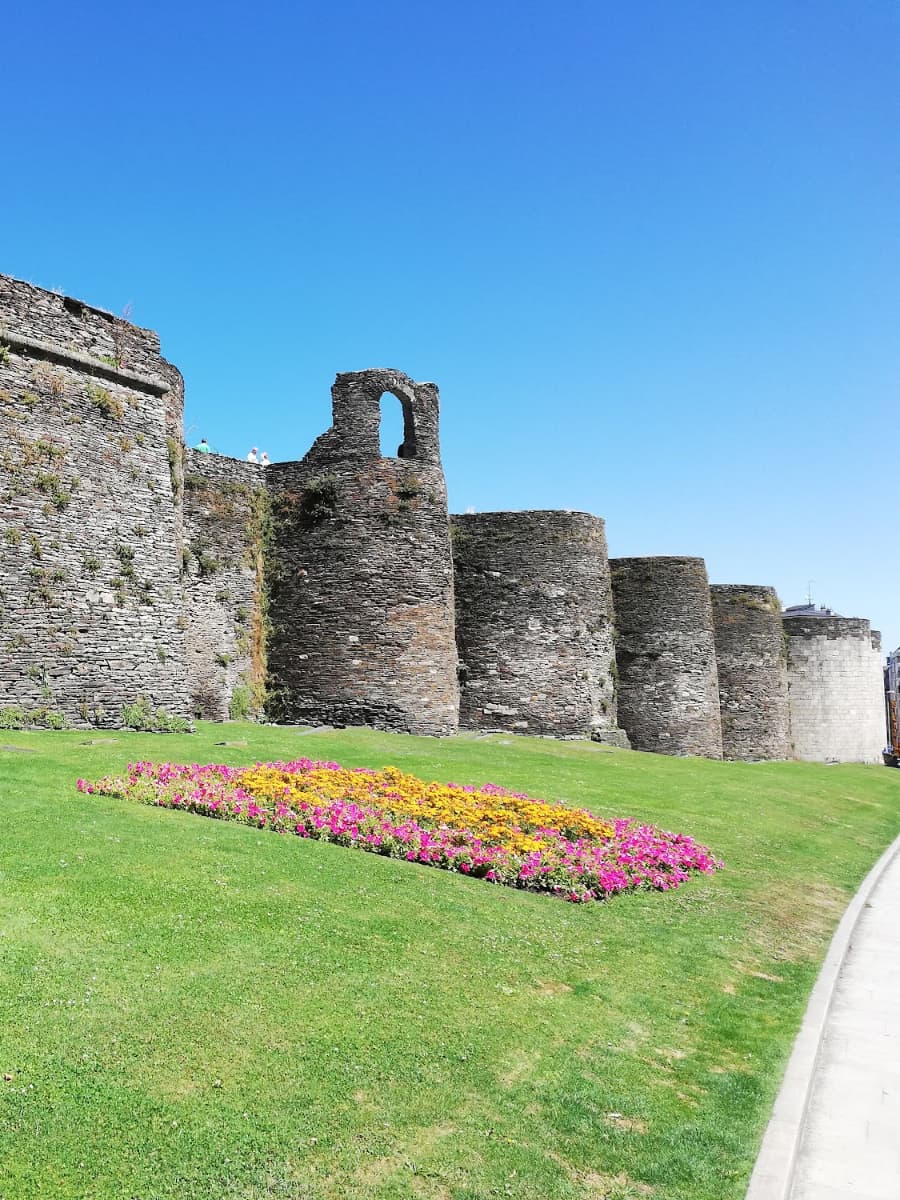
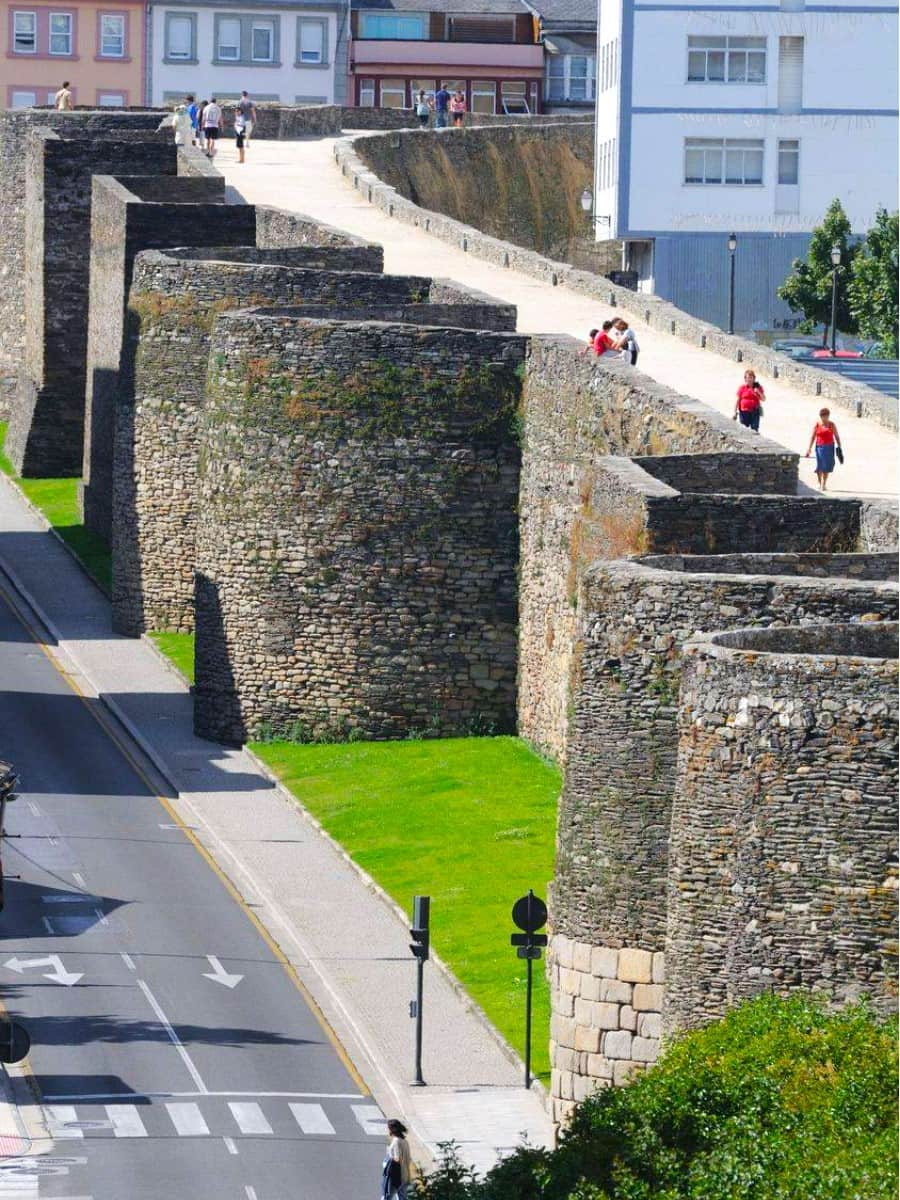

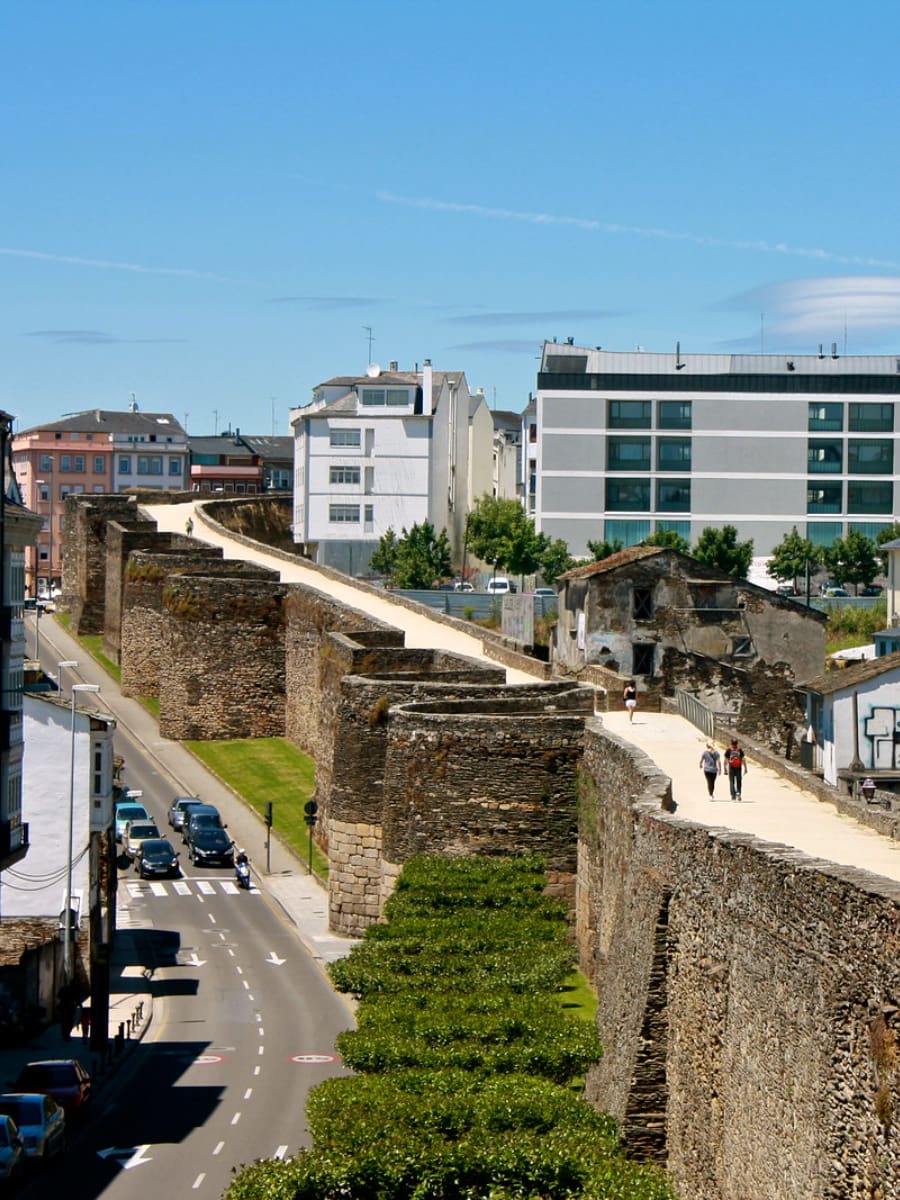
Elevated perspective. The wall’s wide walkway (4-7 meters across) offered me unique views into private gardens, hidden courtyards, and the daily life of Lugo residents. I particularly enjoyed watching elderly neighbors play cards in a small plaza and children practicing traditional Galician dance in a school courtyard – scenes I would have missed at street level.
Living monument. What impressed me most was how the wall remains integrated into daily life rather than being treated as a museum piece. Locals use it as a walking path, meeting spot, and running track. A friendly resident explained that the wall has witnessed 2,000 years of history yet remains the heart of the city’s identity.
| Roman Wall Access Points | Nearby Attractions | Special Features |
|---|---|---|
| Porta de Santiago | Cathedral, main square | Original Roman gate structure |
| Porta Miñá | River access, nature path | Best sunset views, water gate |
| Porta Nova | Archaeological center | Interactive exhibits about wall construction |
| Porta San Pedro | Shopping district, cafés | Widest section of walkway |
| Porta do Bispo | Episcopal Palace, gardens | Best preserved towers |
- Visitor recommendations:
- Complete circuit takes 1-1.5 hours at leisurely pace
- Free guided tours daily at 12:00 from tourist office
- Access ramps available at all main gates
- Visit during evening paseo (7-9pm) to mingle with locals
3. Enjoy Sunset at Mirador Olivia in Vigo
Panoramic perfection. Climbing to Mirador Olivia in Vigo’s Monte O Castro park rewarded me with what locals claim is the best urban sunset view in Galicia. The sweeping panorama encompasses the entire Vigo estuary, the Cíes Islands on the horizon, and the twinkling city lights beginning to illuminate the hillsides.
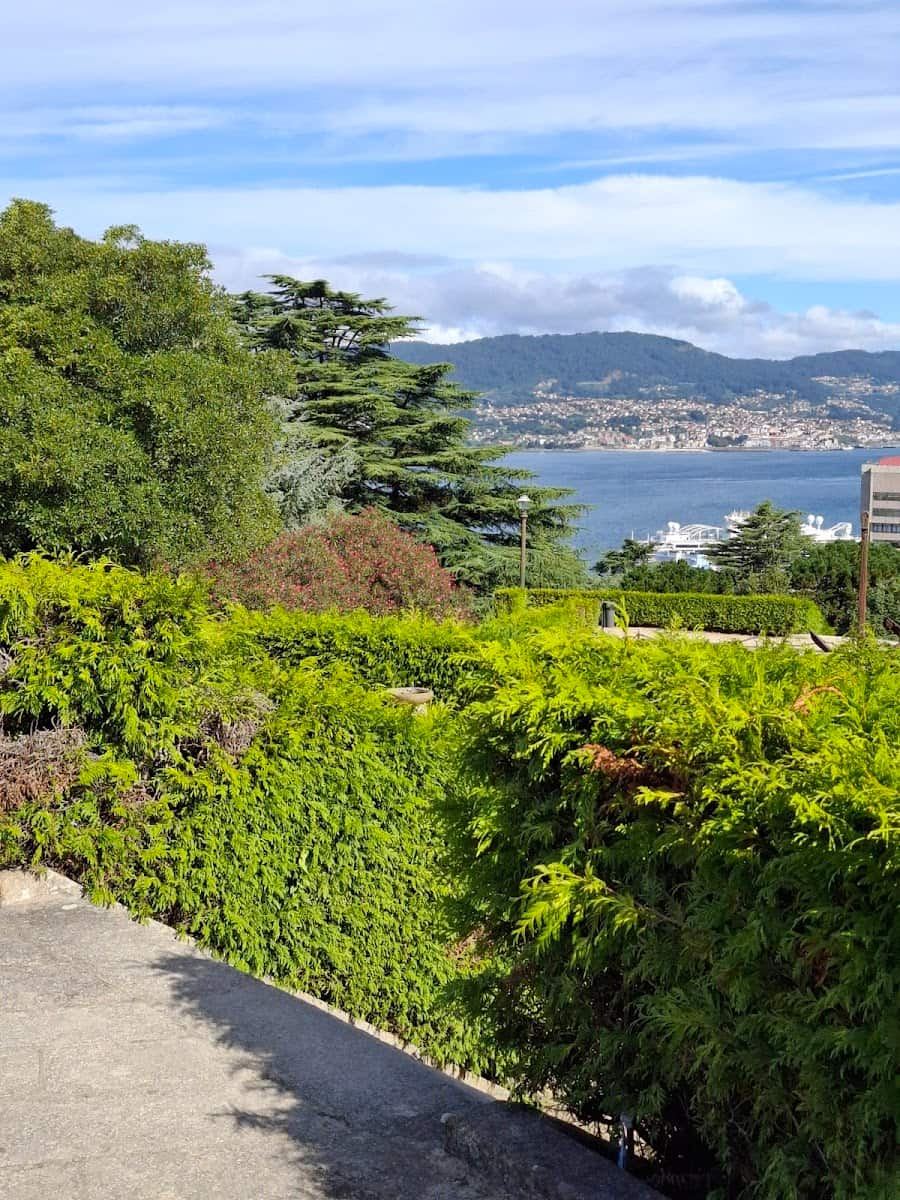
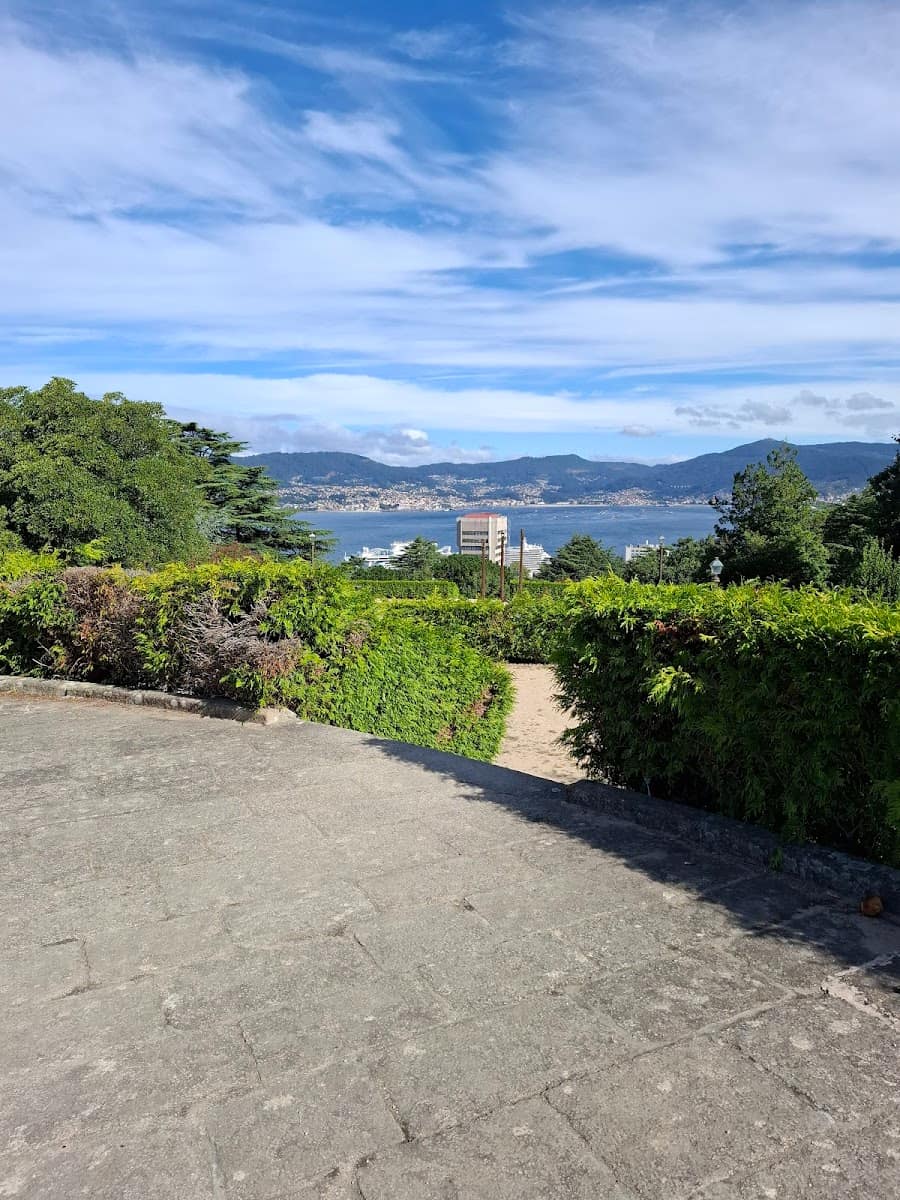


Secret spot. Despite its spectacular views, I found this viewpoint refreshingly uncrowded compared to more famous lookouts. A local student explained that while tourists flock to the castle ruins, this slightly hidden mirador remains primarily a spot for romantic Vigueses couples and photographers seeking the perfect shot.
Historical context. The viewing platform incorporates elements from the old city fortifications, with informative panels explaining how Vigo’s strategic harbor has shaped its history from Roman times through the Spanish Armada period to the present day. I was fascinated to learn that treasure ships still lie at the bottom of the bay.
| Best Times to Visit | Lighting Conditions | What You’ll See |
|---|---|---|
| 1 hour before sunset | Golden hour glow | Harbor activity, Cíes Islands clearly visible |
| Sunset (varies seasonally) | Dramatic sky colors | Sun setting behind islands, silhouettes |
| Blue hour (after sunset) | City lights activate | Illuminated bridges, harbor lights reflecting |
| Full moon nights | Moonlight on water | Romantic atmosphere, moon path on bay |
| Clear mornings | Crisp visibility | Fishing fleet returning, morning light |
- Photography tips:
- Bring a wide-angle lens to capture the entire bay
- Tripod useful for low-light shots after sunset
- Frame shots using the old stone walls as foreground
- Best compositions include both city and islands
4. Visit Plaza de Maria Pita
Majestic square. Standing in A Coruña’s Plaza de Maria Pita, I was immediately struck by its grand scale and elegant uniformity. The square is named after a local heroine who helped defend the city against Sir Francis Drake’s English forces in 1589 – her statue dominates the center, brandishing the spear she used against the invaders.

Architectural harmony. The plaza is surrounded by beautiful galleried buildings with traditional glassed-in balconies (galerías) that give A Coruña its nickname “The Crystal City.” I spent a pleasant hour at an outdoor café simply admiring the architectural details and watching local life unfold across the expansive square.
City heartbeat. Unlike tourist-oriented plazas in other cities, Maria Pita remains the authentic center of local life. I witnessed a small protest, a children’s dance performance, and elderly neighbors gathering for their daily chat – all within the same afternoon, showing how this space truly belongs to the people of A Coruña.
| Plaza Features | Description | Location |
|---|---|---|
| Maria Pita Statue | Bronze heroine with spear | Center of plaza |
| City Hall | Modernist building with clock tower | North side |
| Galleried Buildings | Uniform facades with glass balconies | Surrounding plaza |
| Outdoor Cafés | Traditional and modern options | East and west sides |
| Underground Parking | Convenient city center parking | Access from side streets |
- Local experiences:
- Try “café con churros” at Café Galicia (operating since 1932)
- Visit Tuesday or Thursday for small artisan market
- City Hall tours available weekday mornings (free)
- Summer concerts often held in evenings (check tourist office)
5. Hike to Castro de Santa Trega
Ancient hilltop. The hike to Castro de Santa Trega revealed one of the most impressive archaeological sites with breathtaking views across three countries. This Celtic settlement dates back to the 2nd century BC and contains over 100 circular stone houses, offering a fascinating glimpse into pre-Roman life.
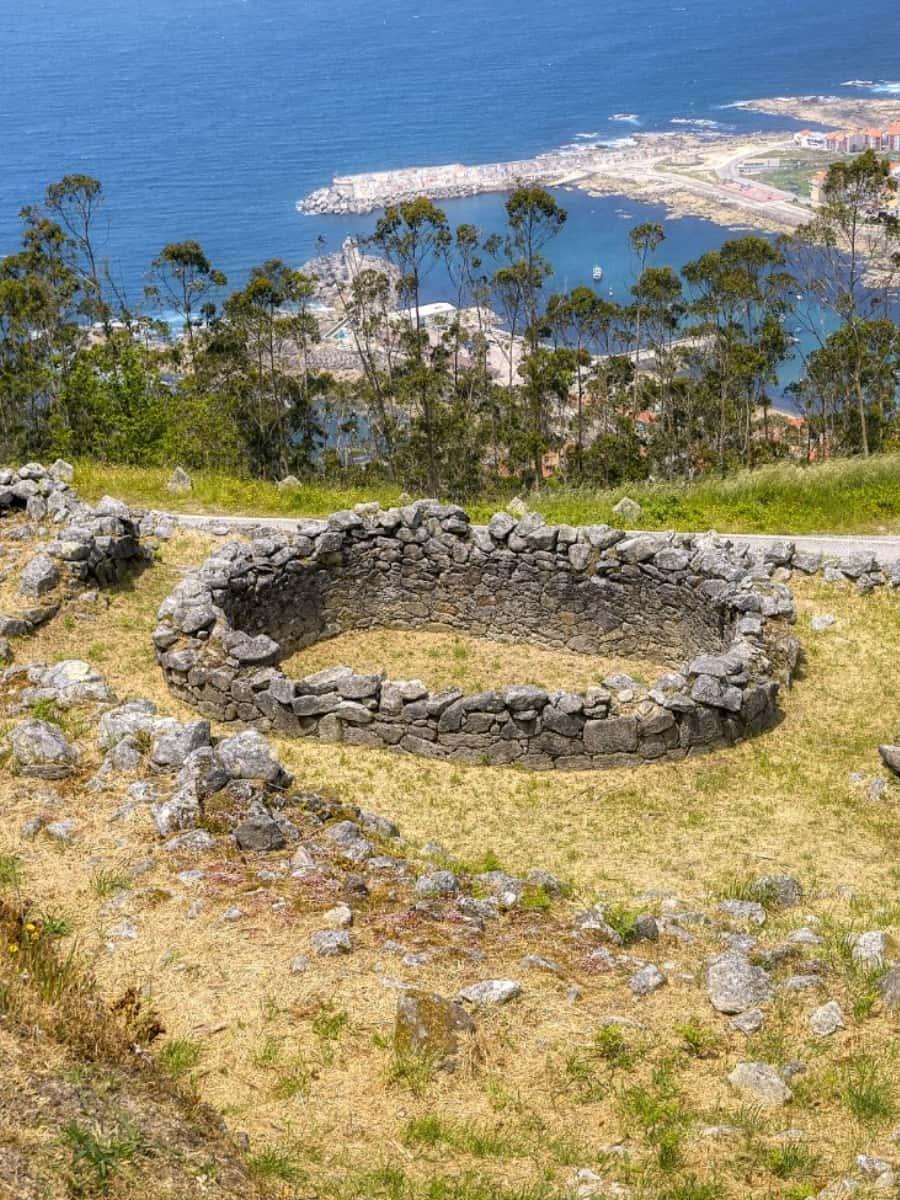


Border panorama. From the summit, I could see Spain, Portugal, and the vast Atlantic Ocean – a truly tri-national viewpoint. The Miño River estuary forms a natural border with Portugal, and watching fishing boats navigate these waters while standing among ancient ruins created a powerful connection between past and present.
Sacred mountain. My local guide explained that the mountain has been considered sacred since prehistoric times, with the Celtic settlement later overlaid by Christian traditions. The small hermitage near the summit hosts a famous romería (pilgrimage festival) each August that blends pagan and Christian elements in typical Galician fashion.
| Hiking Options | Distance | Difficulty | Starting Point |
|---|---|---|---|
| Road Access | 4km round trip | Easy | Santa Trega parking area |
| Traditional Path | 7km round trip | Moderate | A Guarda town center |
| Panoramic Trail | 9km round trip | Challenging | Porto beach |
| Complete Circuit | 12km loop | Difficult | A Guarda harbor |
| Sunset Hike | 4km round trip | Easy | Parking area (evening) |
6. Samil Beach
Urban paradise. Samil Beach surprised me with its accessibility and beauty just minutes from downtown Vigo. The 1.5km stretch of golden sand offers plenty of space even during summer weekends, with the added bonus of full facilities that many Spanish beaches lack.
Family-friendly shore. What makes Samil perfect for families is its gentle slope into the sea, creating safe swimming conditions for children. I watched parents relax while kids built elaborate sandcastles and played in the shallow water, protected from Atlantic swells by the Cíes Islands visible on the horizon.
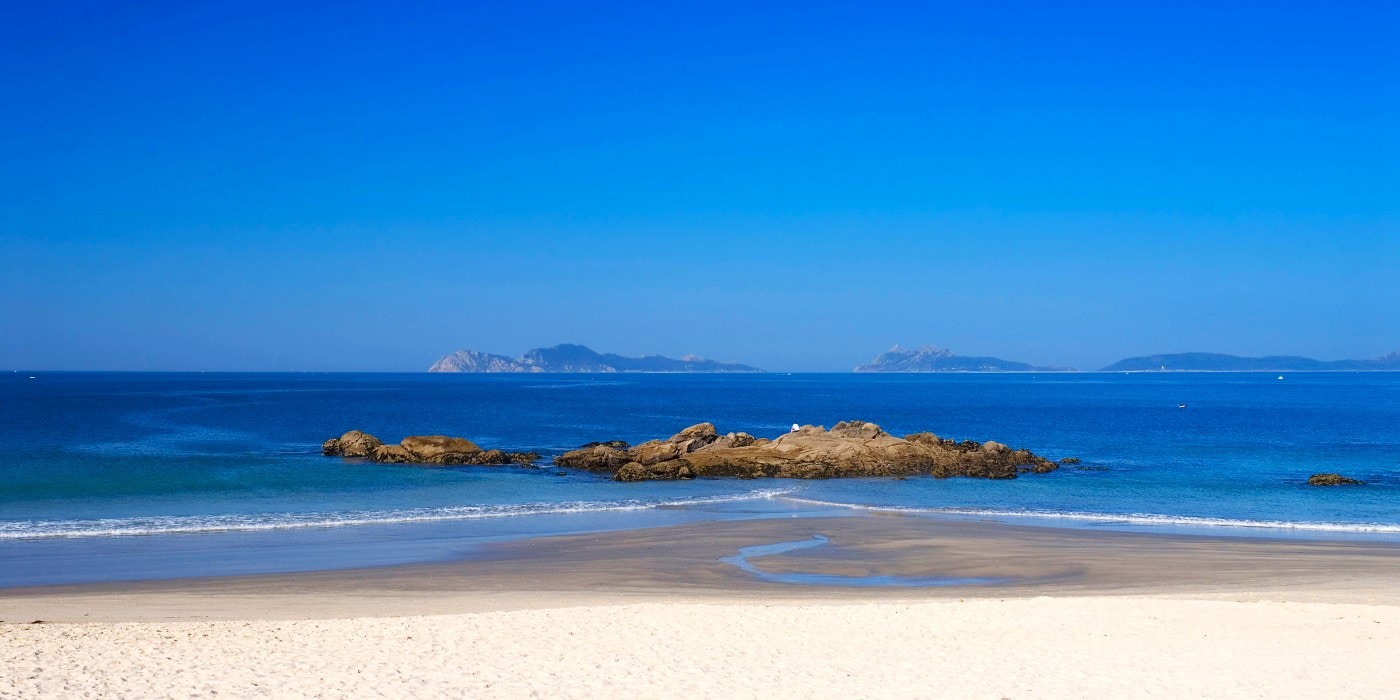
Promenade life. The well-designed promenade behind the beach became my favorite spot for evening walks, with locals of all ages enjoying ice cream, playing traditional Galician bagpipes, or simply sitting on benches watching the sunset. Unlike many beach areas that feel purely touristic, Samil maintains an authentic local atmosphere.
| Beach Facilities | Location | Cost |
|---|---|---|
| Public Showers | Every 200m along beach | Free |
| Changing Cabins | Near central access points | Free |
| Beach Volleyball | Northern section | Free |
| Children’s Playground | Behind central beach | Free |
| Beach Bars (chiringuitos) | Throughout beach | Varies (coffee ~1.50€, beer ~2.50€) |
- Local tips:
- Morning offers calmest water conditions
- Northern end tends to be quieter
- Bus #10 from Vigo center runs every 15-20 minutes
- Nearby restaurants are better value than beachfront options
7. Praia das Catedrais (Cathedrals Beach)
Natural architecture. Walking beneath the massive stone arches of Praia das Catedrais at low tide was like entering a natural cathedral carved by the Atlantic Ocean. These 30-meter high rock formations create corridors, chambers, and caves that are completely submerged during high tide – making timing essential for any visit.
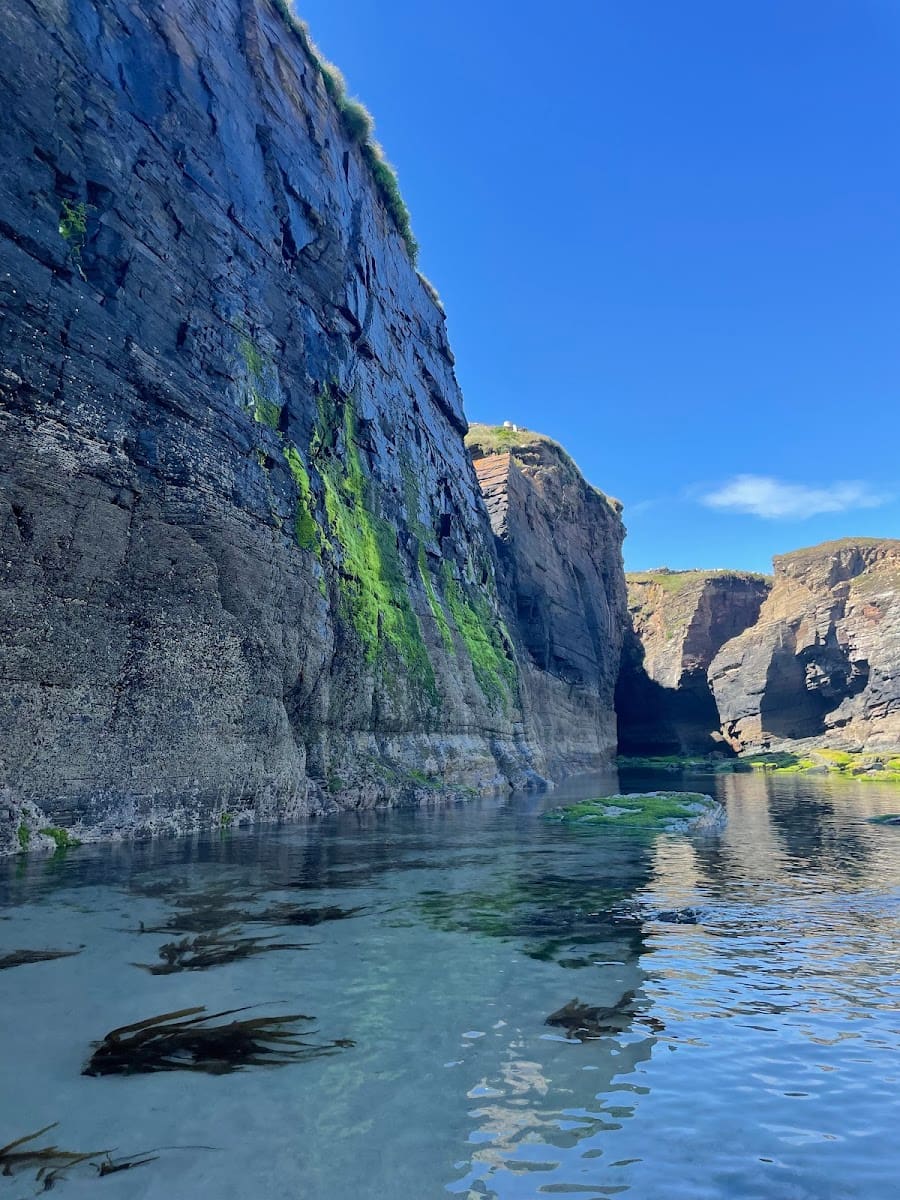
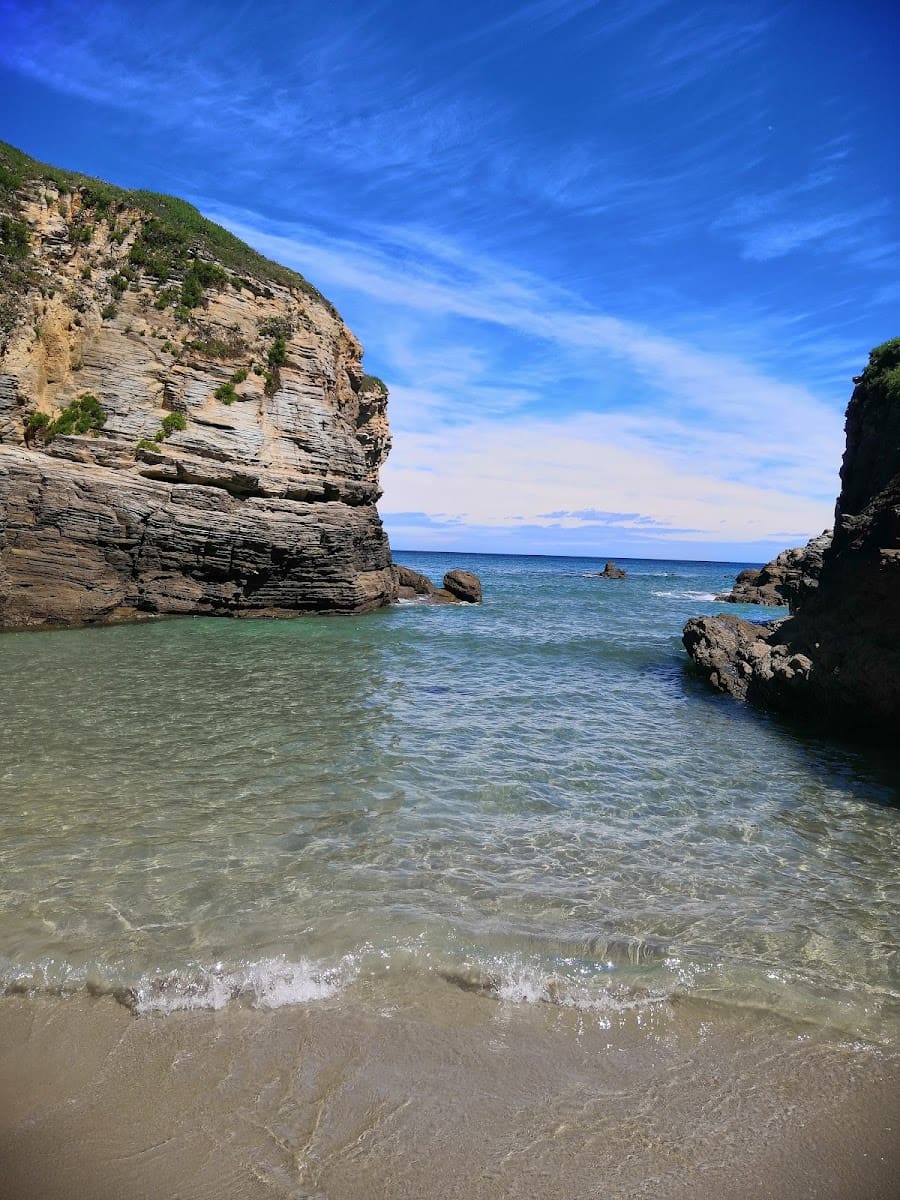
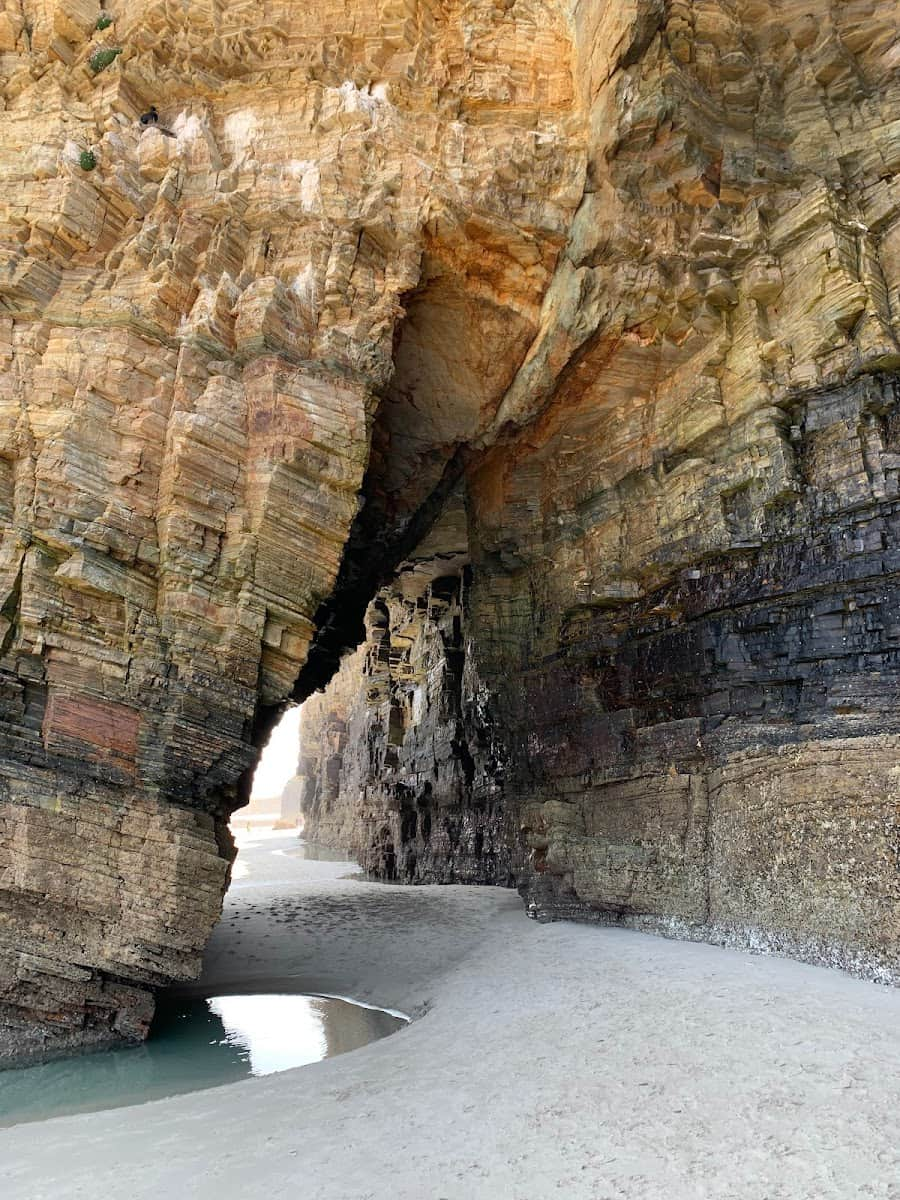
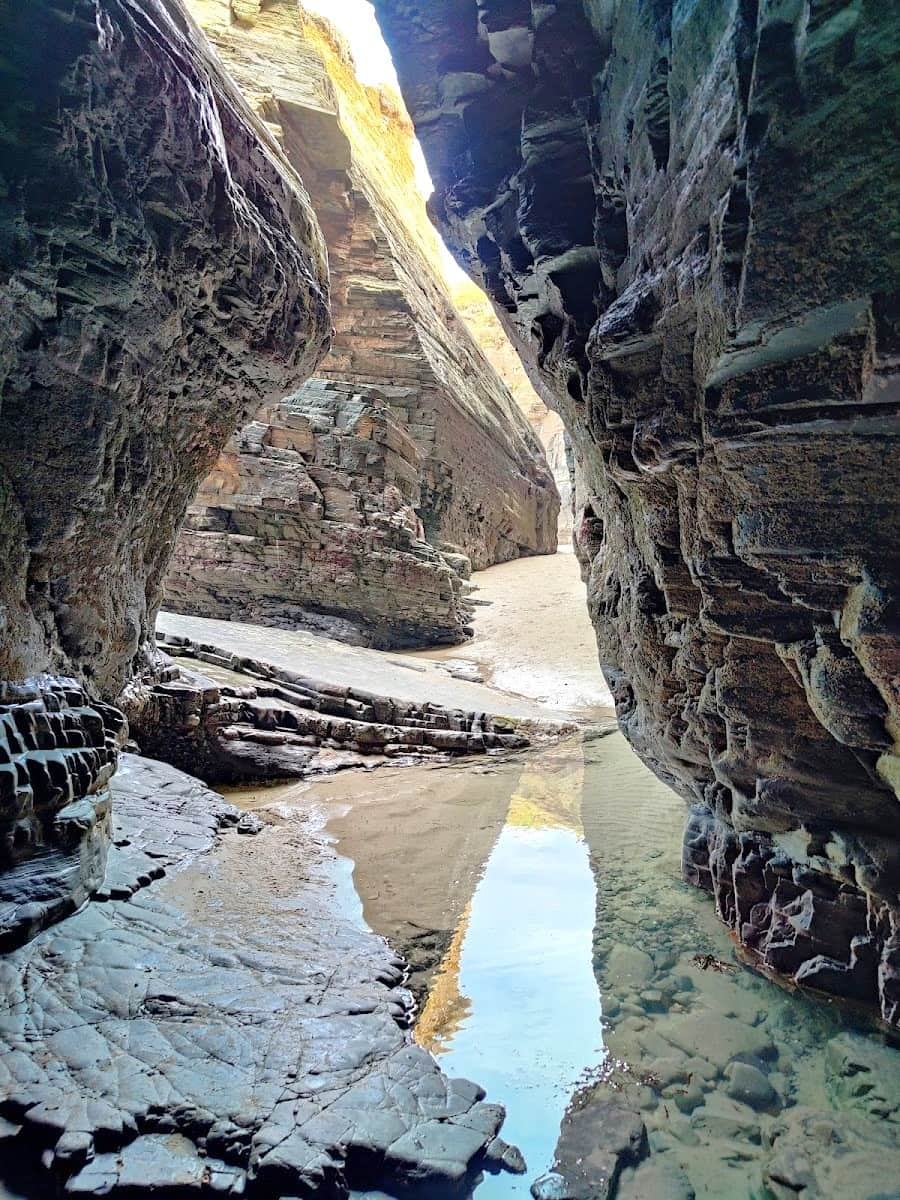
Tidal planning. I carefully checked the tide tables before making the journey to this beach near Ribadeo. Arriving two hours before the lowest point of low tide gave me maximum time to explore the caves and arches before the returning sea reclaimed them. A local guide pointed out hidden features I would have missed, including fossil imprints in the cliff walls.
Access management. Due to its popularity and environmental sensitivity, I had to reserve a free permit online before visiting (Easter to September). This system has successfully protected the beach from overcrowding while ensuring everyone gets to appreciate its beauty – a model I wish more popular natural sites would follow.
| Visiting Information | Details | Notes |
|---|---|---|
| Permit Requirement | Easter-September | Free but mandatory reservation |
| Best Viewing Times | 2 hours before/after low tide | Check tide tables online |
| Parking | 5€ daily fee | Free in off-season |
| Facilities | Restrooms, small café | Limited services in winter |
| Accessibility | Wooden stairs to beach | Not suitable for mobility issues |
- Photography recommendations:
- Early morning offers best light and fewer people
- Wide-angle lens essential for arch shots
- Include human figure for scale in photos
- Polarizing filter helps reduce glare from wet sand
Seasonal Activities in Galicia
Christmas in Santiago de Compostela
Pilgrim Christmas. Experiencing Christmas in Santiago de Compostela was magical – the medieval stone streets illuminated by thousands of lights while the cathedral’s baroque façade glowed against the winter sky. Unlike commercial Christmas markets elsewhere in Europe, Santiago’s celebrations maintain a spiritual connection to the city’s pilgrim heritage.
Festive traditions. The Plaza del Obradoiro transforms into a Christmas village from December 1 to January 6, with a life-sized Belén (nativity scene) featuring over 200 figures. I was charmed by the uniquely Galician touches – tiny figurines of pilgrims with walking sticks and scallop shells mixed among the traditional biblical characters.

Culinary celebrations. Christmas Eve dinner at a local restaurant introduced me to traditional Galician holiday foods – seafood soup followed by roast capón (capon) with chestnuts. The meal concluded with turrón (nougat) and a glass of queimada, the region’s traditional flaming punch accompanied by an incantation to ward off evil spirits.
| Christmas Events | Dates | Location |
|---|---|---|
| Christmas Lights Inauguration | December 1 | Throughout Old Town |
| Cathedral Christmas Concert | December 15-23 | Santiago Cathedral |
| Traditional Market | December 10-24 | Plaza de Cervantes |
| New Year’s Eve Celebration | December 31 | Plaza del Obradoiro |
| Three Kings Parade | January 5 | City center streets |
Summer Festivals and Events
Seafood celebrations. Galicia’s summer festival calendar revolves around food, with the Festa do Pulpo (Octopus Festival) in O Carballiño being my favorite. Held the second Sunday of August, this gastronomic celebration serves over 25,000 portions of pulpo á feira – octopus boiled in copper pots, snipped with scissors, and seasoned with olive oil, salt, and paprika.
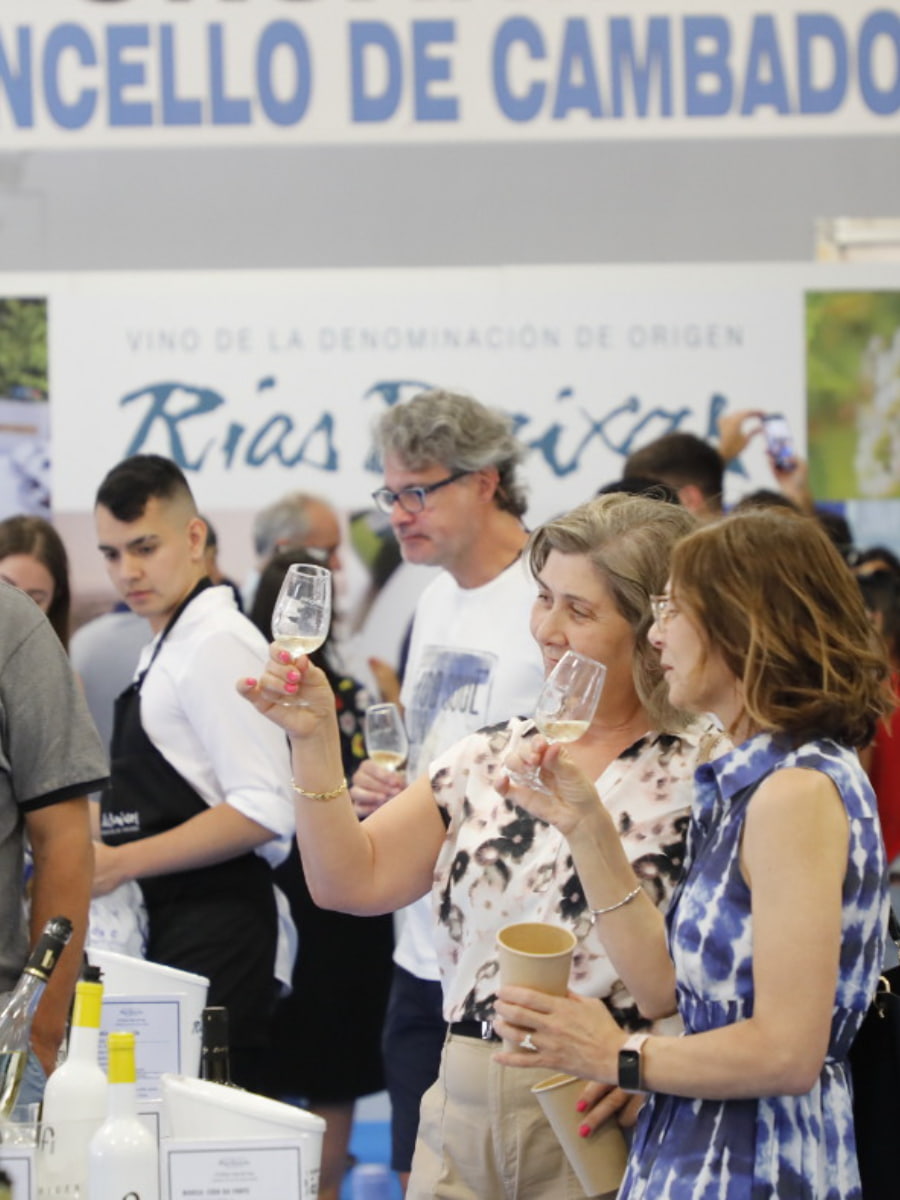
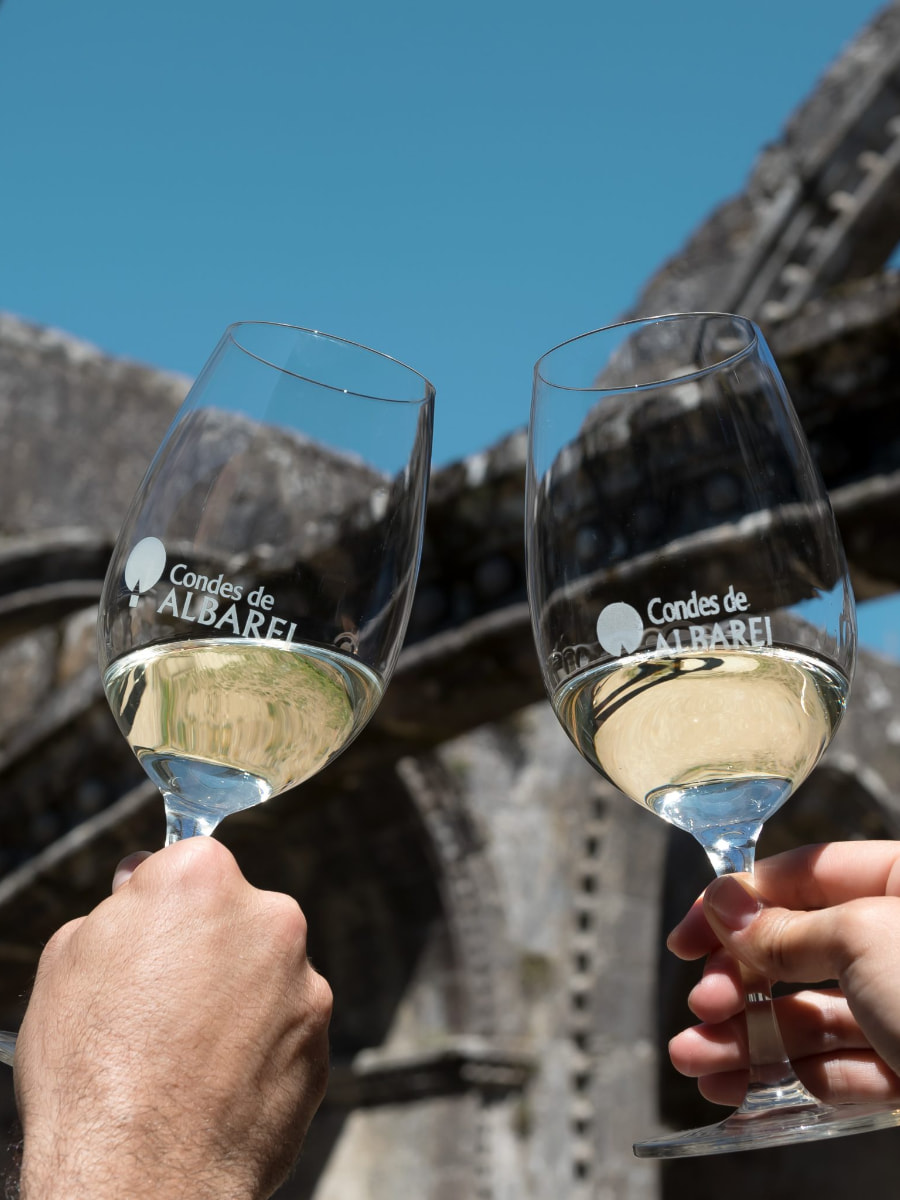
Wine immersion. The Albariño Wine Festival in Cambados (first week of August) transformed my understanding of Spanish white wines. For five days, the town’s plazas fill with tasting tents where you can sample over 50 different Albariños for just 12€ (including a souvenir glass). Local chefs demonstrate perfect seafood pairings while traditional Galician bands provide the soundtrack.
Celtic connections. The Festival Intercéltico de Moaña (late July) celebrates Galicia’s Celtic heritage with music that transported me to Ireland and Scotland while remaining distinctly Spanish. Watching bagpipers in traditional dress perform against the backdrop of the Vigo estuary at sunset was an unforgettable cultural fusion.
| Major Summer Festivals | Dates | Location | Focus |
|---|---|---|---|
| Festa do Pulpo | Second Sunday of August | O Carballiño | Octopus gastronomy |
| Albariño Wine Festival | First week of August | Cambados | Wine tasting, seafood |
| Festival Intercéltico | Late July | Moaña | Celtic music, dance |
| Festa da Langosta | First weekend of July | A Guarda | Lobster dishes |
| Romería Vikinga | First Sunday of August | Catoira | Viking invasion reenactment |
- Festival planning tips:
- Book accommodation months in advance for major festivals
- Many events are free, but special tastings may require tickets
- Bring cash for food/drink stands (not all accept cards)
- Local buses often run extended hours during festivals
Spring Blooms in Galician Parks
Camellia kingdom. Spring in Galicia introduced me to the region’s love affair with camellias, which thrive in the Atlantic climate. At Pazo de Oca (known as the “Galician Versailles”), I wandered through gardens featuring over 500 camellia varieties, some trees over 200 years old with trunks thicker than my waist and blossoms in every shade from pure white to deep crimson.
Woodland carpets. In Fragas do Eume Natural Park, April brings an explosion of wildflowers that carpet the ancient forest floor. My guide pointed out rare orchid species and explained how the park’s microclimate creates perfect conditions for plants found nowhere else in Spain. The contrast of delicate flowers against massive old-growth trees was simply magical.
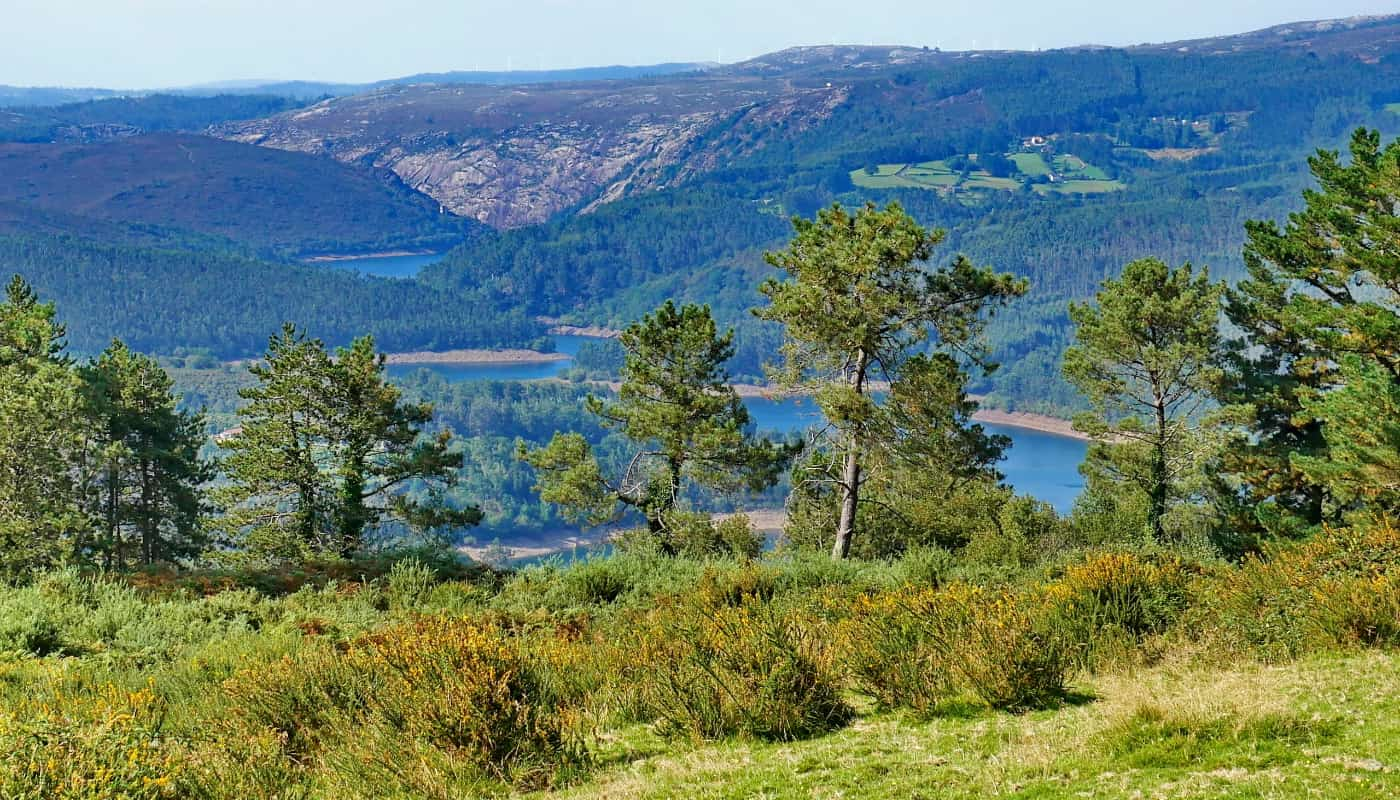
Urban oases. Santiago’s Alameda Park surprised me with its formal gardens featuring spectacular magnolias and a unique collection of ancient olive trees. Local university students told me this park has been the city’s social heart for centuries, with specific paths traditionally used for different purposes – including one famously reserved for young women seeking husbands!
| Spring Garden Highlights | Best Viewing Time | Special Features |
|---|---|---|
| Pazo de Oca Gardens | February-April | Historic camellias, water features |
| Fragas do Eume | April-May | Wild orchids, ancient forest |
| Alameda Park, Santiago | March-May | Magnolias, century-old trees |
| Castle of Soutomaior | March-April | International Camellia Garden of Excellence |
| Pazo de Mariñán | April-June | Formal gardens |
- Garden tips:
- Many pazos (manor houses) only open on weekends
- Photography permits sometimes required for professional equipment
- Garden tours often available in English with advance booking
- Spring weather can change quickly – dress in layers
Autumn Foliage Walks in Ribeira Sacra
Canyon colors. Hiking through Ribeira Sacra in late October revealed a spectacular palette of autumn colors contrasting with the deep blue waters of the Sil River canyon. The terraced vineyards that climb the steep slopes turn golden and russet, creating a patchwork effect that had me stopping every few minutes to take photos.
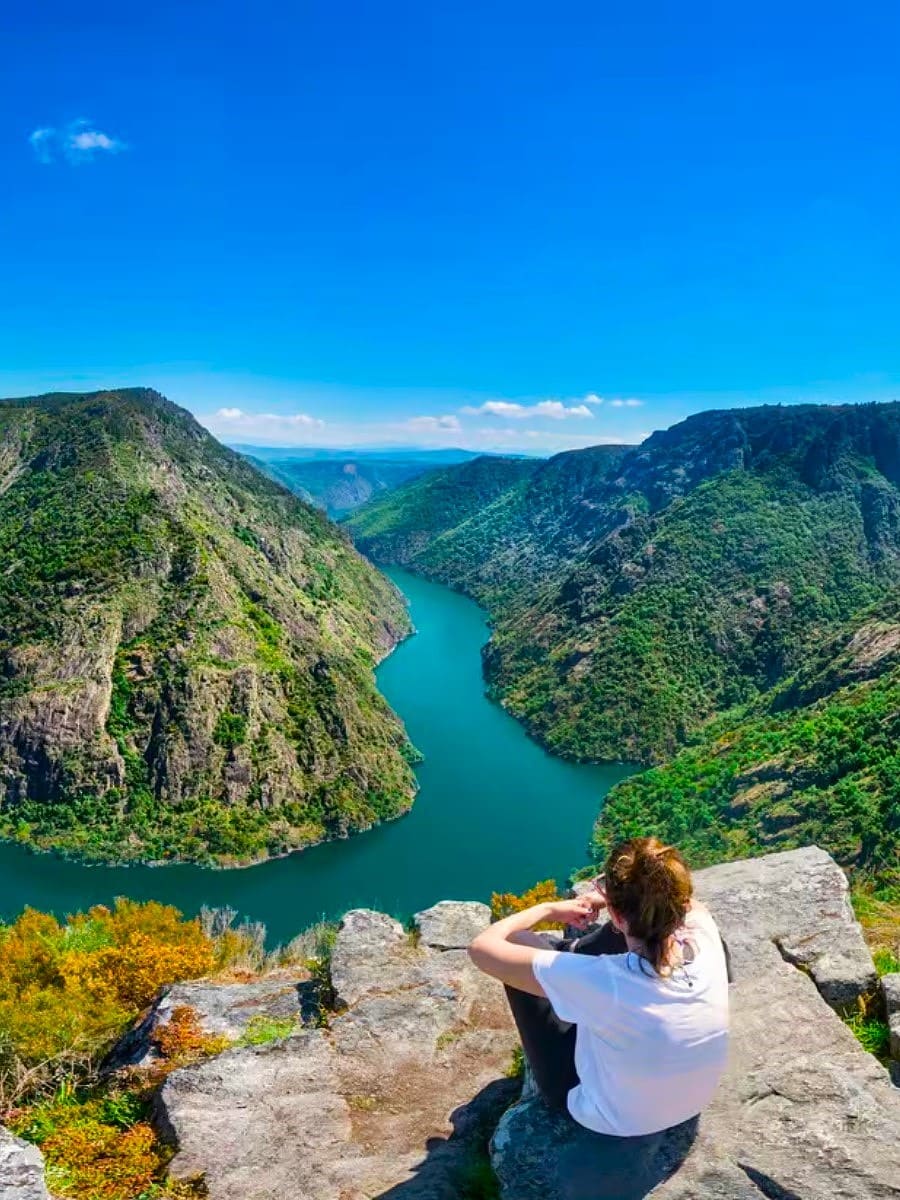

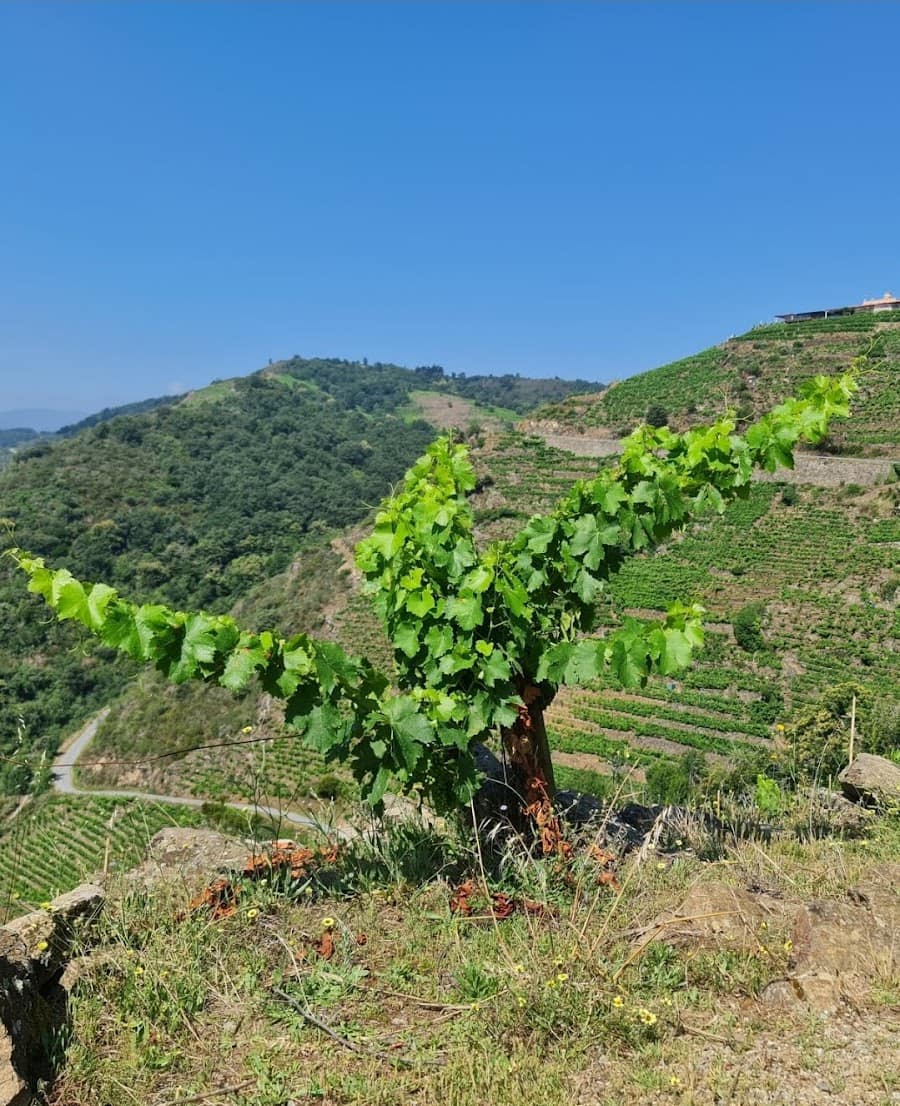
Trails. The path connecting the 12th-century monasteries of Santo Estevo and Santa Cristina offered my favorite autumn walk. Ancient chestnut trees formed a canopy of amber and gold, with occasional clearings providing dramatic views of the river far below. Fallen chestnuts crunched underfoot, and I even collected a pocketful to roast later.
Wine harvest. Timing my visit during the late harvest season allowed me to witness the heroic viticulture that makes Ribeira Sacra wines so special. Watching workers navigate 60-degree slopes with baskets of hand-picked grapes gave me new appreciation for the bottles I’d been enjoying throughout my trip.
| Autumn Walking Routes | Distance | Difficulty | Highlights |
|---|---|---|---|
| Monastery Connection | 7km one-way | Moderate | Santo Estevo to Santa Cristina |
| Balcones de Madrid | 5km loop | Easy | Spectacular canyon viewpoints |
| Doade Vineyards | 6km | Moderate | Working vineyards, wine tasting |
| Los Cañones del Sil | 8km | Challenging | Dramatic gorge views, waterfalls |
| Parada de Sil Circuit | 4km | Easy | Village to viewpoint loop |
- Autumn recommendations:
- Mid-October to early November offers best colors
- Morning mist creates magical atmosphere in river valleys
- Combine walks with winery visits (reservation recommended)
- Temperatures can drop quickly – bring layers
Day Trips from Galicia
1. Cíes Islands (Atlantic Islands National Park)
Island paradise. The Cíes Islands are often called the “Galician Seychelles” for good reason – their pristine white sand beaches and turquoise waters feel more Caribbean than Atlantic. These protected islands limit daily visitors to 2,200 people, preserving their natural beauty and tranquility.
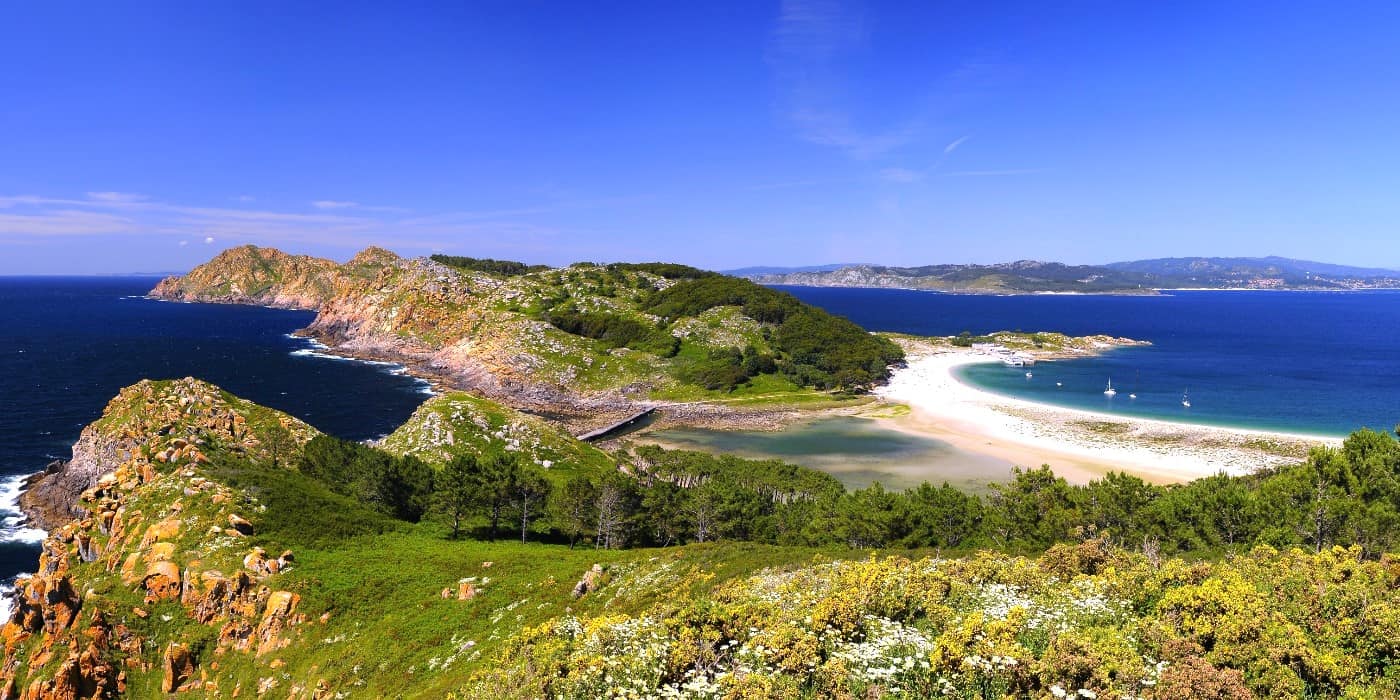
Planning essentials. Ferries depart regularly from Vigo, Cangas, and Baiona during the season (Easter through September, with weekend-only service in off-season). The journey takes about 45-50 minutes and costs approximately €20 return in peak season (€15 in off-peak). I recommend booking your permits well in advance through the official reservation system, especially during summer months.
Natural wonders. Once on the island, you can hike to the lighthouse for spectacular panoramic views, swim in the crystal-clear waters of Rodas Beach (once named the best beach in the world), or explore the island’s trails where you might spot some of the 200+ bird species that call this nature reserve home.
| Ferry Information | Details | Notes |
|---|---|---|
| Departure Points | Vigo, Cangas, Baiona | Vigo has most frequent service |
| Journey Time | 45-60 minutes | Depending on departure point |
| Cost | €15-20 return | Seasonal pricing |
| Booking | Reservation required | www.reservasillasatlanticas.es |
⭐ Best Activities
- Full Scientific Tourism in the Cíes Islands – Explore the magnificent Cíes Islands, often called the “Galician Caribbean” and one of the best places to see pristine nature in Spain. These islands off the coast of Galicia offer some of the most beautiful beaches and are also worth visiting for their ecological significance.
2. Ons Islands
Authentic escape. Less visited than their famous neighbors, the Ons Islands offer a more authentic Galician island experience. The small year-round community of about 80 residents maintains traditional fishing practices and island culture that visitors can glimpse.
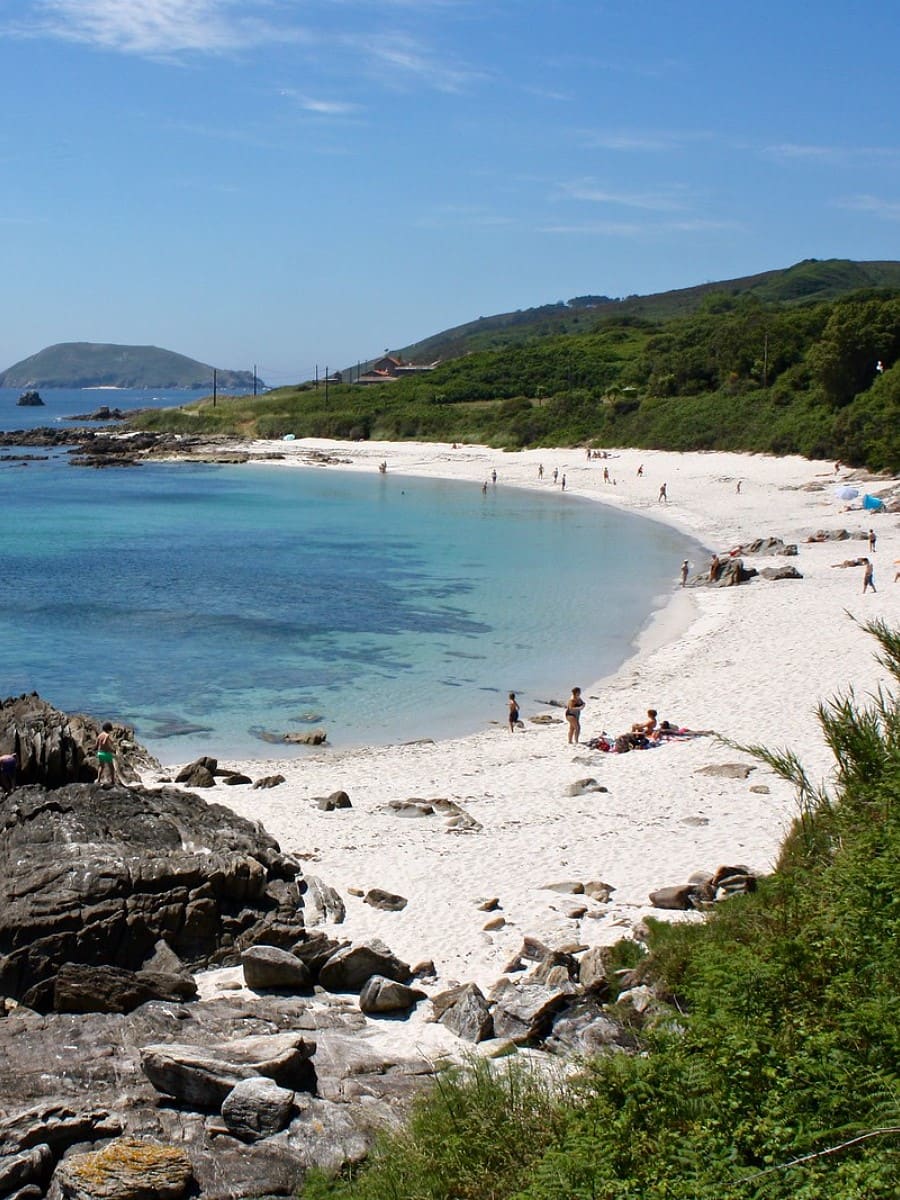
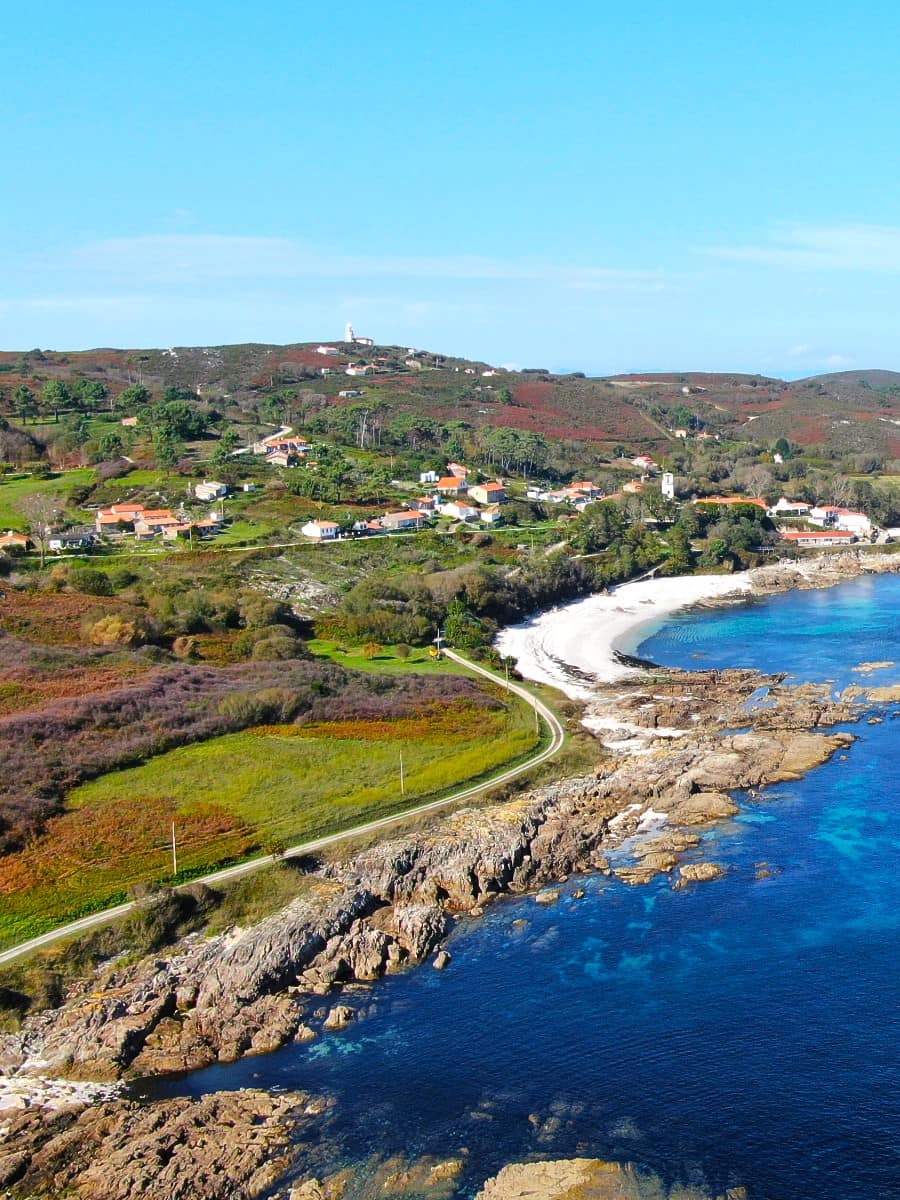
Island exploration. After a 35-minute ferry ride from Portonovo, you’ll have several hours to discover secluded beaches, hike to the lighthouse, or visit the small ethnographic museum in the main village. The Buraco do Inferno (Hell’s Hole) is a natural blowhole that creates impressive water displays when waves crash against the cliffs.
Protected status. Like the Cíes, Ons is part of the Atlantic Islands National Park and requires an advance permit. The local tour company usually handles this authorization process when you book your ferry ticket, but be sure to bring your permit (printed or digital) on the day of your visit.
3. Combarro Fishing Village
Living museum. This perfectly preserved fishing village showcases traditional Galician maritime architecture with its collection of over 30 waterfront hórreos (stone granaries on pillars) – the highest concentration in Galicia. The narrow granite streets and traditional fishermen’s houses create a time-capsule effect.

Coastal charm. A guided tour through Combarro’s historic center takes about 1.5 hours, revealing the village’s unique architectural elements and maritime heritage. Afterward, enjoy some free time to explore the shops and cafés along the waterfront.
Boat experience. Many day trips to Combarro include a 1-hour boat cruise along the Ría de Pontevedra, where you can see traditional mussel rafts while sampling local Albariño wine and freshly harvested mussels – a perfect way to experience the region’s seafood culture.
4. Cambados and Albariño Wine Tastings
Wine capital. Known as the “Capital of Albariño,” Cambados is the heart of the Rías Baixas wine region. This charming town combines stunning architecture, rich cultural heritage, and exceptional wine experiences centered around the crisp, aromatic Albariño white wines.
Winery experiences. The town is surrounded by bodegas (wineries) that offer guided tours of their vineyards and cellars. Many provide tastings where you can sample different Albariño wines while learning about their unique characteristics. Some tours include gourmet meals paired with local wines for a complete sensory experience.
Cultural immersion. Beyond wine, Cambados offers beautiful historic streets, the elegant Plaza de Fefiñáns, and lively markets where you can explore local seafood and artisanal products. If you visit during the first week of August, you might catch the famous Albariño Wine Festival, where the town transforms into an open-air celebration of wine and Galician culture.
⭐ Best Activities
- Rías Baixas: Arousa Island, Combarro and Mussel Boat – Discover the charming fishing villages and beautiful estuaries of the Rías Baixas in the south of Galicia. Visit Combarro with its unique historic center and enjoy a mussel boat experience in one of Spain’s most picturesque regions.
5. Tui and Valença (cross-border with Portugal)
Twin fortresses. These historic border towns face each other across the Miño River, offering a fascinating two-country experience in one day trip. Tui’s imposing cathedral-fortress dominates the Spanish side, while Valença’s impressive double ring of star-shaped defensive walls encircles the Portuguese town.
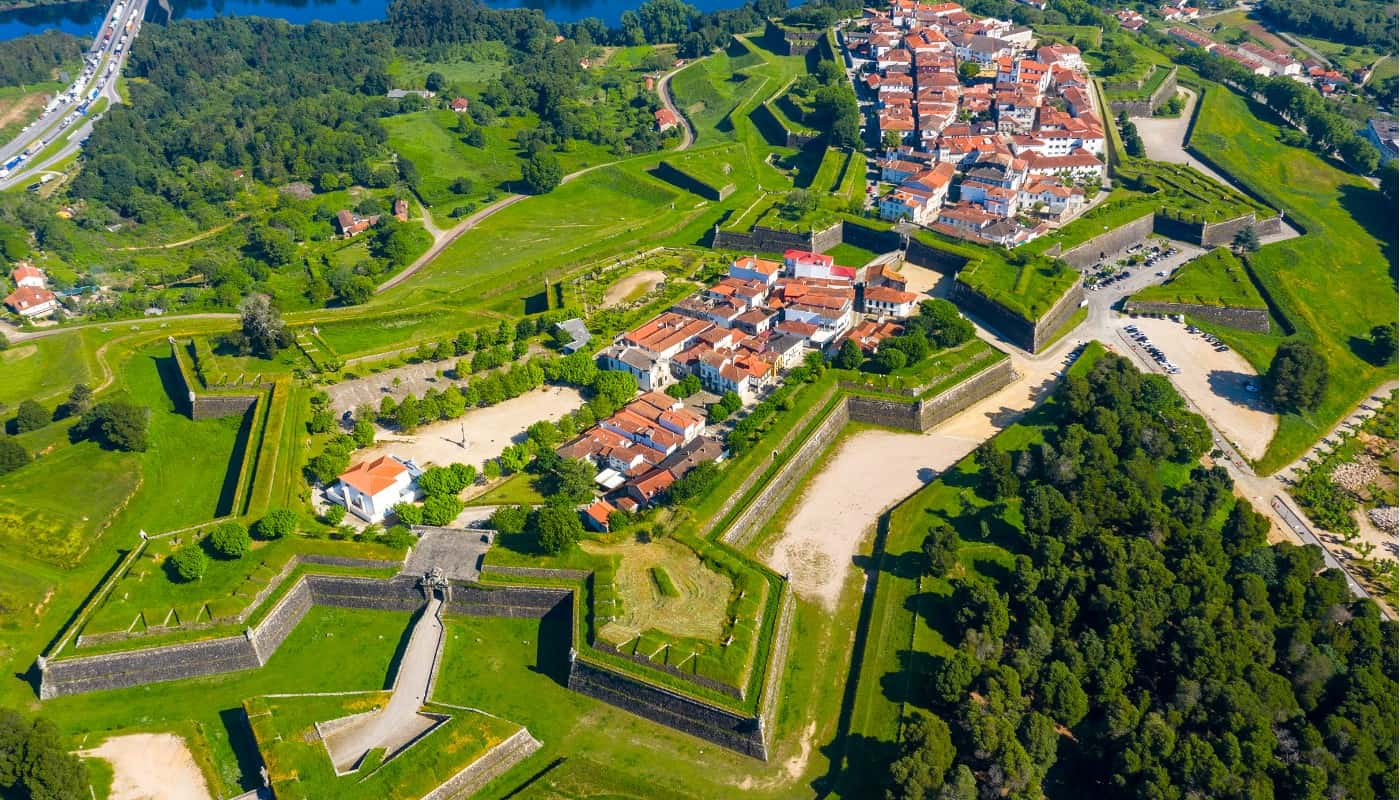
Border crossing. Walking across the international bridge between the two towns is a highlight – no border controls exist (both are in the Schengen Area), but remember that Portugal is one hour earlier than Spain. The contrast between Spanish and Portuguese culture, cuisine, and architecture becomes immediately apparent as you cross.
Shopping and sightseeing. Valença is famous for its textiles, ceramics, and affordable shopping, while Tui offers impressive religious architecture and traditional Galician cuisine. For panoramic views of both towns and the river valley, visit Monte Aloia Natural Park in the hills above Tui.
- Day trip tips:
- Start early to maximize your time
- Check ferry schedules and book tickets in advance for island visits
- Bring appropriate footwear for walking on varied terrain
- Pack swimwear during summer months for island beaches
- Carry some cash for small purchases in villages
⭐ Best Activities
- Private Transfer from Porto to Santiago de Compostela with Stops – Travel from Portugal to Galicia in comfort with this private transfer that includes sightseeing stops along the way. A convenient option if you plan to visit both regions and want to see many attractions without the hassle of public transportation.
FAQ
What are the best places to visit in Galicia?
The best places to visit in Galicia include Santiago de Compostela with its UNESCO-listed cathedral, A Coruña with the Tower of Hercules, and the pristine Cíes Islands with their Caribbean-like beaches. Other must-see destinations are the Roman walls of Lugo, the picturesque fishing village of Combarro, and the dramatic Costa da Morte with Cape Finisterre.
How many days for a complete Galicia itinerary?
A complete Galicia itinerary requires at least 6 days to explore the southern areas including Santiago de Compostela, Pontevedra, and the Rías Baixas wine region. For a more comprehensive experience including the Costa da Morte and Ribeira Sacra, consider extending your trip to 10 days to fully appreciate these beautiful areas in Galicia.
Is Cape Finisterre worth visiting as “end of the world”?
Cape Finisterre is absolutely worth visiting as it was considered by Romans to be the furthest border of the earth, one of the westernmost points of Spain. The lighthouse located on Mount Facho offers unique sunset views where the sun melts into the ocean, creating a spectacular display that helps explain why this rugged coastline became known as “Costa da Morte” (Coast of Death).
Which beautiful beaches in Galicia are most popular?
Rodas Beach on the Cíes Islands is often named the most beautiful beach in Galicia, offering magical white strands and Caribbean-like waters in summer. Playa de las Catedrales (Praia das Catedrais) near Ribadeo is the most famous beach, renowned for its spectacular 30-meter high stone arches and caves that resemble a cathedral, accessible only at low tide.
Should I rent a car to visit places in Galicia?
Renting a car is highly recommended to explore the many beautiful places in Galicia, especially if you want to visit off-the-beaten-path locations along the Costa da Morte or Ribeira Sacra. While major cities like Santiago de Compostela and A Coruña are connected by train (40-minute journey), a car provides the freedom to discover hidden coastal villages, secluded beaches, and the spectacular wine country at your own pace.
When is the best time to visit Galicia?
The best time to visit Galicia is during the high season from mid-May through mid-September when there’s less characteristic rain and you can fully enjoy the spectacular coastline and mountains. For a more authentic experience with fewer tourists and lower prices, consider traveling between mid-winter and early spring when you can participate in local festivals like Entroido (Galician carnival) and watch the landscape gradually come back to life.
What are the most beautiful cities in Galicia worth seeing?
Santiago de Compostela is the most beautiful city in Galicia with its magnificent cathedral and well-preserved medieval old town filled with Romanesque, Gothic, and Baroque architecture. A Coruña offers urban beaches, the Crystal City with its distinctive glassed-in balconies, and the Tower of Hercules, while Lugo impresses visitors with its intact Roman walls that completely encircle the city and its exceptional cuisine featuring generous free tapas.
Is Cathedrals Beach accessible year-round for visitors?
Cathedrals Beach (Praia das Catedrais) requires careful planning as it’s only accessible during low tide when you can walk beneath the massive stone arches that give it its name. From Easter to September, you must reserve a free permit online in advance to protect this environmentally sensitive site from overcrowding, and the best viewing times are approximately two hours before and after low tide.
Which areas in Galicia offer the most picturesque views?
The Ribeira Sacra region offers some of the most picturesque views in Galicia with its dramatic river canyons, terraced vineyards, and ancient monasteries nestled among autumn foliage. The Costa da Morte provides spectacular coastal scenery with wild Atlantic waves crashing against rugged cliffs, while the Rías Baixas showcases a gentler beauty with its emerald estuaries dotted with traditional fishing villages and mussel rafts floating on tranquil waters.
What are the best ways to experience Galician culture?
The best ways to experience Galician culture include attending summer festivals like the Festa do Pulpo (Octopus Festival) in O Carballiño or the Albariño Wine Festival in Cambados. Exploring the Celtic heritage through music at the Festival Intercéltico de Moaña, sampling the exceptional seafood in Lugo where free tapas are taken seriously, and walking part of the Camino de Santiago to understand the region’s spiritual significance will give you a deeper appreciation of this unique corner of Spain.

